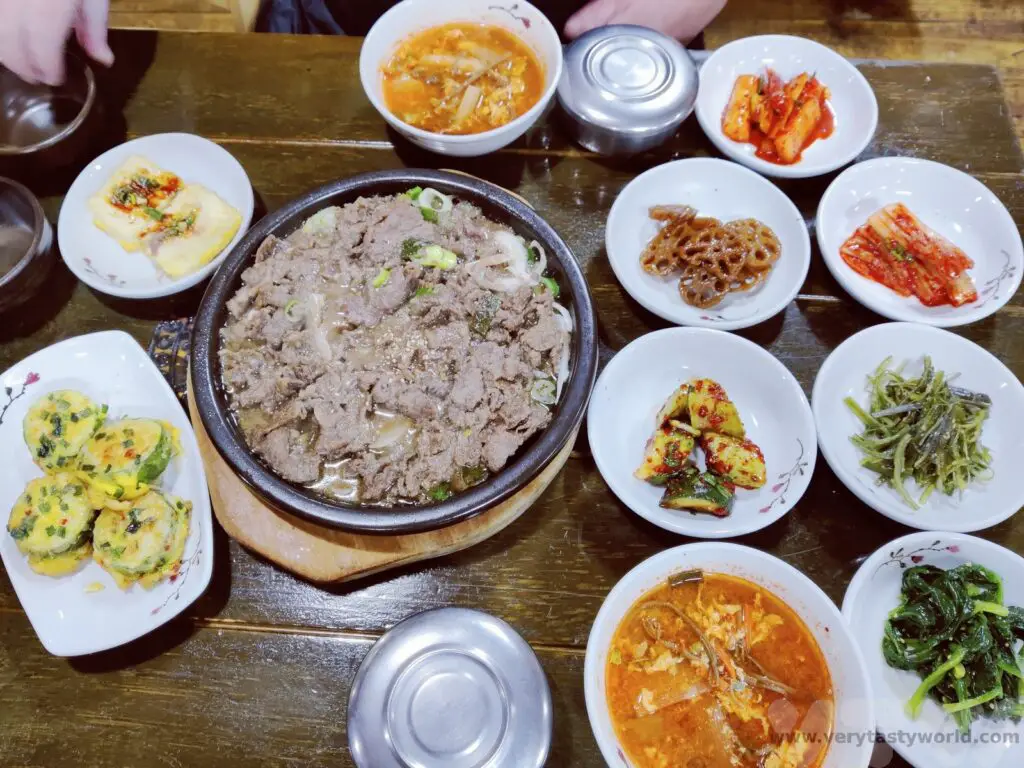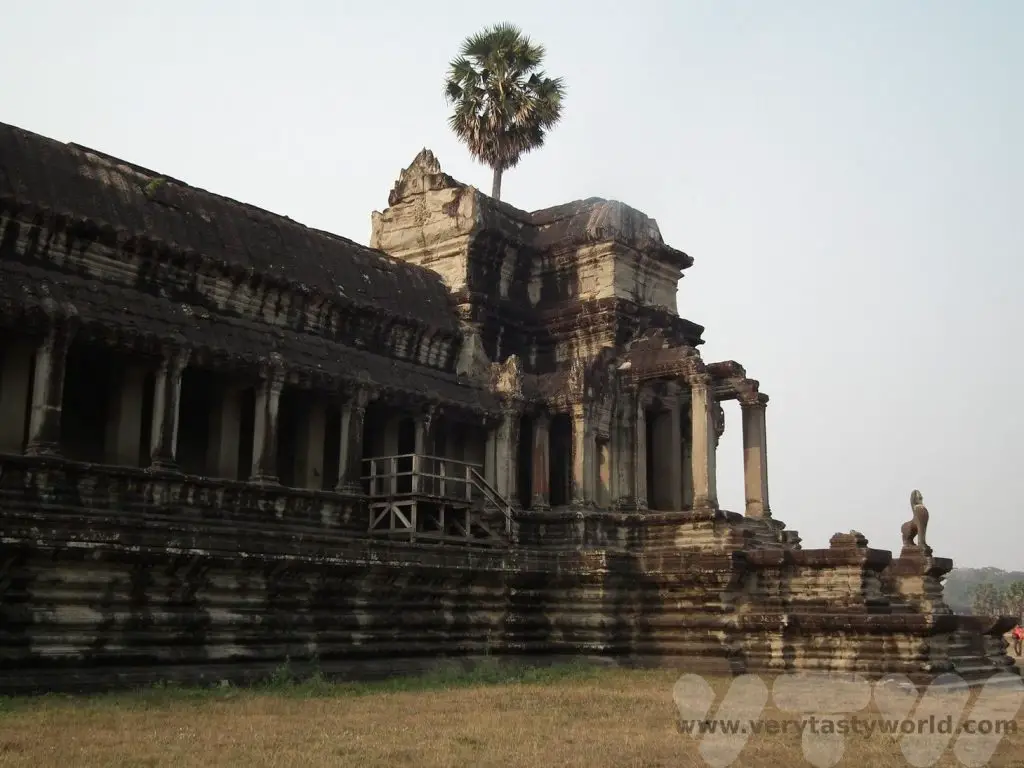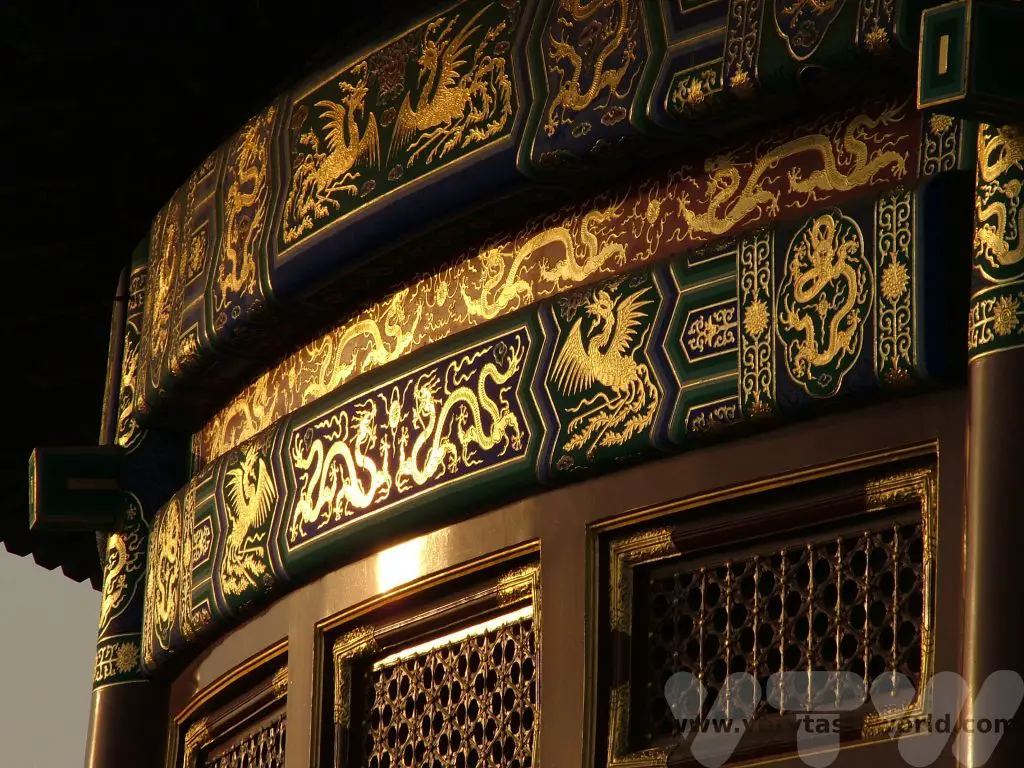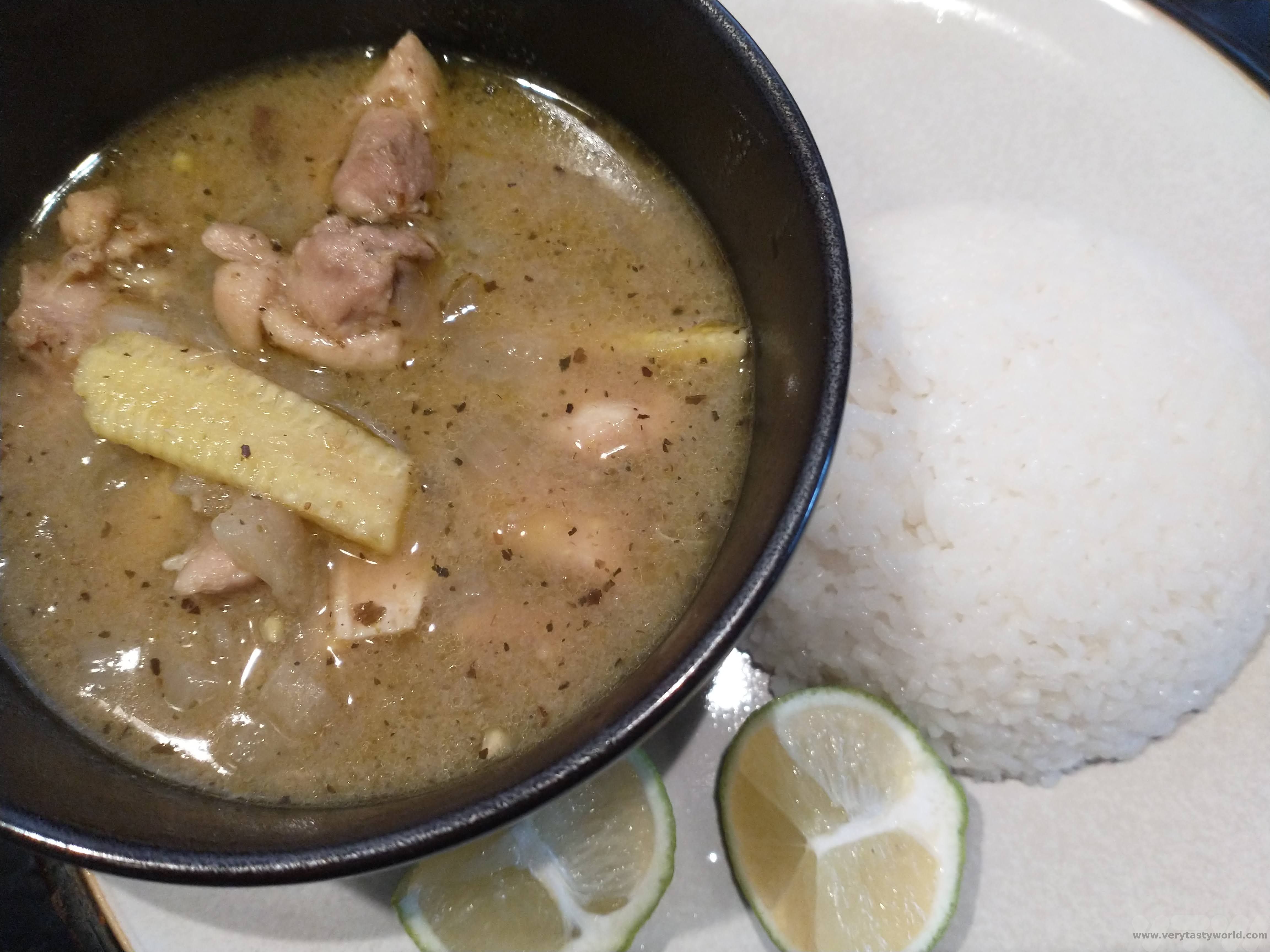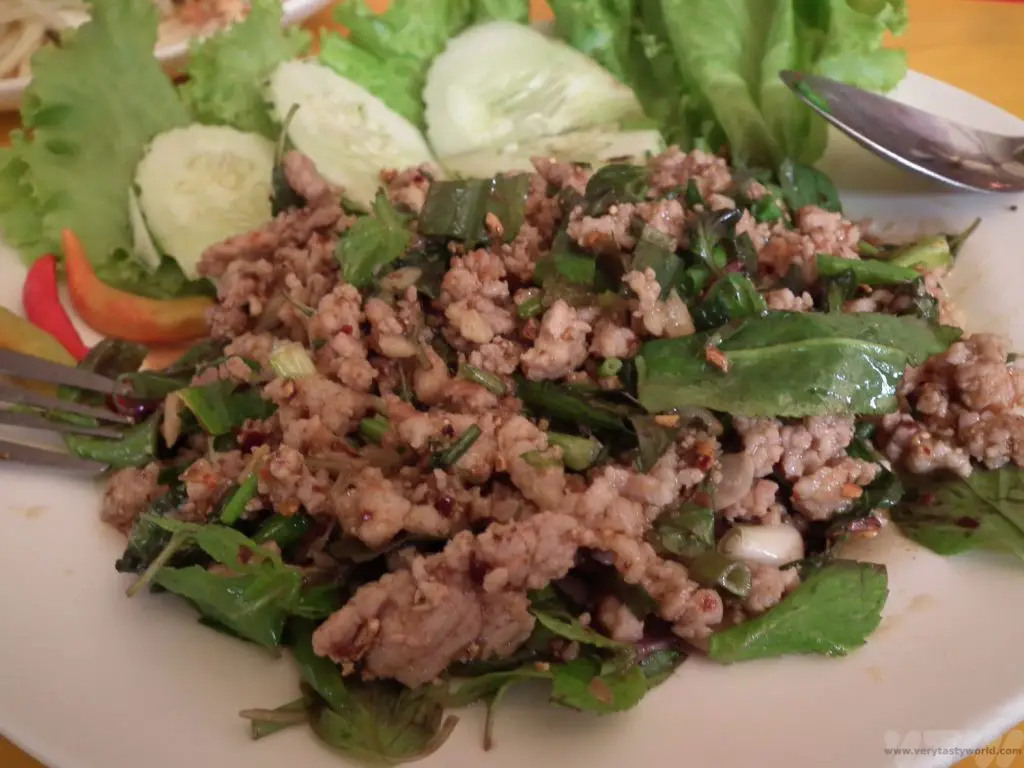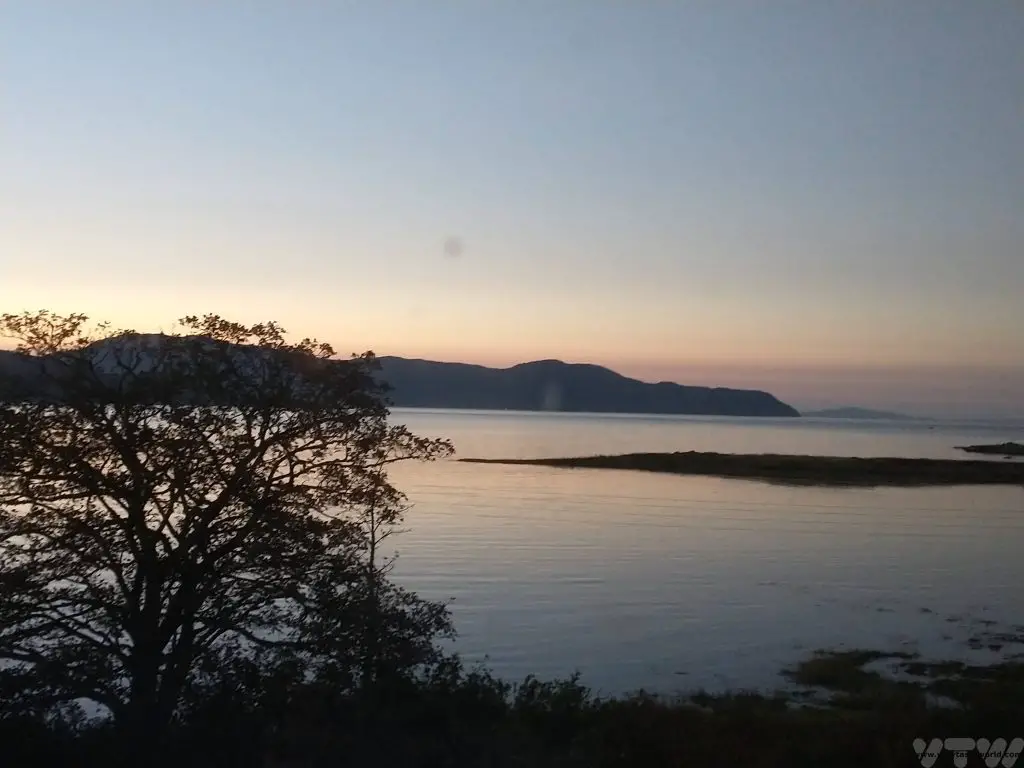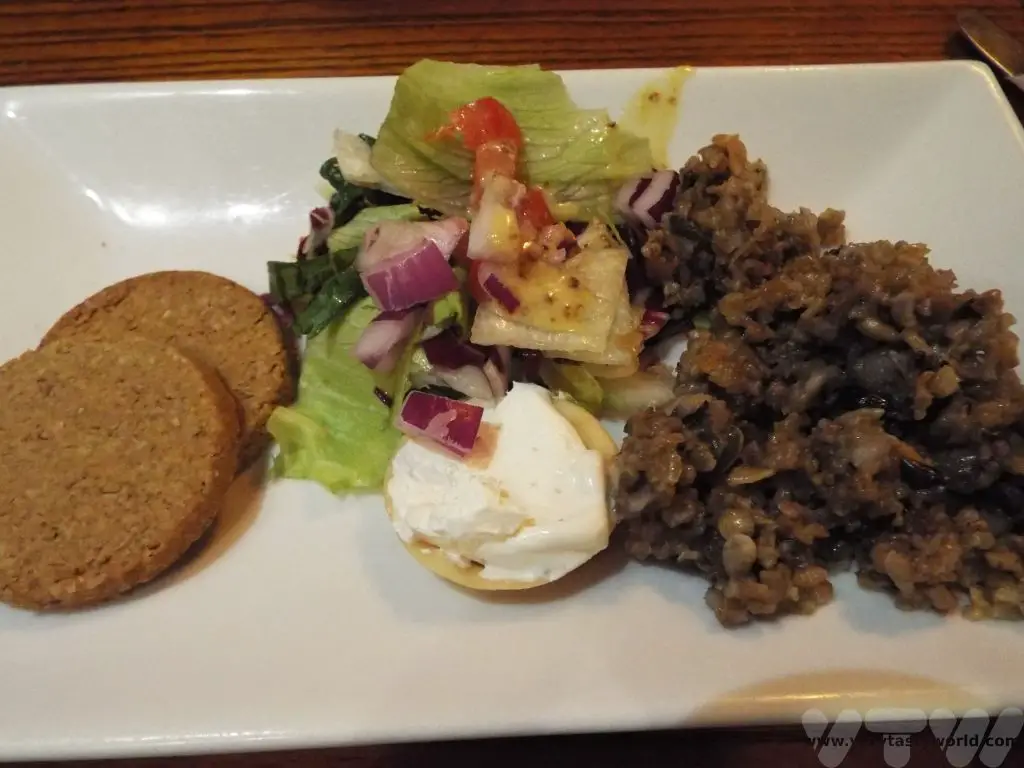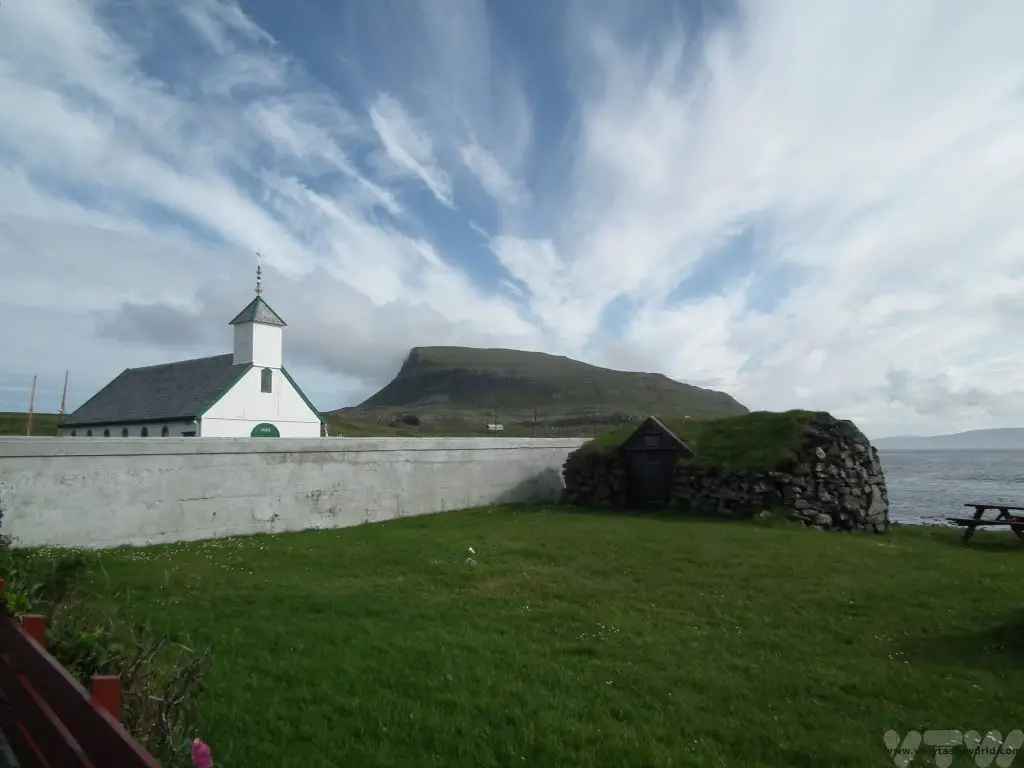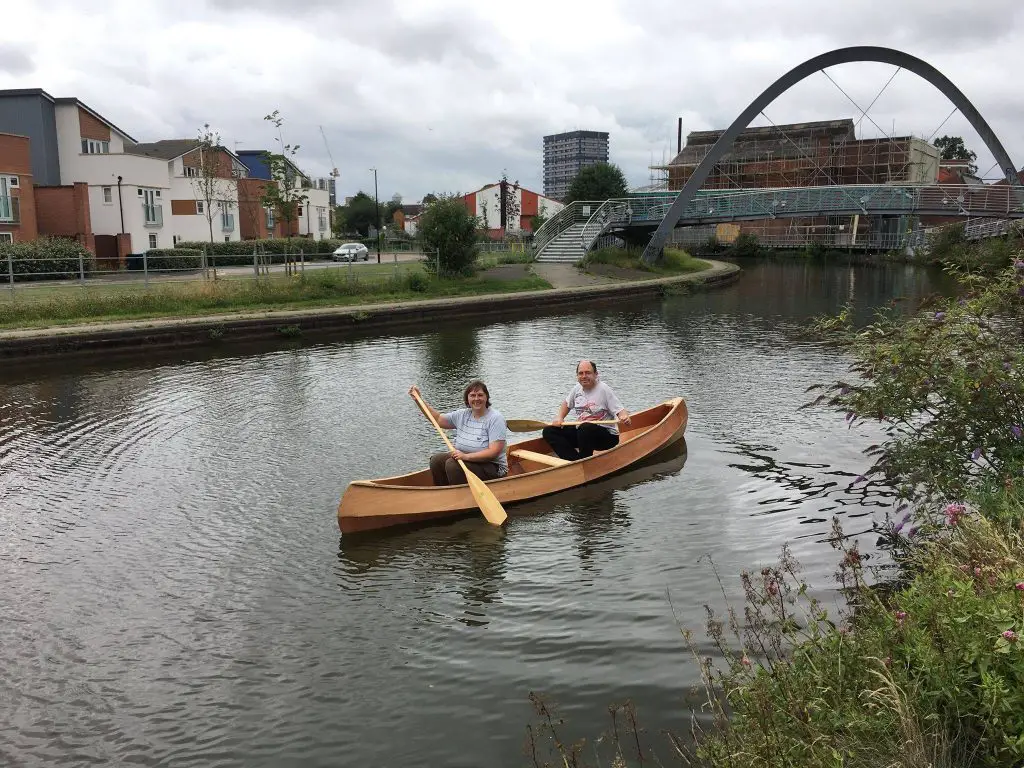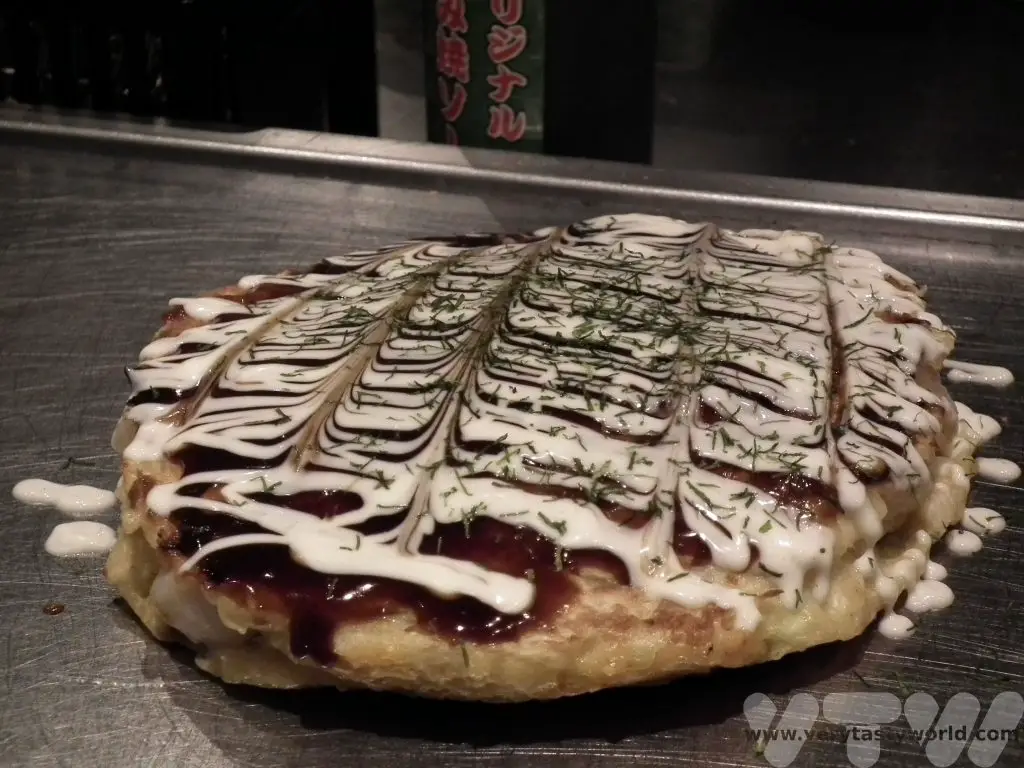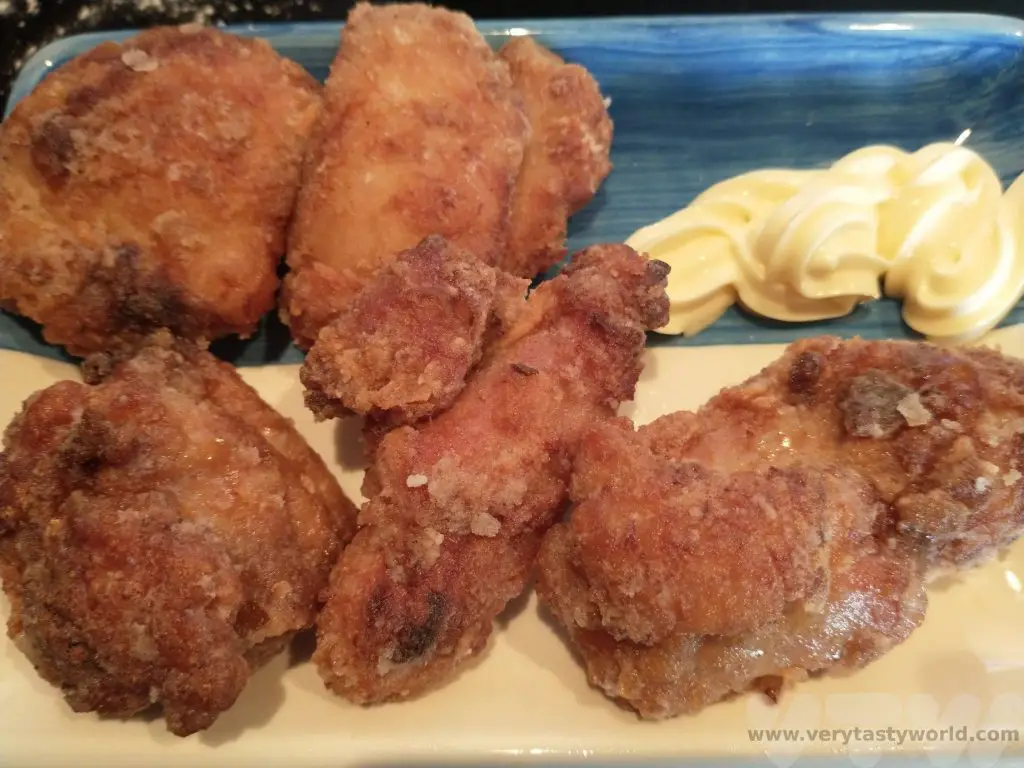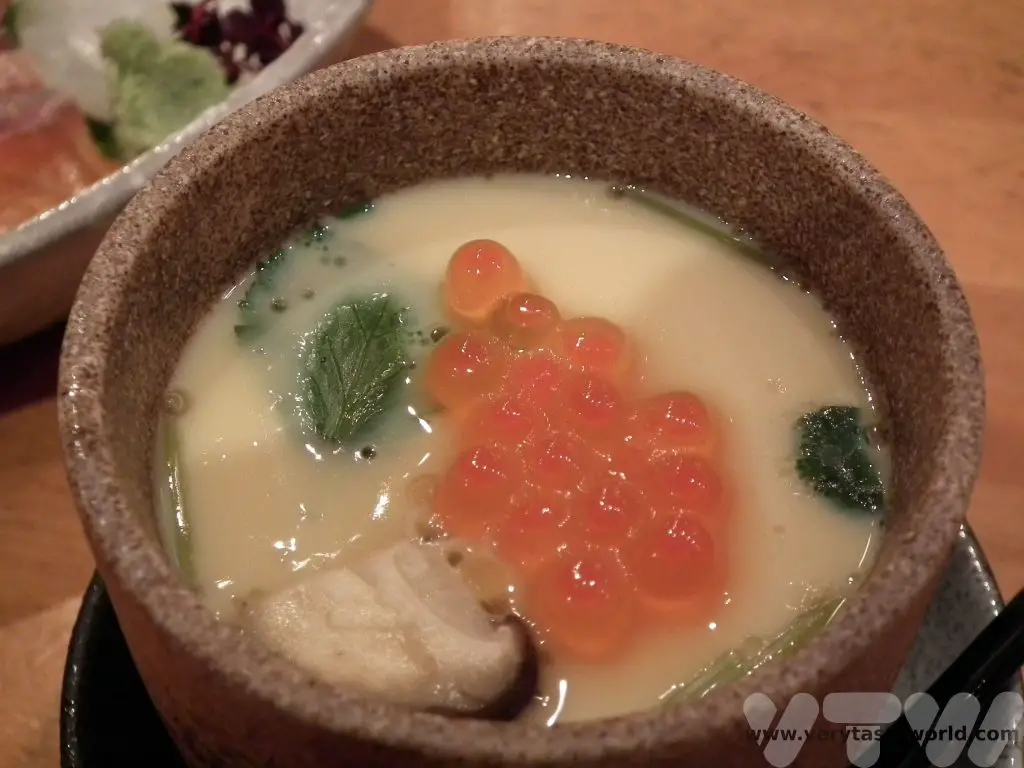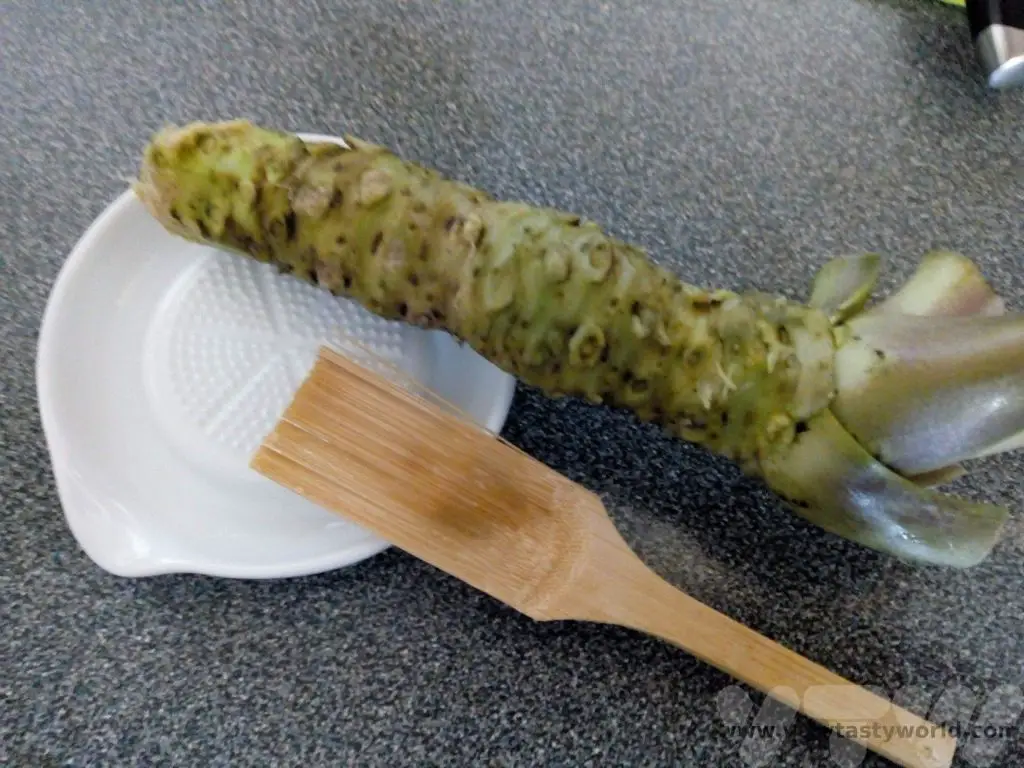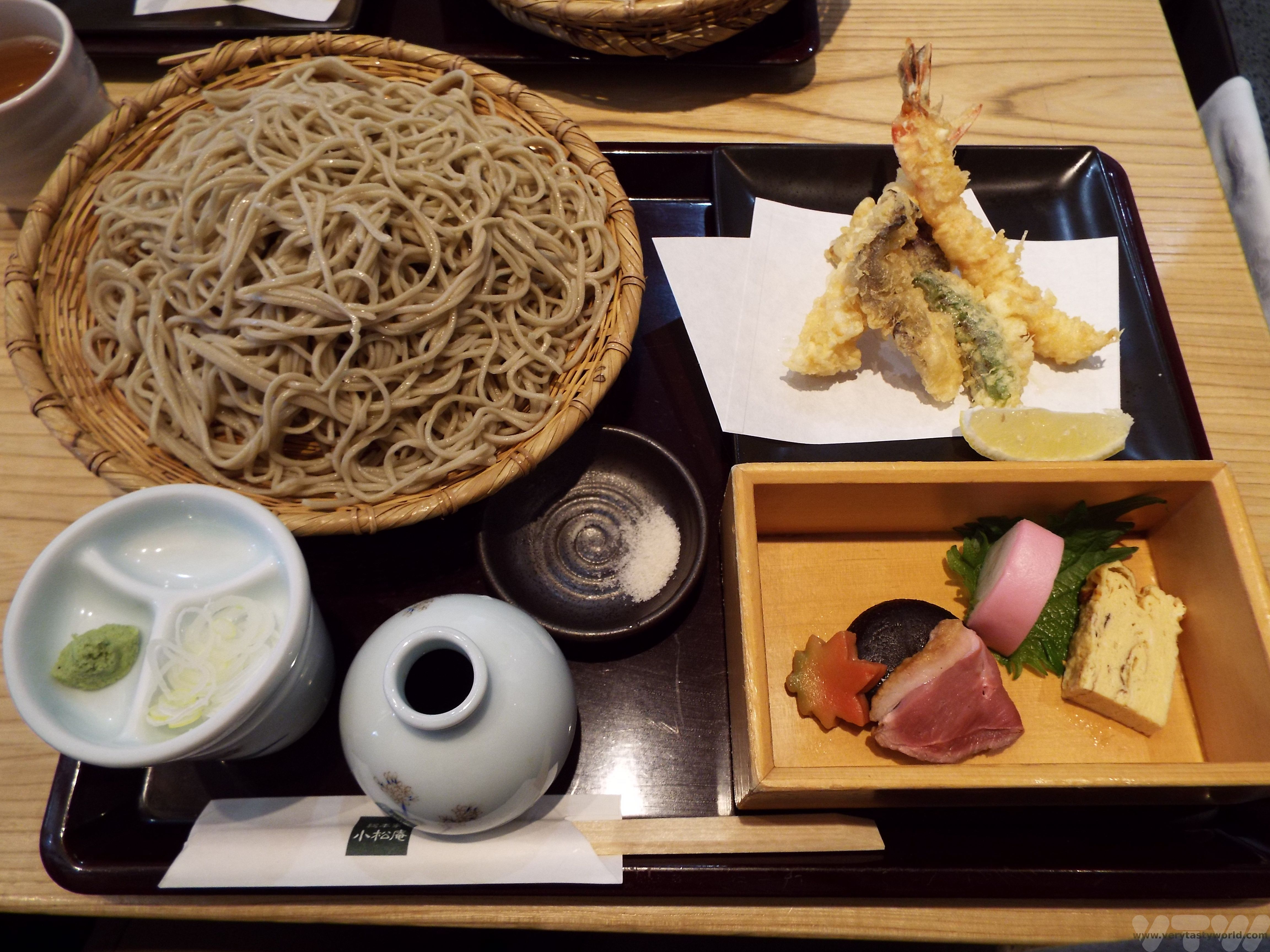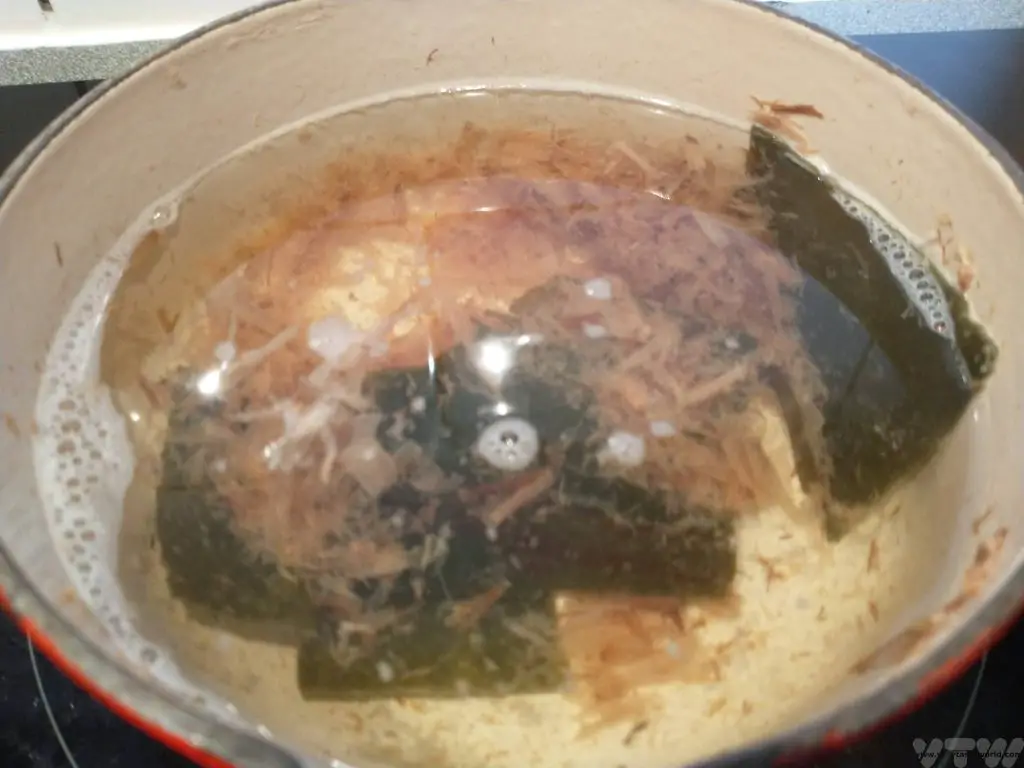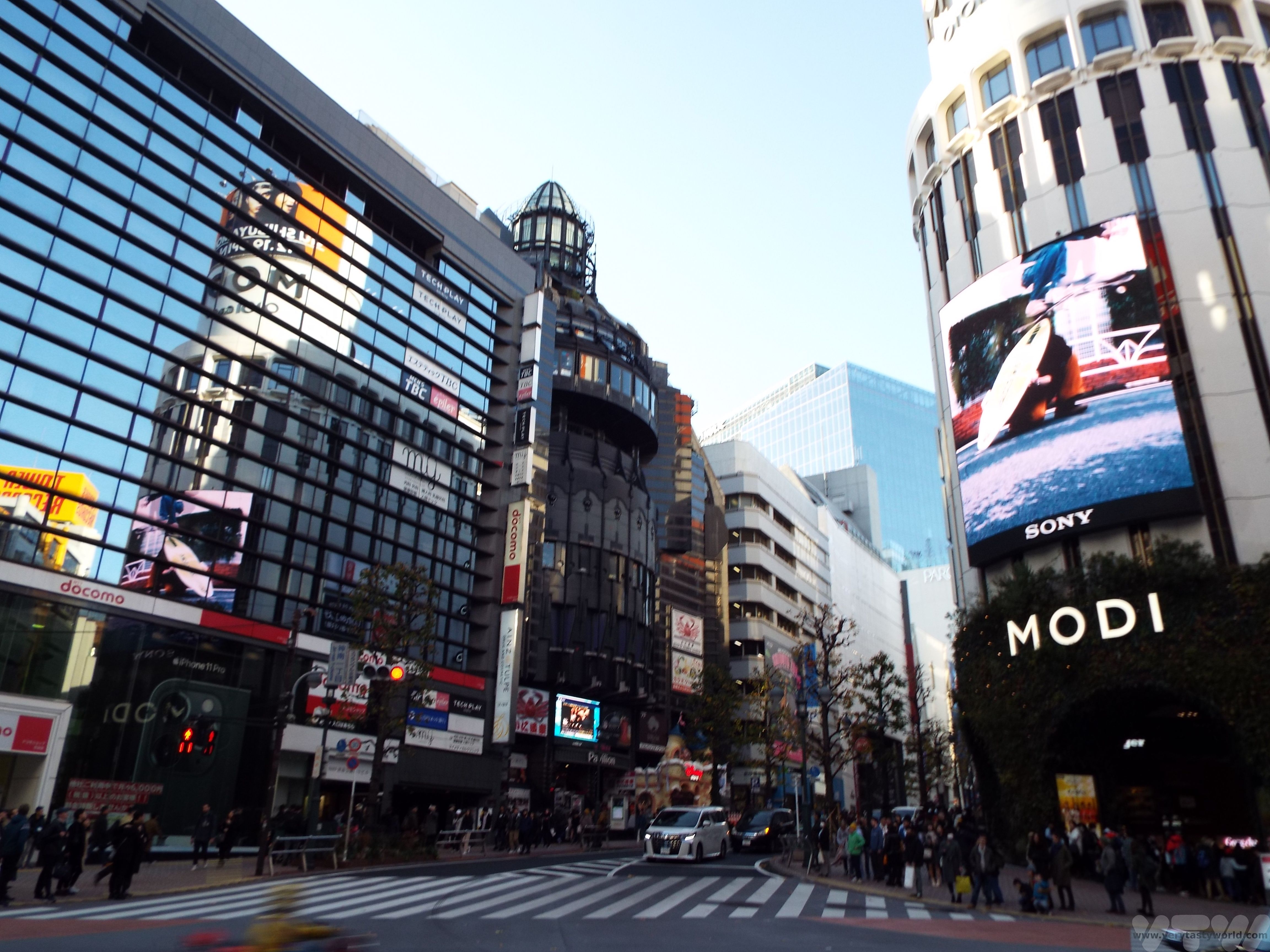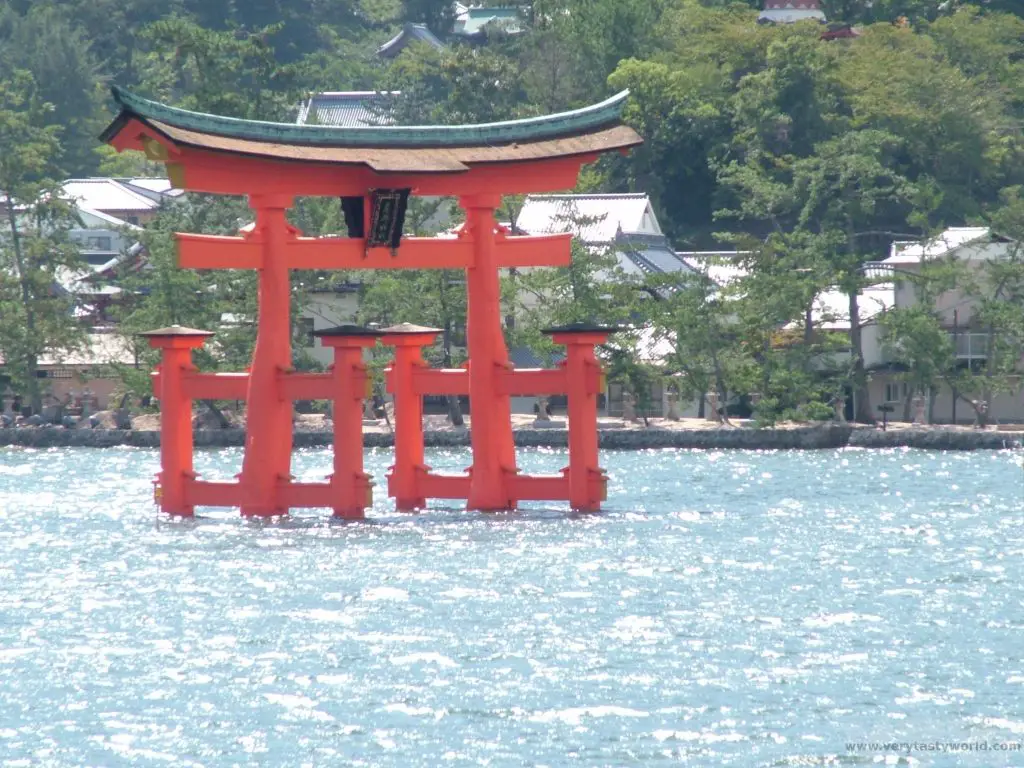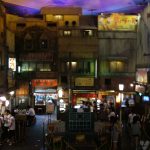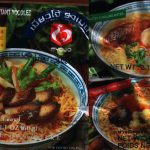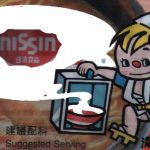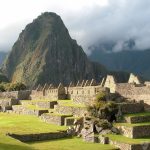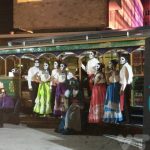Kobe Beef in Kobe – Is It Worth It?
One of the very best things about travelling is tasting the local food. And one local food we had particularly wanted to try on our travels was Kobe beef. But this beef, reputedly amongst the best in the world, is not only known for its deliciousness, it’s also famous for its extremely hefty price tag. We were keen to try this most exclusive of meats when we visited this region in Japan. So is eating Kobe beef in Kobe worth the hype? (With apologies to vegetarians.)
Where is Kobe?
Kobe is located in the Kansai region of Japan (the same region as Kyoto and Osaka) in the southern central area of the main island Honshu, and it is the capital of the Hyōgo Prefecture. It is a port, and one of the cities that opened up to the world in 1868, after Japan’s long period of isolation, and just before the Meiji restoration. It is a lively and cosmopolitan city with plenty of things to see and do.

What Is Kobe Beef?
Kobe beef is one of the world’s most luxurious meats. It’s characterised by the high level of fat content, marbled through the flesh, which means that the meat has both flavour and a sublime melt-in-the-mouth texture.
Like many foods of distinct origin, there are a number of very strict rules to ensure that only cattle bred in a specific region and to the highest standards can bear the name Kobe beef.
The Kobe Beef Marketing and Distribution Promotion Association was established in 1983 with the aim of defining and promoting Kobe beef as a trademark. They were hugely successful – the Kobe beef brand is known worldwide.
The beef is graded using a letter and number system. The letter (A to C) relates to the ratio of meat/fat to the carcass weight of the cow (i.e. the yield) and the numbers (1-5) represent different elements, notably marbling, colour, fat, firmness and texture, 5 being the greatest amount of fat and therefore the tastiest. Remember, fat means flavour! So, A5 beef is the best quality – and the most expensive – that you can get.
Why Is Kobe Beef So Expensive?
The cattle are raised in a way that to give them a stress-free life – the more relaxed the cow, the more tender the meat. It’s a slow process and they are fed a top-quality diet. They are raised naturally over a period of two to three years, which takes time. The cows often have names and usually have a pasture to graze in. Sometimes they are given a brush massage to increase circulation. There are even stories about them drinking beer, but this is a myth.
And, given the success of the branding, you are also paying for the name.
Where to Eat Kobe Beef in Kobe?
We figured that if we were visiting Kobe we really should try Kobe beef while we were there. There are a number of official restaurants in the area close to Sannomiya station. You will see promoters with leaflets wandering the streets and offering deals on meals at specific restaurants.
The Kobe Beef Association has a guide to official restaurants.
We decided to have lunch at Kobe Beef Yazawa Hankyu Sannomiya ten (and not just because Spider-man was clinging precariously to the wall).
The menu was eye-wateringly expensive. Most restaurants in Japan prefer cash to credit cards but the Kobe beef restaurants will happily take cards. We had prepared for a splurge, so closed our eyes, ordered and figured we’d worry about the credit card afterwards – well, within reason!
So What Does Kobe Beef Taste Like?
We wanted to try a variety of dishes, so as to taste the different ways the Kobe beef could be prepared.
You buy the beef by weight and the restaurant has a set of helpful models which indicate quite how much steak you get in each portion. The answer is… that you don’t get much. And 120g of top-grade beef can cost from 9000 to over 29000 Yen ($50-$140) depending on the cut of meat.

The restaurant offered a set menu and we ordered a couple of extra dishes. The beef ‘sushi’ comprised slices of seared raw beef draped lovingly across seasoned sushi rice with just a dab of condiment.

Then a plate of sliced wagyu, decorated somewhat over-fancifully with a dressing and garnishes.

The set menu comprised beef served steak teppanyaki (cooked on an iron griddle) style accompanied by a number of small dishes – including a beef stew with rice and salad and, of course, ubiquitous miso soup.

We were surprised at the western flavours of the beef stew – carrots and broccoli lying atop some braised beef in a rich gravy just didn’t feel Japanese at all. But the beef had been slow-cooked and was so soft you could cut it with a spoon.
The teppanyaki grilled steaks were served more simply. They had been cooked medium rare. We normally like to eat our steak rare but with Kobe beef you need the fat marbled throughout the flesh to melt into lusciousness, so medium rare is the minimum amount of cooking.


Although the dish was plated with sauces, we wanted to taste the meat without any sauce. Soy sauce or salt are flavour enhancers, and wasabi was served as well. Garlic is a popular accompaniment.
How To Keep Costs Lower
We figured that eating Kobe beef in Kobe would at least cut down on transportation/export costs, so we looked for local restaurants.
If you want to go for the all-out Kobe experience, lunch menus are usually much cheaper than dinner. Some restaurants may even include a service charge at dinner time, which is very unusual for Japan. Service charges and tipping are generally not part of the culture.
Also, some of the prices on the menu may not include sales tax, so bear this in mind when ordering.
An alternative Kobe beef restaurant which is a much cheaper option is the Gyu Tan restaurant. This is beef tongue – but from Kobe cattle. It doesn’t have the melt-in-the-mouth lusciousness of steak because the tongue does not contain fat, but it is a lot cheaper and a very tasty meal in itself. Although as soon as we entered the restaurant, the staff were very keen to make sure that we knew we weren’t going to get a steak. It was fine, we had planned to visit this restaurant anyway.

A gyu tan rice bowl accompanied with a delicious consommé was a reasonable price. The tongue is soft and full of delicate flavour.

Alternatives To Kobe Beef in Japan
With Kobe beef you are paying for the name and the fame. But while Kobe beef is the most famous, other delicious varieties of beef are produced in Japan. Matsusaka Ushi from Mie prefecture and Omi beef from the Shiga prefecture are also highly prized.
In the central region, the Japanese Alps, the lovely mountain town of Takayama is a centre for Hida beef. Hida is derived from kuroge wagyu – black cattle. But the meat still has a high level of fat marbling.


It’s very delicious indeed and a lot cheaper, although it is not a cheap eat, we would still class it as a posh meal. The restaurant Maruaki Hida Restaurant in the centre of town, which is attached to a butchers, offered a BBQ. You are presented with a plate of raw beef and veggies and you cook them on the grill.
The only essential condiment was salt – a sprinkling of salt crystals on top of the meat before cooking. Our friendly server showed us how to do this. Salt is a flavour enhancer – it opens your tastebuds and really maximises the flavour of the meat. We found that the unpretentious atmosphere and grilling the meat ourselves (with help if we had wanted it) was much more to our taste and the meat was flavourful without all the fancy garnishes and sauces.
Other Foodie Fun in Kobe
Steamed Pork Buns in Chinatown
Kobe has a large Chinatown. It is here that you can visit Rosyoki and scoff their stunningly good pork buns which are at the opposite end of the pricing spectrum. You will easily find Rosyoki – there’s usually a long, but relatively fast-moving, queue outside.

Their steamed pork buns are a delight – light and fluffy with a juicy pork and flavoursome spring onion filling.


At just 100 Yen for a bun – and we suggest getting a minimum of three – you can help offset any busted budgets from a Kobe beef splurge.
As you enter the restaurant you can see the buns being made on a grand scale. It’s a swift service – order your required number and then pay.

There are seats inside but they are likely to be occupied. However, the restaurant is located in a nice square which has some areas to sit, so it’s okay to munch outside. (Normally in Japan people don’t eat while walking around or standing in the street, but it was fine here.)

Sake Brewing in the Nada District
Kobe is also famous as a centre for sake brewing. Sake is rice wine brewed by fermenting polished rice. A combination of great quality rice, clean local water and a good climate makes the area ideal for brewing this delicately refined alcoholic drink.

There are a number of breweries located in the Nada district. The Hakutsuru Sake Brewery has an adjoining museum which displays exhibitions that show the sake brewing process.



Sake samples are available so that you can taste the different grades of sake. And of course there’s a shop where you can indulge in some bottles of the local brew.
You can also buy a tub of sake ice-cream. This was definitely worth investigating – and was delicious.
Kobe Herb Garden
Kobe has an extensive herb garden located in the Chuo Ward on the slopes of Mount Rokko. You can take the rope-way up the mountainside and walk through the gardens. The slopes are pretty steep, so it’s best to take the cable car all the way to the farthest station at the top and then walk downhill to the bottom rope-way station.

A visit makes for a pleasant afternoon and you can learn about the different uses of Japanese herbs and vegetables that are used for medicinal and culinary purposes.


So, Is Kobe Beef Worth It?
Honestly? While eating Kobe beef was undoubtedly an experience and a delicious one at that, it is extremely expensive. Part of the problem lies with the marketing – your expectations are inevitably incredibly high.
And, although we very much enjoyed our meal, it wasn’t the sublime gastronomic joy we were hoping for, especially given the cost. If you are looking for a good quality meal that is also good value (although that doesn’t mean cheap), Hida beef would be our preference.
And, as Kobe’s pork buns prove, sometimes you don’t need a large, showy establishment with all the high-end posh-restauranty trimmings to enjoy down-to-earth, simple food that is both cheap and utterly delicious.
Related Posts You May Enjoy

- Kobe Beef in Kobe – Is It Worth It?

- World’s Best Breakfasts -Breakfast of Champions!
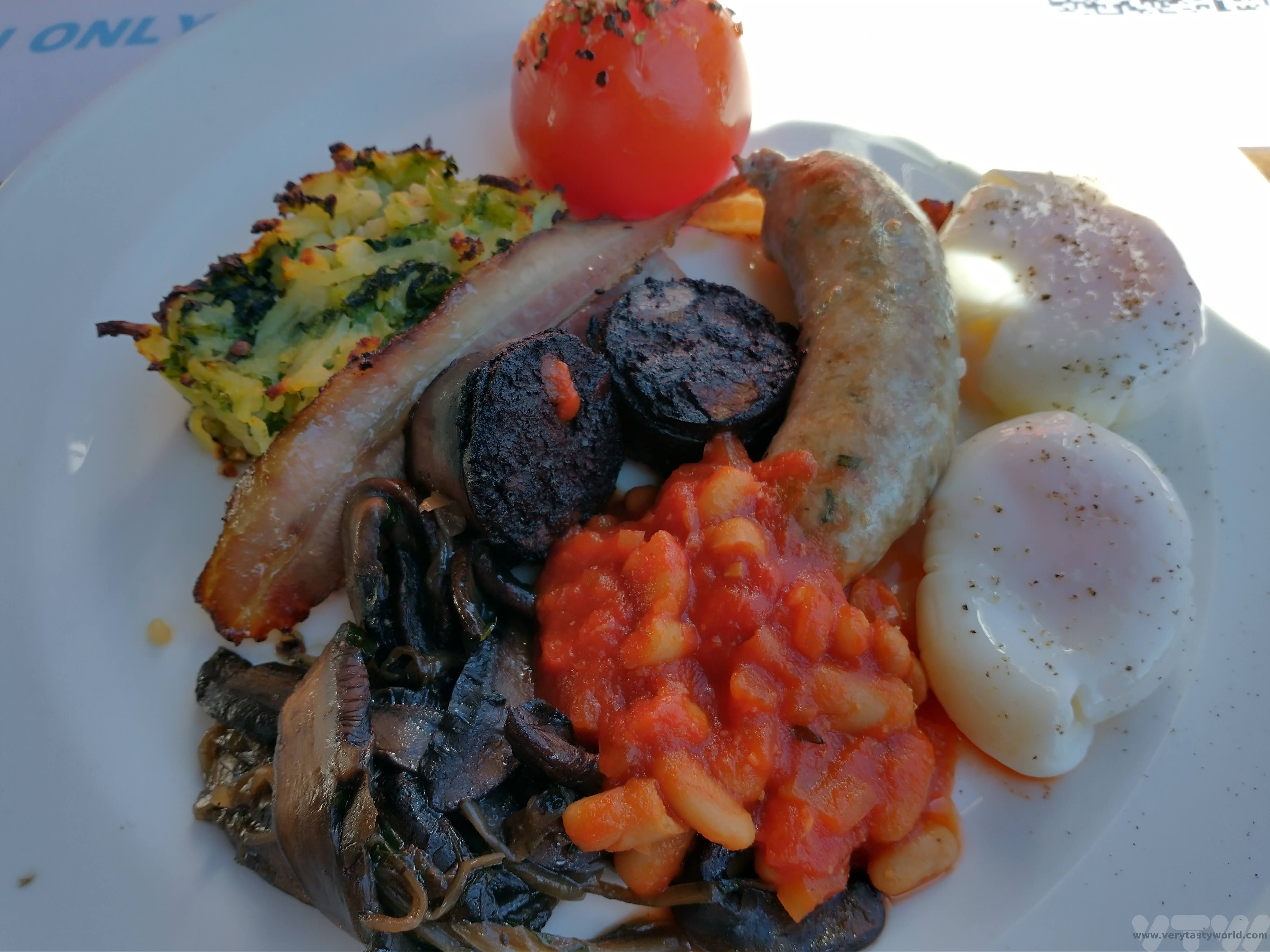
- Recipe: Simmered Shiitake Mushrooms
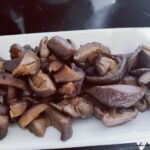
- How to Use Public Transport in Japan

- RECIPE Oyakodon Donburi

- Planning a Trip to Japan
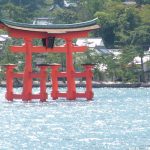
- The Makanai: Cooking for the Maiko House
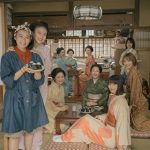
- Setsubun Food – Bean Throwing Day
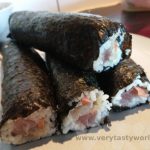
- The Gassho Farmhouses of Rural Japan
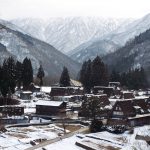

- World’s Best Breakfasts -Breakfast of Champions!
- A One Day Hanoi Itinerary
- Mekong Meanderings
- A Chiang Rai Temple and A Country Retreat
- A Chiang Mai Tour in Northern Thailand
- Sunrise at Angkor Wat & Other Temples To Explore

Thanks so much for reading. We hope you enjoyed this article. If you’d like to keep up to date with new posts and recipes, please subscribe to our newsletter or follow us on social media – X, Facebook or Instagram. We always love hearing from you and would be delighted to read your thoughts about this article.
Setsubun Food – Bean Throwing Day
Feb 3rd is Setsubun in Japan. Which means that it’s mame maki, or bean throwing, day. Setsubun is one day before Risshun – the first day of spring in the lunar calendar. It’s not considered to be the official new year, which is celebrated on the 1st January, but rather a new start. There are various ceremonial activities associated with the festival, including setsubun food.
Traditionally people throw roasted soy beans (fuku mame) at home, with the shout of ‘oni wa so to’ (get out demons!) and ‘fuku wa uchi’ (come in happiness!) Sometimes the beans are just thrown out of the front door but they may also be thrown at a family member wearing an oni – demon – mask. If people eat the number of fuku mame that’s equal to their age it’s believed that they will be healthy and happy for the year ahead.
Bean throwing ceremonies also take place at shrines across Japan. The Senso-ji temple in Asakusa will have thousands of visitors arrive to take part. Celebrities and sometimes sumo wrestlers are known to turn up to some of the events.
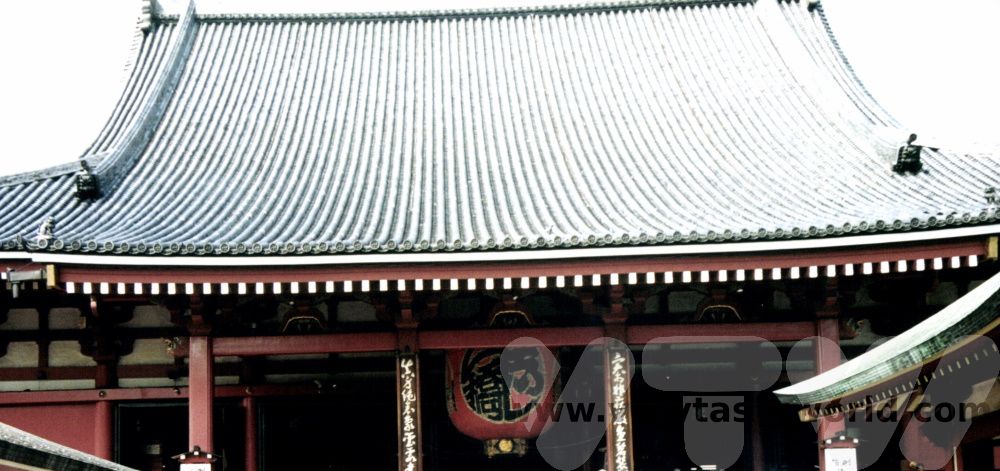
Setsubun Food Tradition
Over the years a foodie setsubun tradition has developed. This is thought to have originated in the Kansai region, in Osaka (always a great place for foodies!) and has become more popular throughout Japan over the years.
It involves eating ehomaki (good luck direction rolls) which are sushimaki rolls that haven’t been cut up. The idea is to eat the roll while facing in the lucky direction. You will need a compass because the direction is quite specific. Last year was the year of the rabbit and therefore the direction was south-south-east. 2024’s direction is east-northeast for maximum luck.
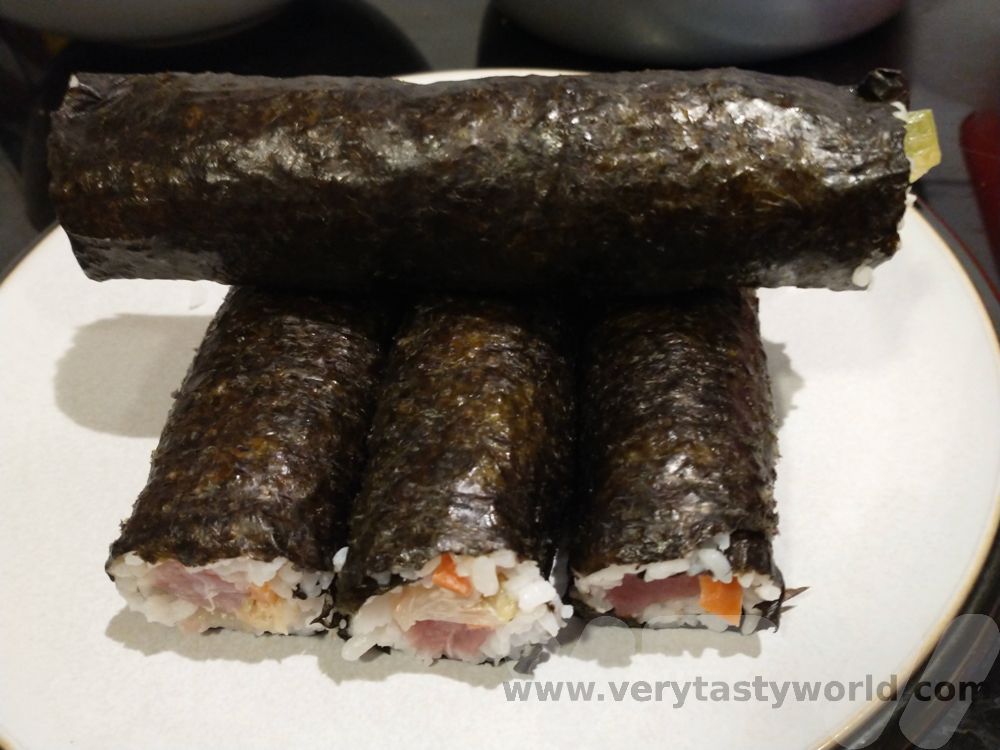
We often make maki rolls using a bamboo rolling mat. They are the easiest sushi to make, even for clumsy cooks such as we. When you’ve had a go at making nigiri or gunkan sushi you realise why it takes 10 years to train as a sushi chef!
There are lots of options for ehomaki filling. One of our favourites is maguro tuna with spicy kimchi and mayo.
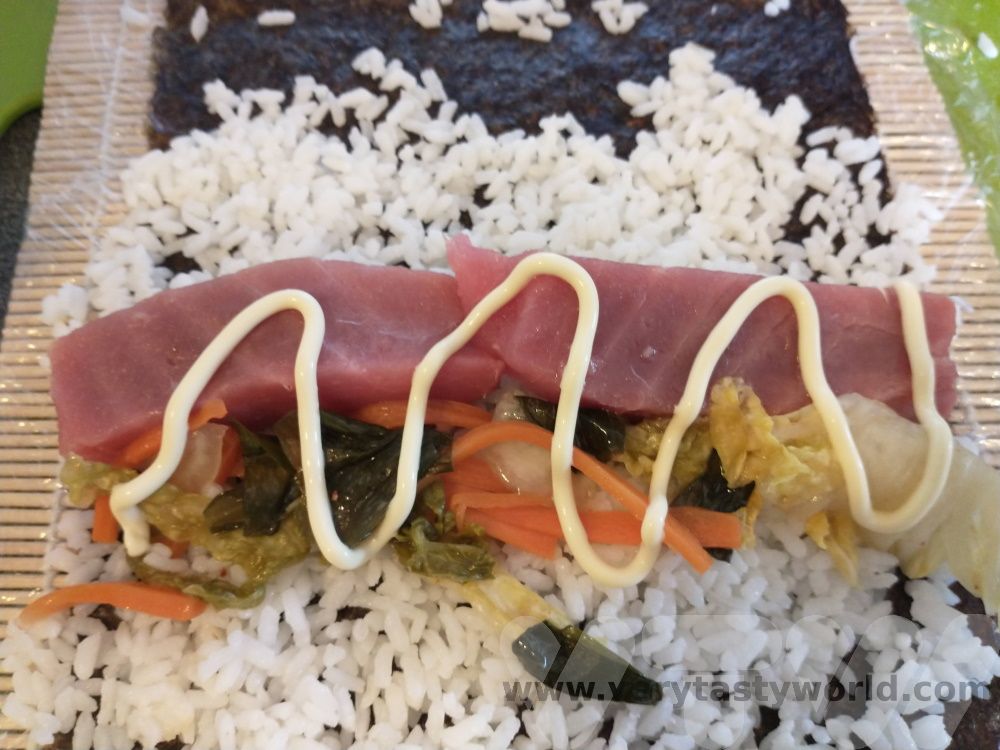
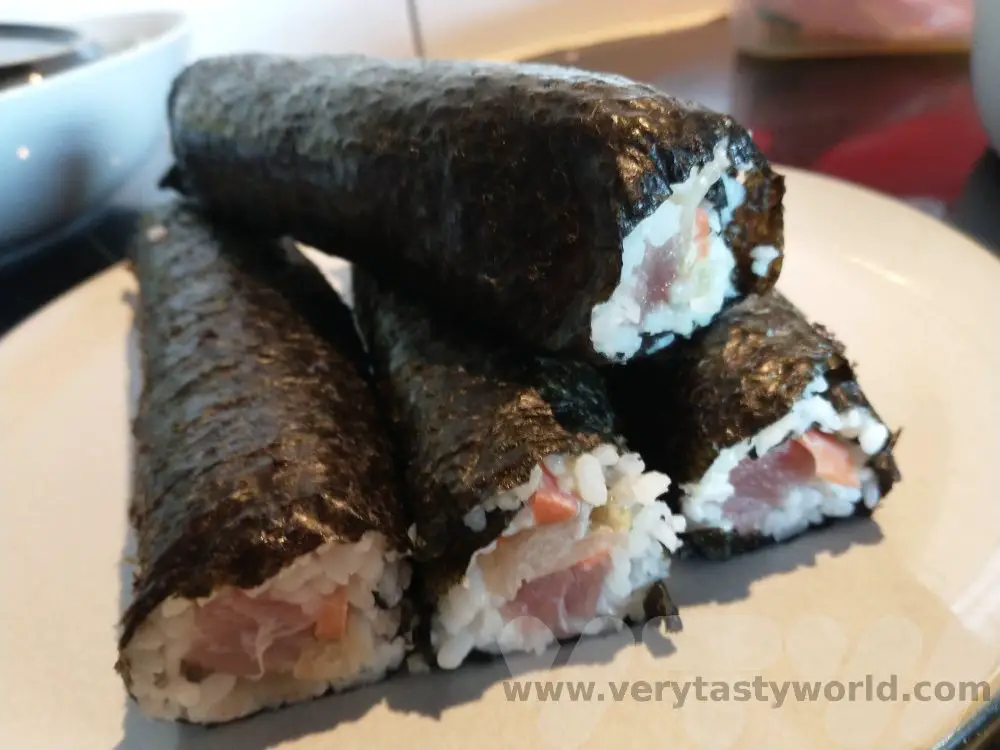

- Kobe Beef in Kobe – Is It Worth It?

- World’s Best Breakfasts -Breakfast of Champions!

- Recipe: Simmered Shiitake Mushrooms

- How to Use Public Transport in Japan

- RECIPE Oyakodon Donburi

- Planning a Trip to Japan

- The Makanai: Cooking for the Maiko House

- Setsubun Food – Bean Throwing Day

- The Gassho Farmhouses of Rural Japan


- RECIPE: How To Make Elderflower Champagne
- RECIPE Oyakodon Donburi
- Zero Waste Recipes Before Your Holiday
- RECIPE: Vegetable Biryani Tamil Nadu Style
- RECIPE: Vegan Wild Garlic Pesto
- Recipe: Venetian Pasta Sauce
- RECIPE: Biryani Raita Recipe
- RECIPE: How to Make Costa Rica’s Gallo Pinto
- Recipe: Japanese Simmered Pork Belly – Buta no Kakuni
A Chiang Mai Tour in Northern Thailand
Chiang Mai is the largest city in northern Thailand and is a lovely place with a very laid back vibe. There are plenty of things to see and these aren’t just confined to the city itself. There are loads of activities to suit all interests – whether cultural or natural – both around town and into the wider countryside. It’s definitely worth spending time exploring this lovely city and surrounds, whether on an organised Chiang Mai tour or exploring independently. We spent five days in and around the region and combined our own exploration with some guided walks which were great for understanding the history of this delightful city.
An Old City With Walls and A Moat
Chiang Mai was founded by the Lanna King, Mangrai, in 1296. The Lanna people were from Northern Thailand and the name translates to ‘Kingdom of a Million Rice Fields.’ Mangrai had established the city of Chiang Rai in 1262 as the capital of his kingdom and later, following both friendship pacts and wars with other local kingdoms, he moved further south. Due to its location Chiang Mai was vulnerable to invasion from the Taungoo Dynasty of the Bamar People (from Myanmar) and the Mongol empire. As a result it was heavily fortified with both a moat and a high city wall, which remain to this day. The old city is surrounded by an extremely pretty walled canal with four gates.
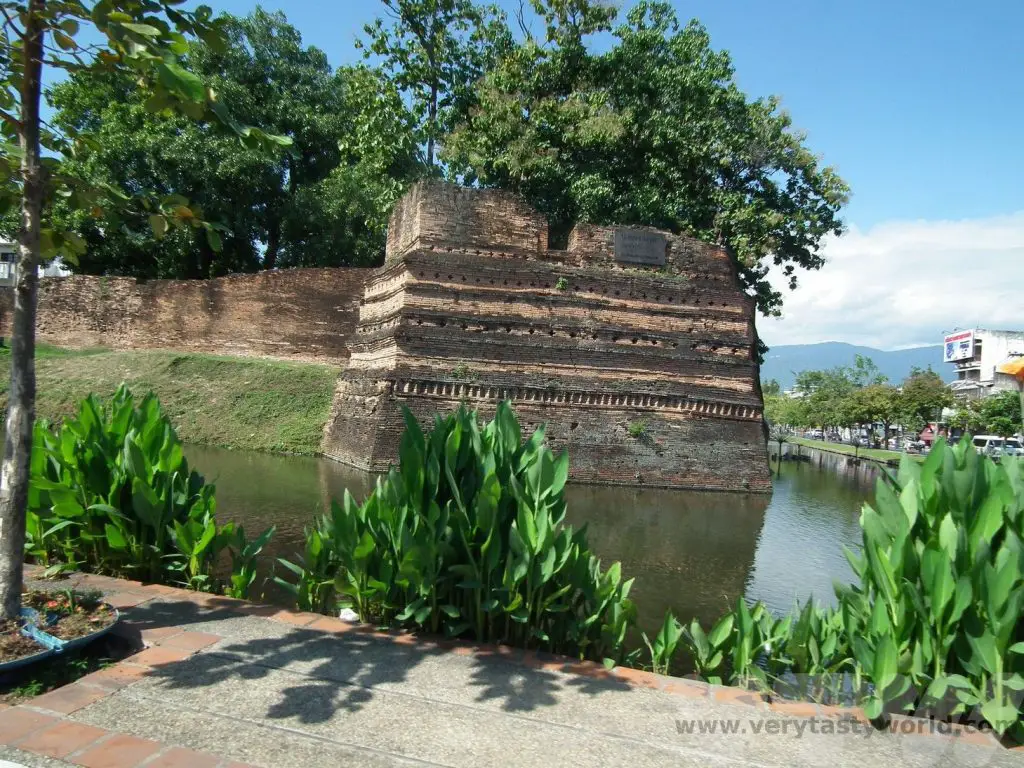
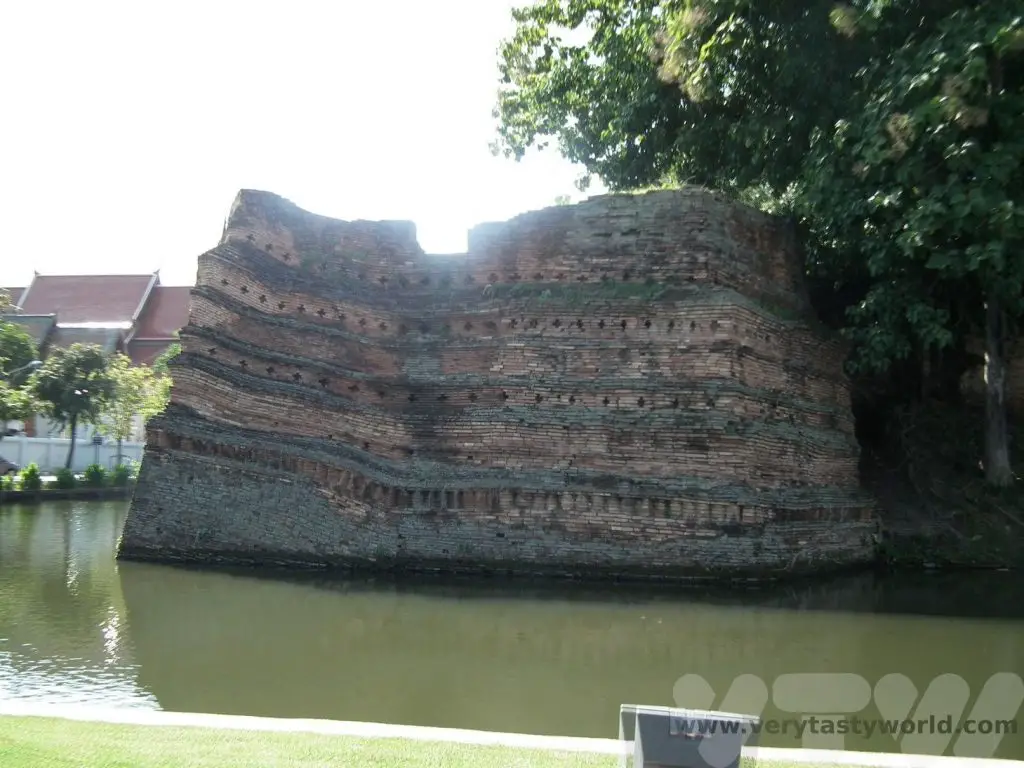
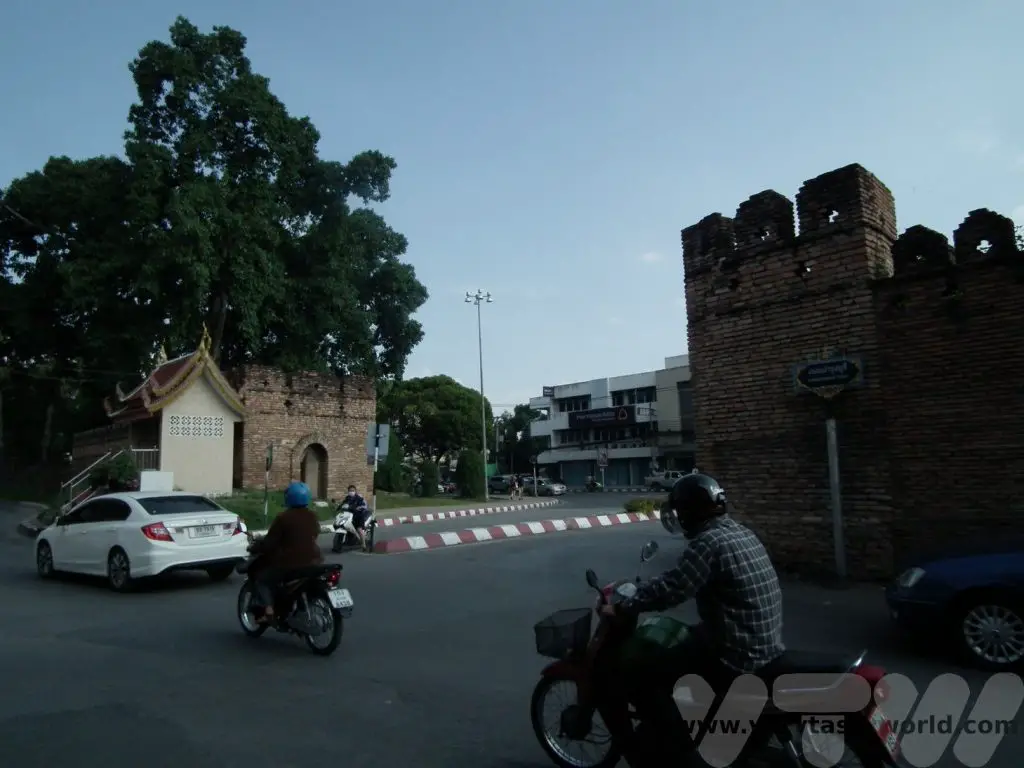
Old Town Chiang Mai Temples
Chiang Mai has well over a hundred temples and it is a pleasure just wandering through the city to discover the many gems that the city to offer.
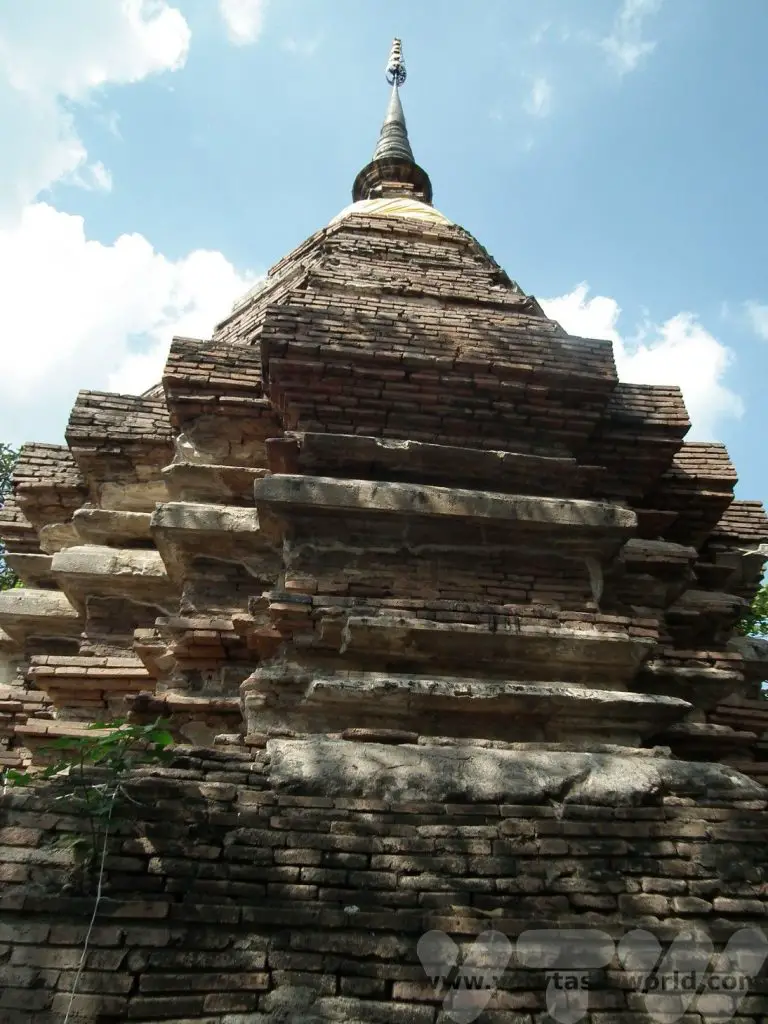
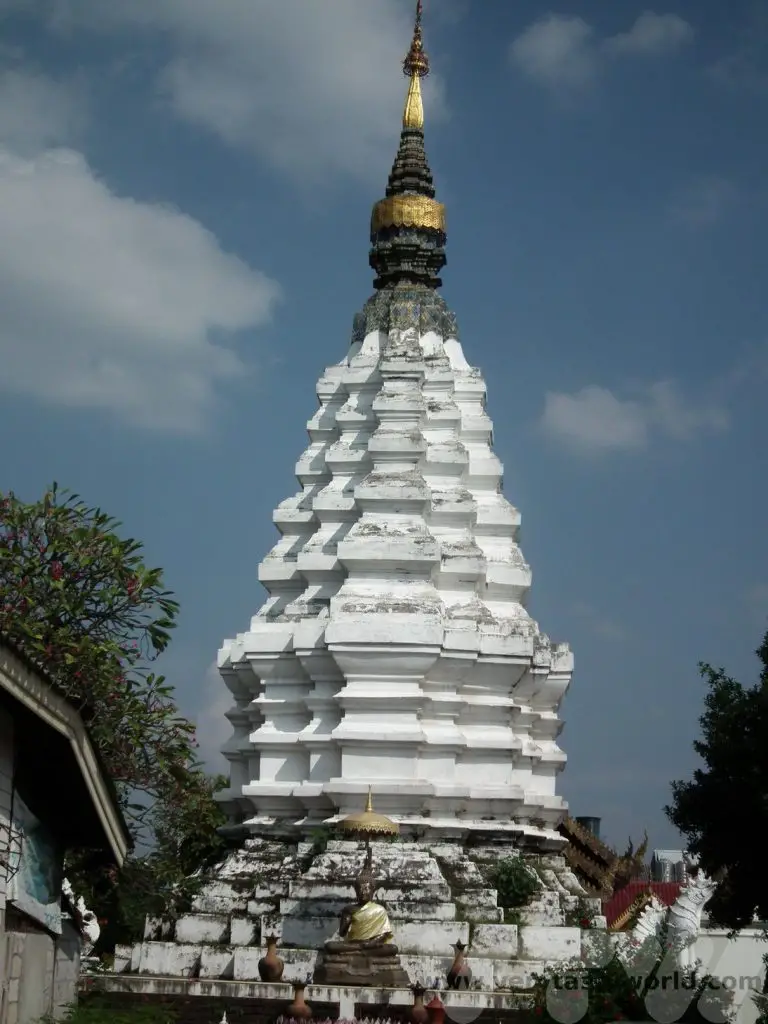
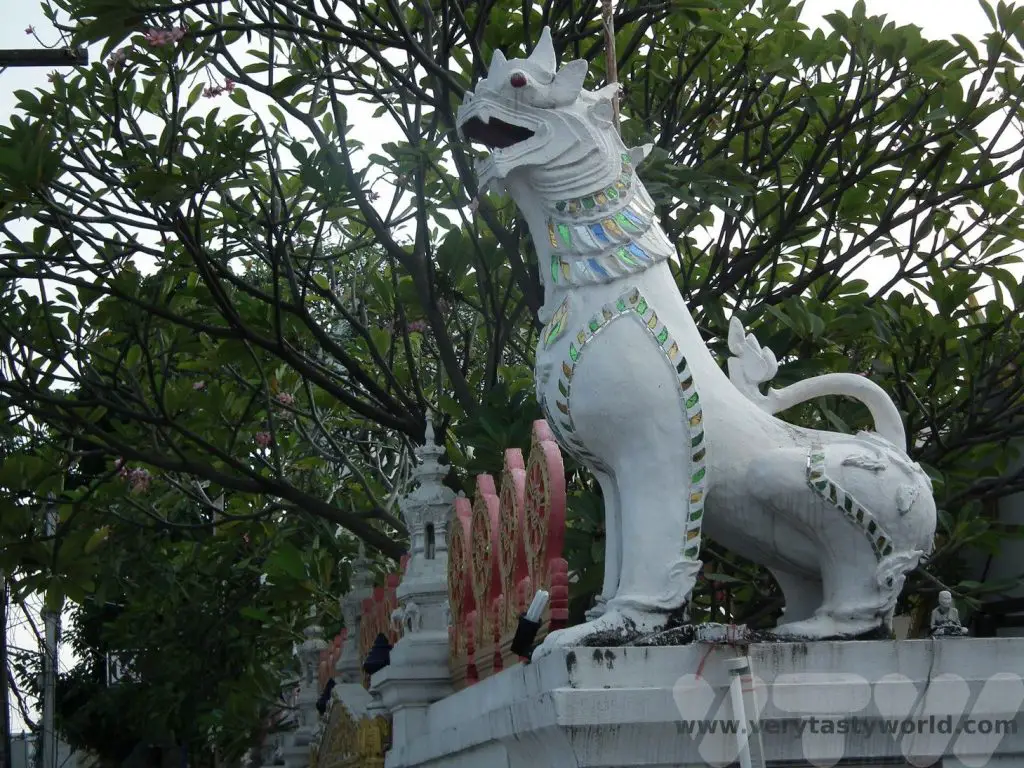
Wat Chiang Man
Wat Chiang Man is the city’s oldest temple, located by the north east corner of the walled old city. It was constructed at the behest of King Mengrai.
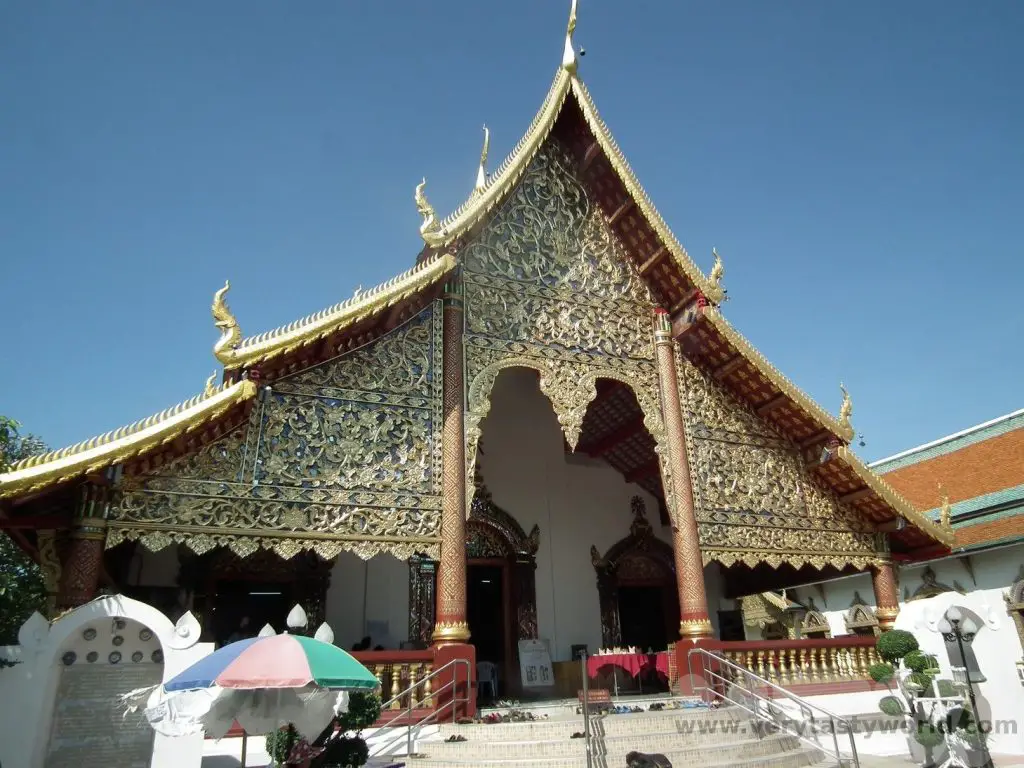
The wihan of a temple is the assembly hall and there are two at Wat Chiang Man. Both contain very old and highly revered Buddhas.
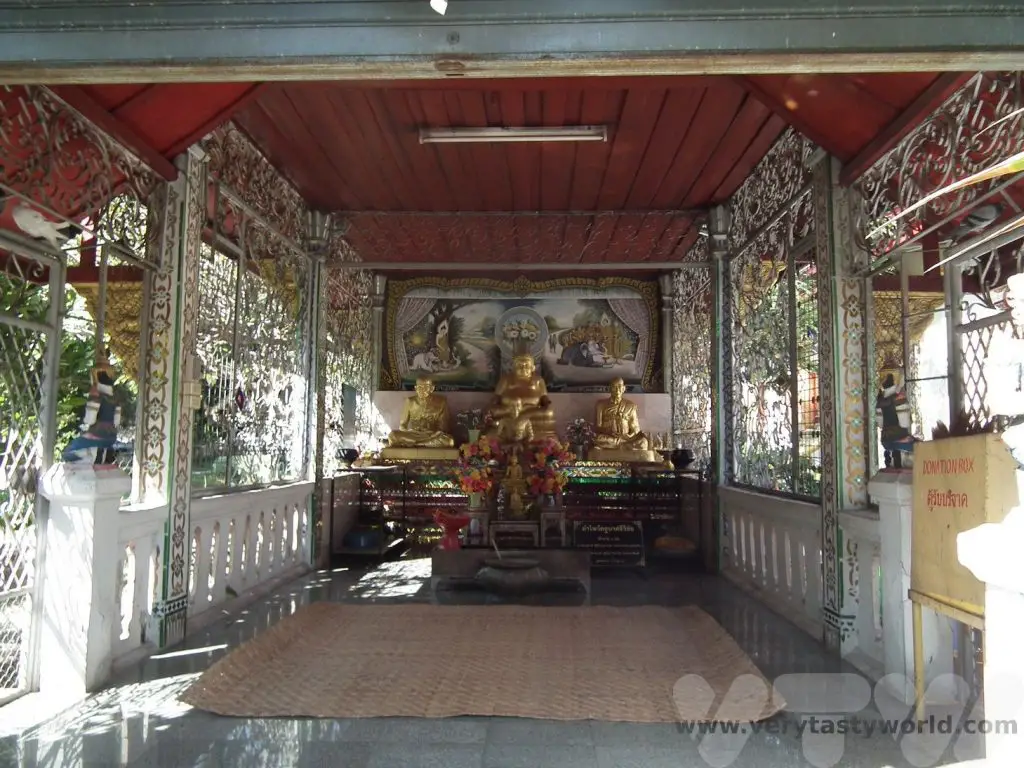
The chedi, also known as a stupa, is traditionally the oldest part of a temple. Wat Chiang Man has an elephant chedi, called Chedi Chang Lom, where fifteen stone elephants support the golden relic chamber.
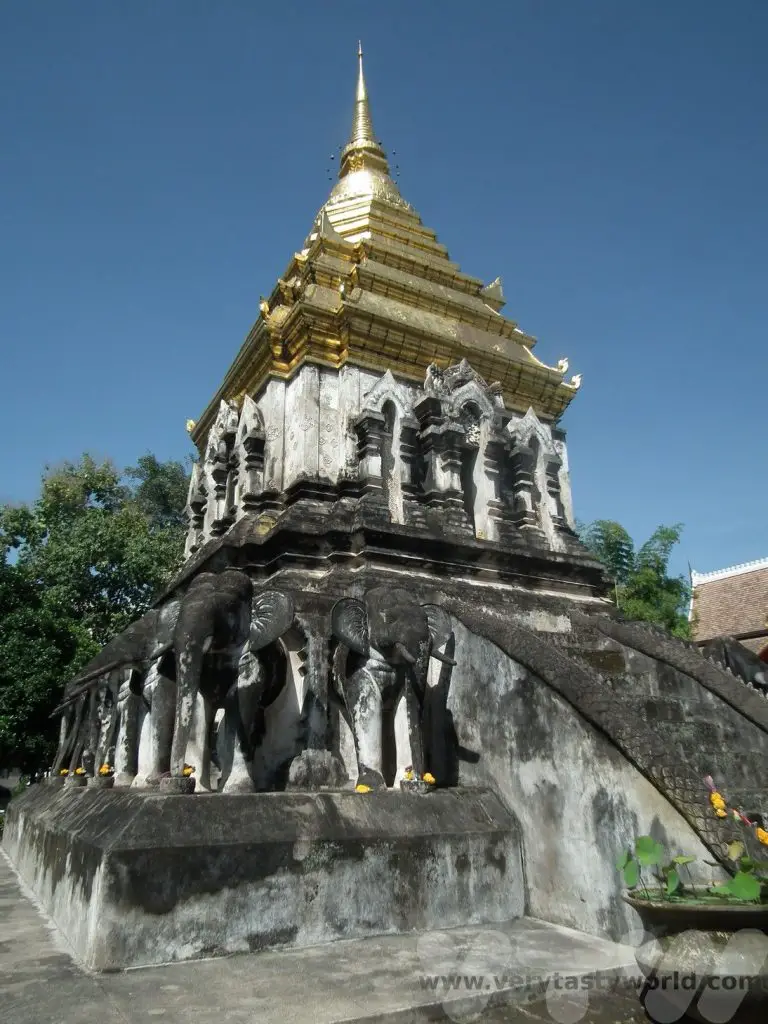
Wat Phra Singh
Another important temple, Wat Phra Singh, was constructed in 1345 by King Phayu, the fifth Mangrai king, who wanted to build a chedi for his late father’s ashes. It was enjoying a face-lift when we visited, so we didn’t see it in its full glory.

Wat Phra Singh Wihan Lai Kham was constructed to house the precious Phra Buddha Singh statue.
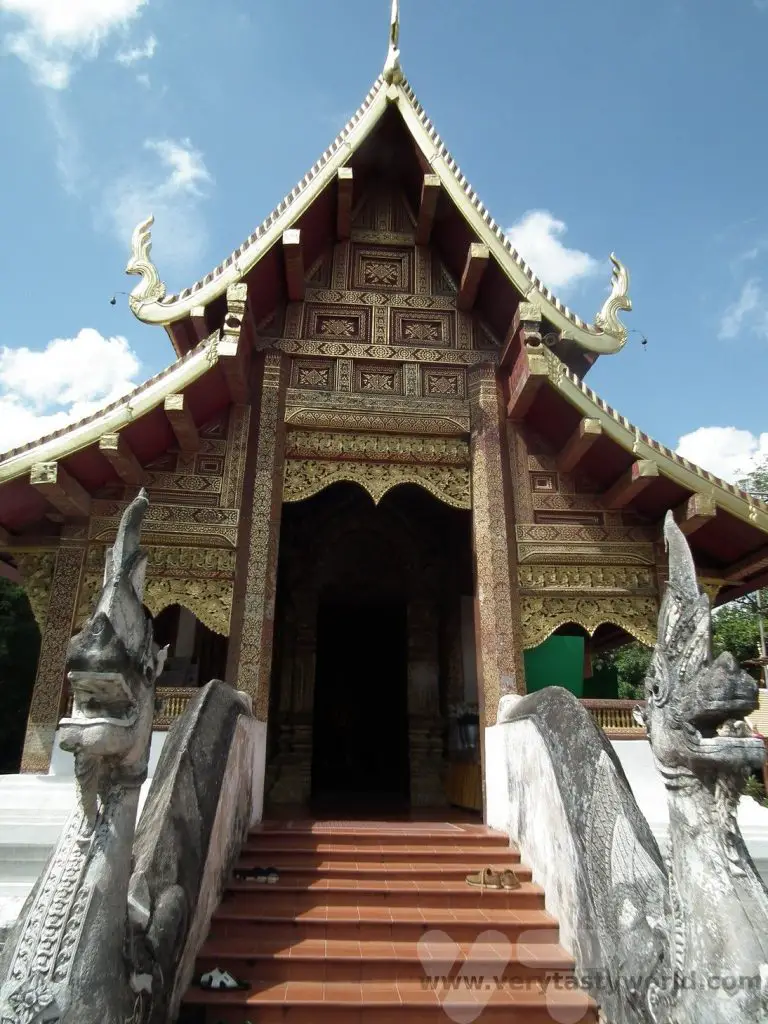
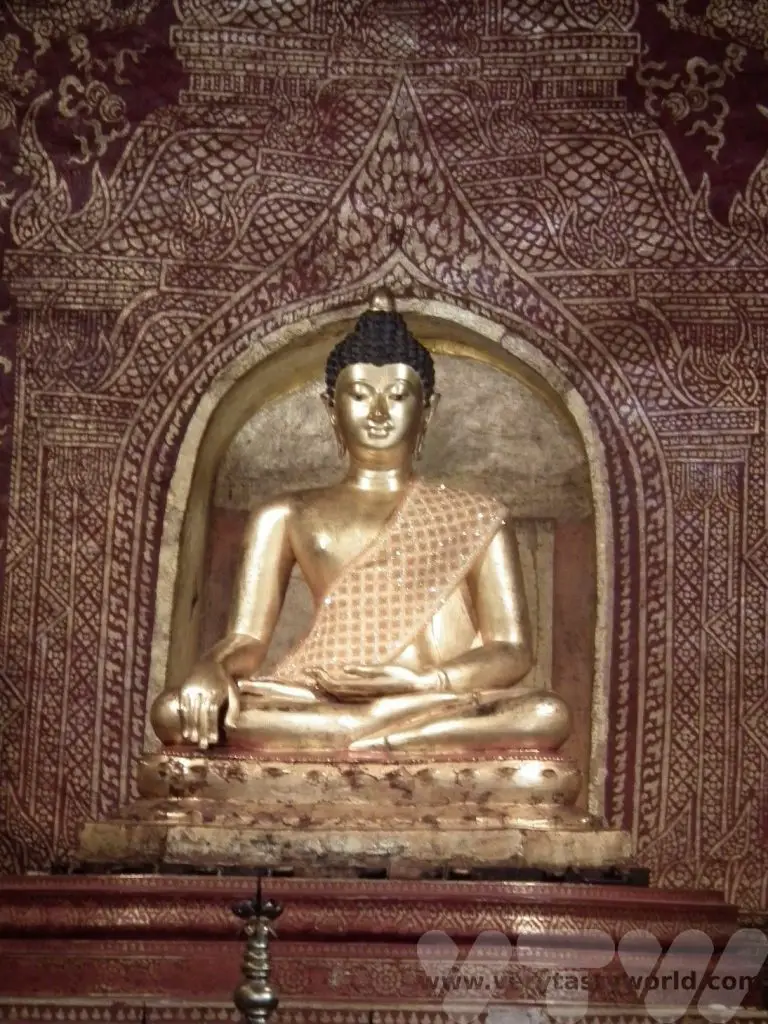
The interior also contains some fascinating murals.
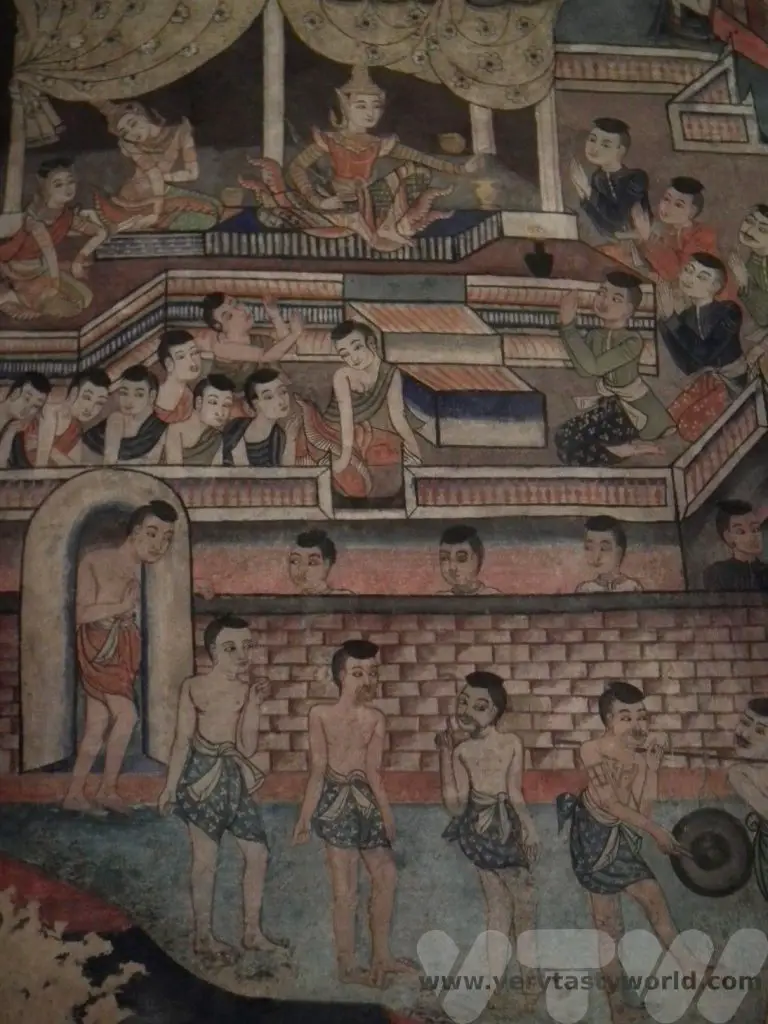
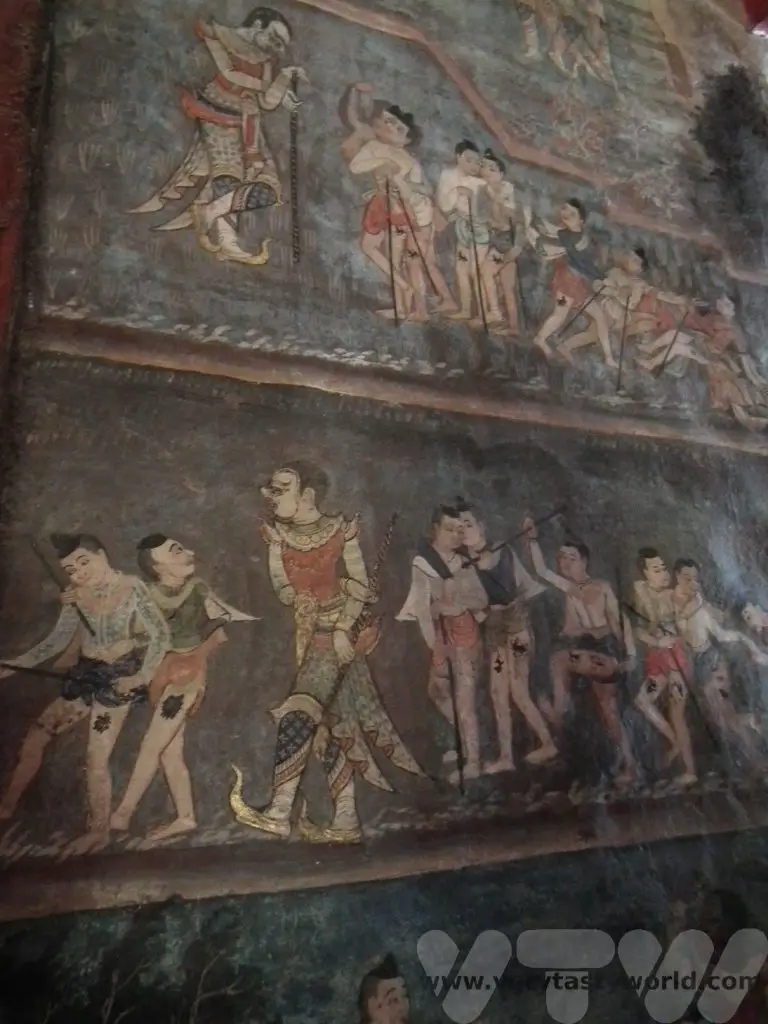
A common – and striking – characteristic of many temples in Thailand are the naga – semi-divine creatures that are a cross between a human and serpent. These are the guardians of the temple – they may look dramatic and a scary but their purpose is generally thought to be protective. It wouldn’t be appropriate to have a holy place guarded by demons.
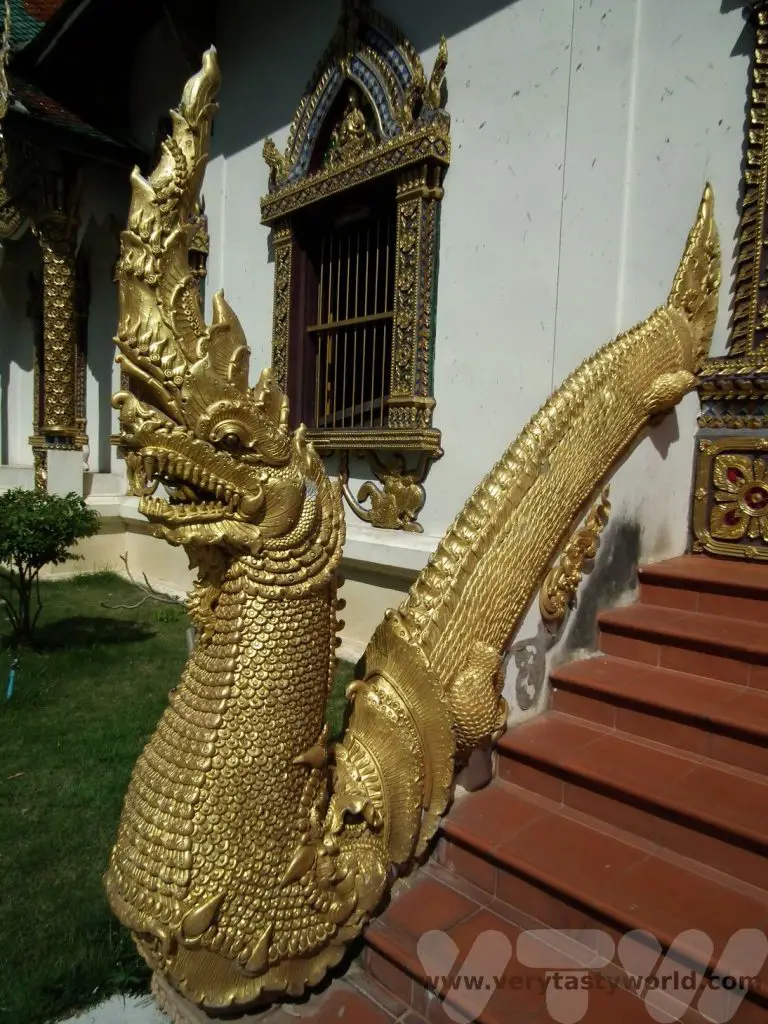
The roofs of many of the temple buildings are beautiful- highly decorative and elaborate.
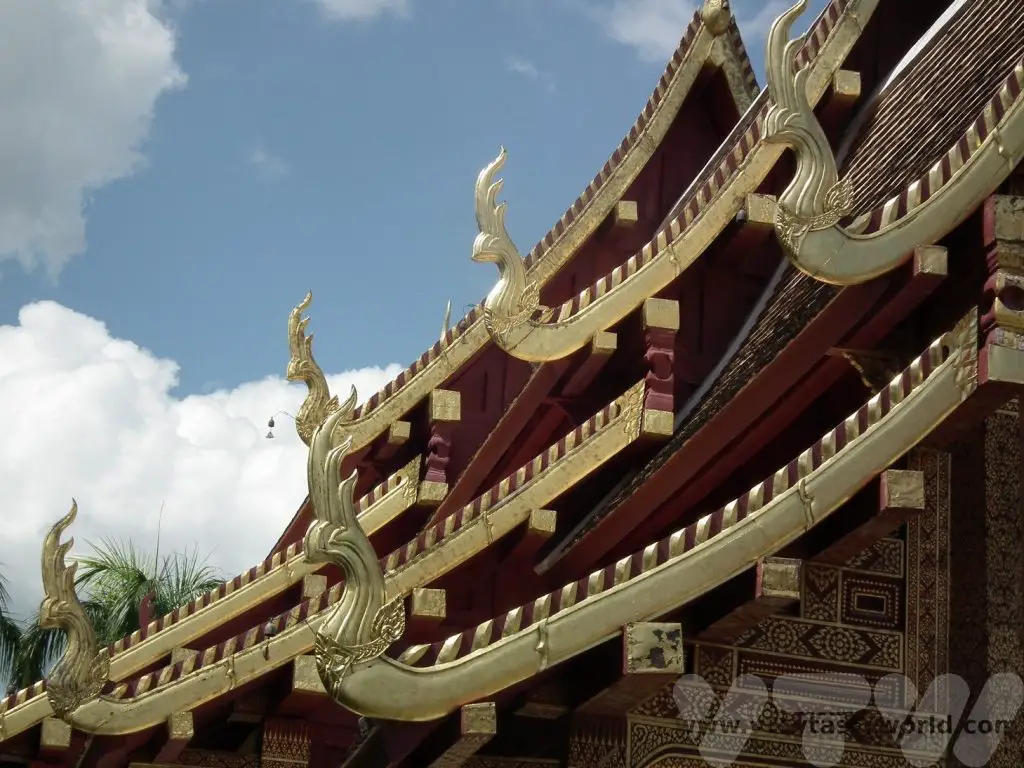
Chiang Mai Cultural Centre
Slightly out of town on the Prapoklao Road is the Chiang Mai Arts and Cultural Centre which used to be the royal hall. It runs evenings showcasing northern Thai food and culture. You can join in to enjoy a delicious meal followed by entertainment such as dancing, martial arts and traditional games.
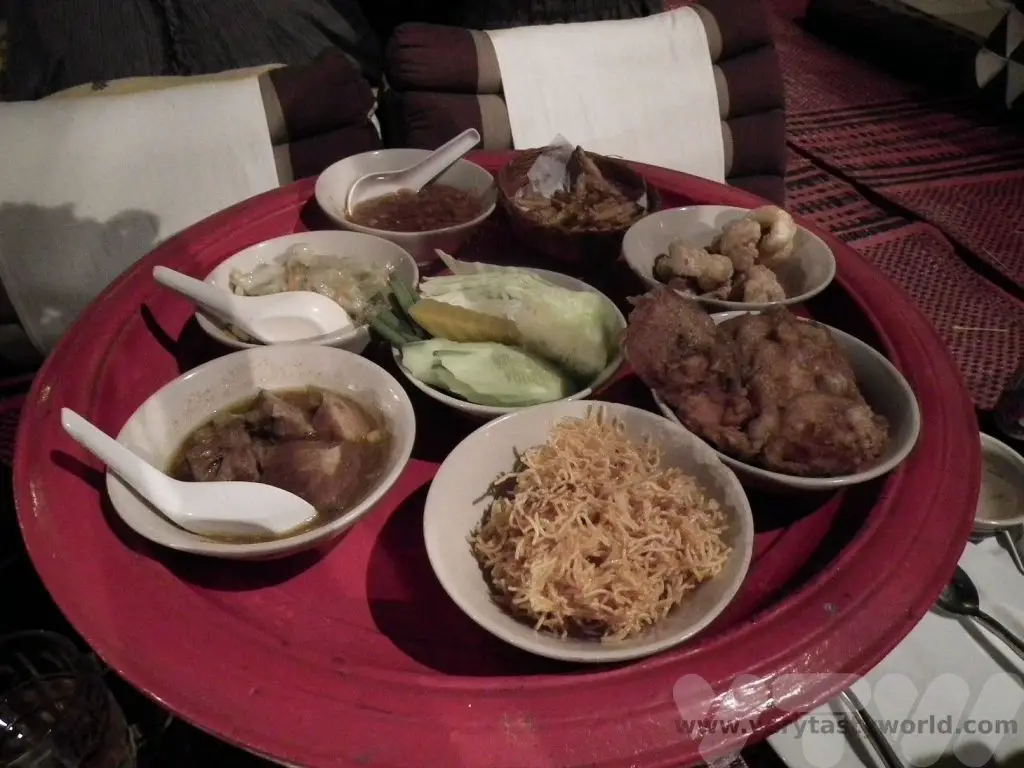
Then the entertainment started with some dancing and martial arts…
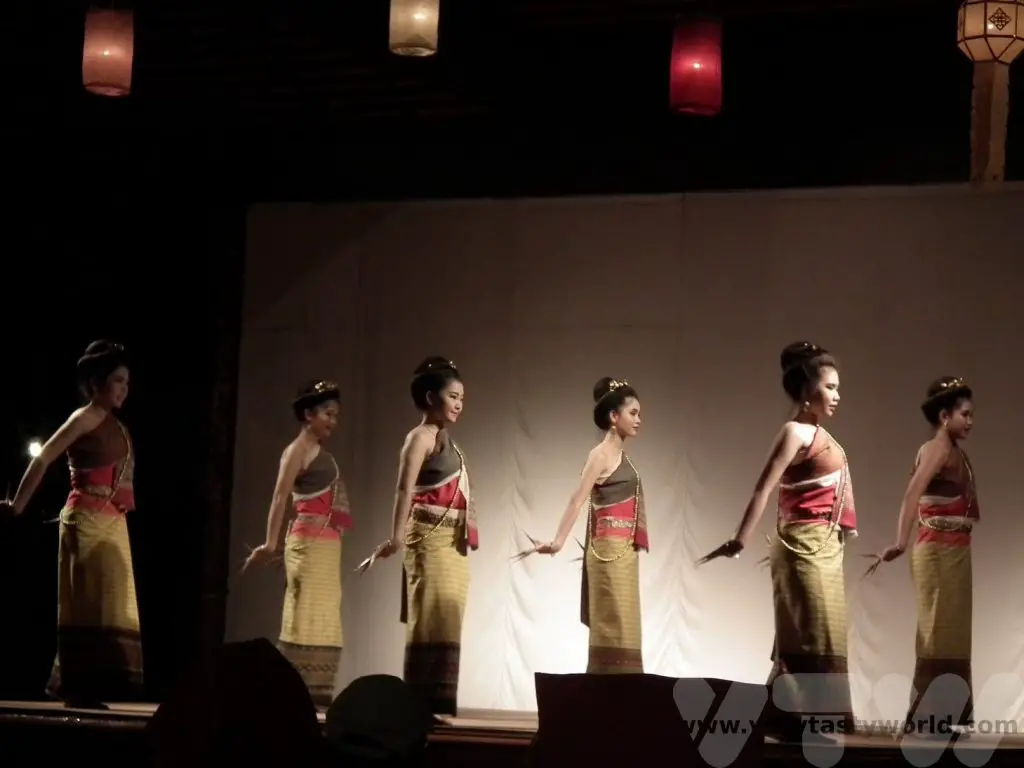
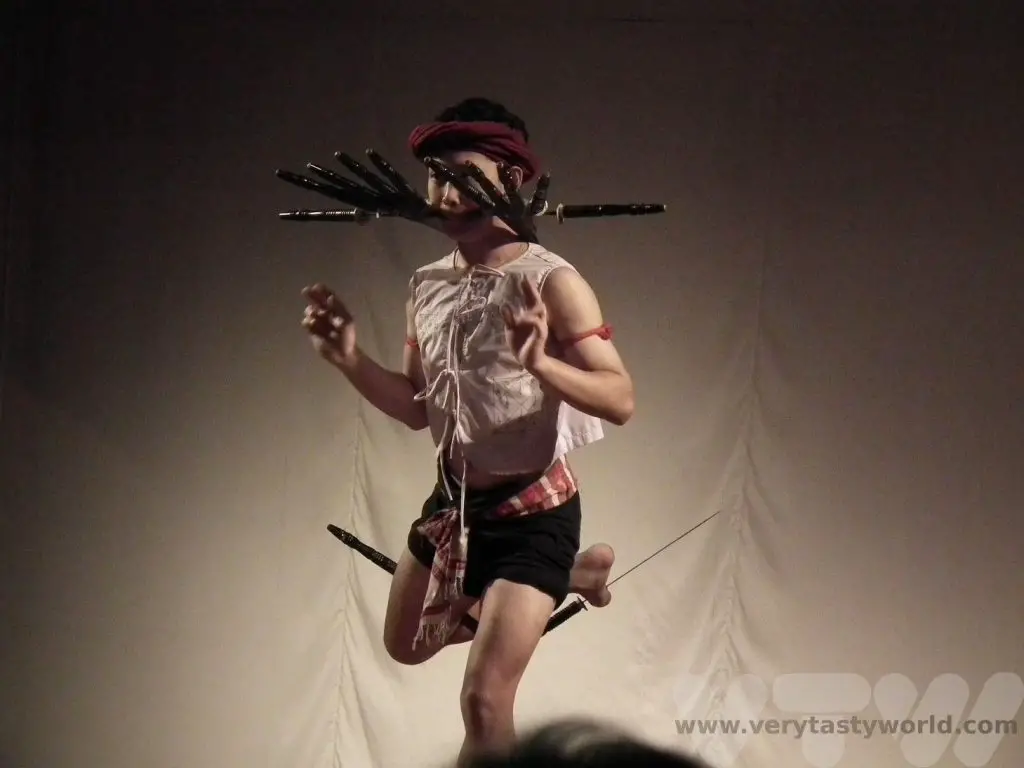
…before we moved outside to see some fire-based martial arts and a cute lion dance.
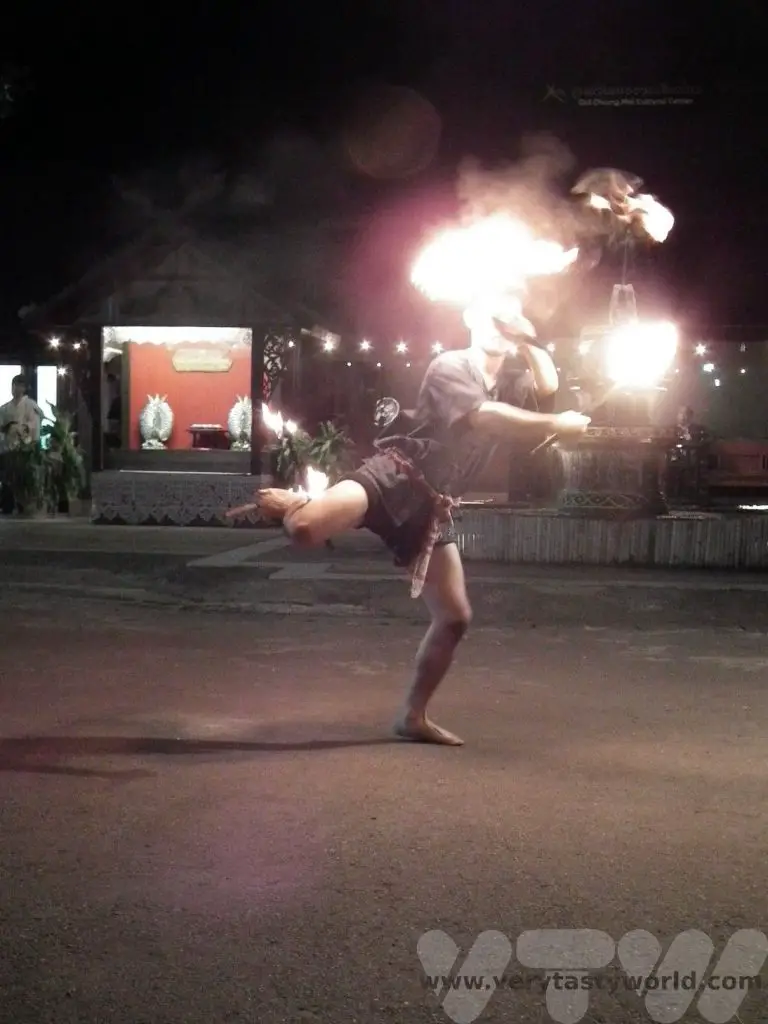
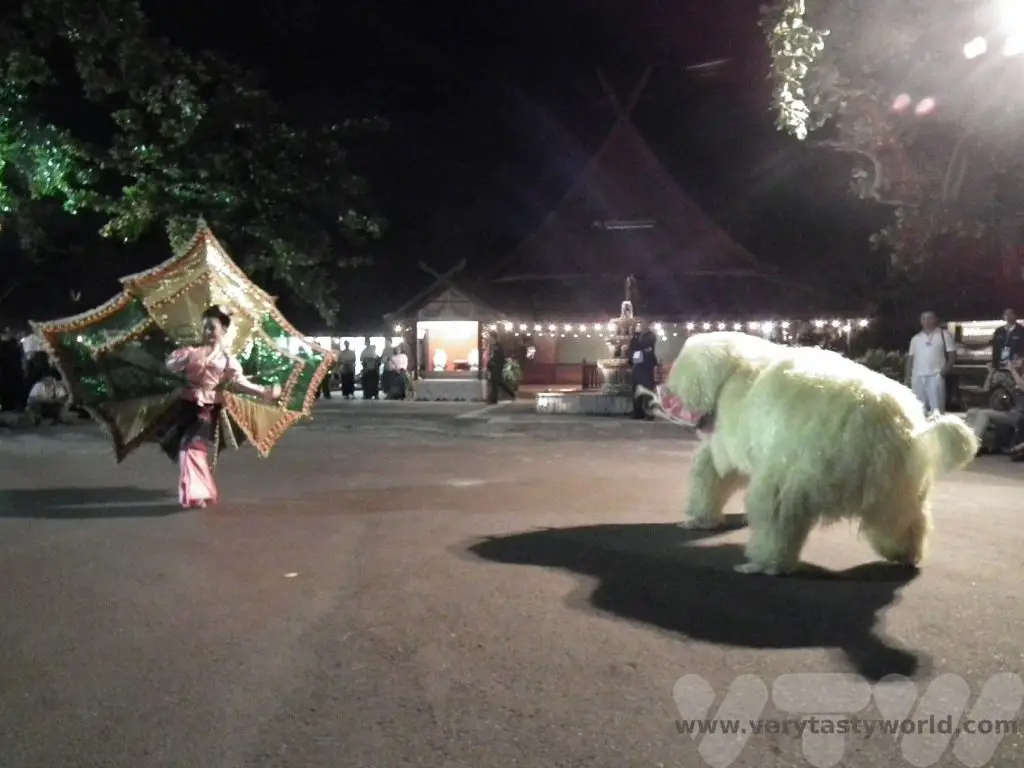
It is a bit touristy but was a fun evening out and an introduction to the culture of the region.
Temples Further Afield
If you don’t get templed out in Chiang Mai itself, there are many more wats to visit in the area surrounding the city. If you don’t have a pre-arranged tour, it’s possible to reach them by taxi. These can easily be arranged with local hotels and hostels. It’s worth agreeing a price first and consider asking for a round trip where the taxi driver will wait for you to explore the temple before taking you back. Both Wat Inthrawat and Wiang Kum Kam, located a few kilometres from the city centre, were definitely worth exploring.
Wat Inthrawat
Wat Inthrawat is one of the best preserved wooden temples in the region. It’s located in the Hang Dong district around 10 km south of Chiang Mai, in the village of Ban Ton Kwen. Small, but perfectly formed, this temple is still in its original state.
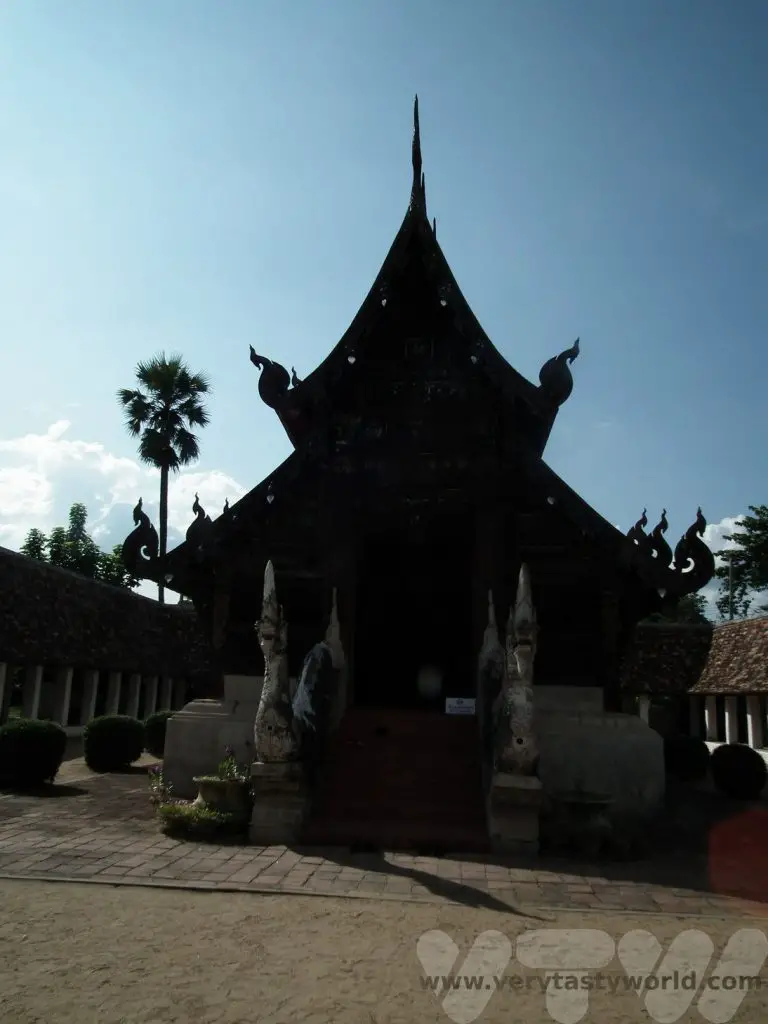
It has a wihan built in the Lanna style with typical nagas at the entrance steps.
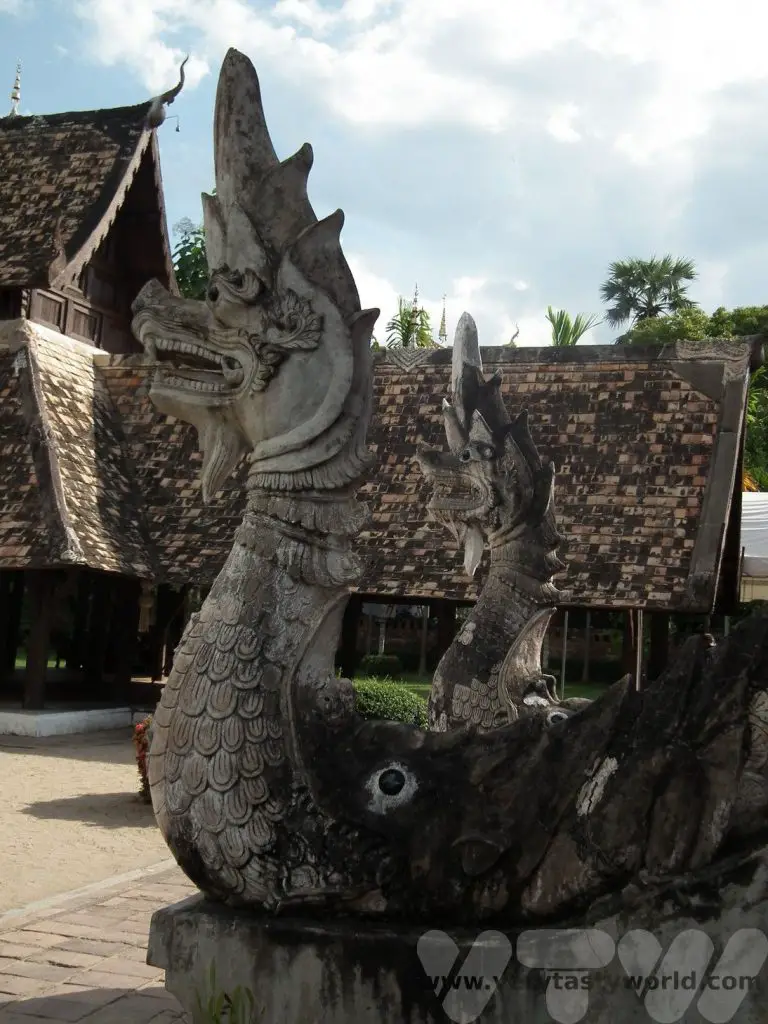
The roof has three tiers and also features some impressive and very decorative features at the tips of each tier. The quality of the craftsmanship is remarkable.
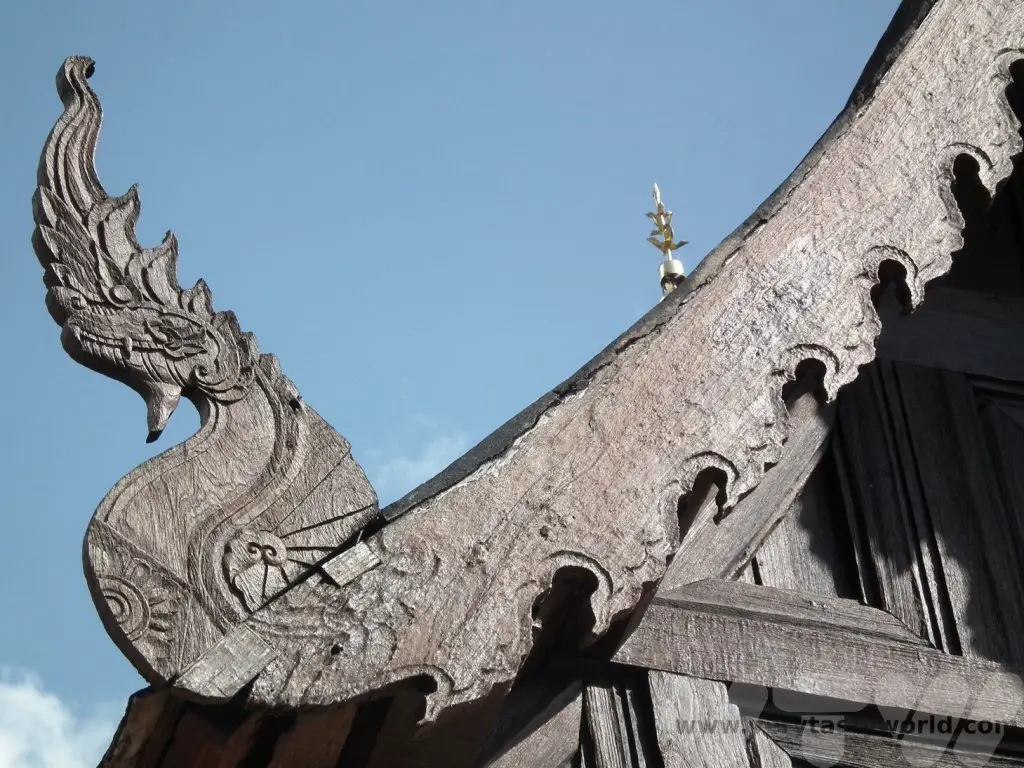
Wiang Kum Kam
Around 5km southeast of Chiang Mai lies the archaeological site of Wiang Kum Kam. This former city was built by King Magram. It was originally the capital of the Lanna in the 13th century but Magram decided to relocate to Chiang Mai, situated at an altitude 12m higher, due to serious flooding at this site. Although the area remained inhabited for several centuries it was finally abandoned after a massive flood which deposited a huge amount of sediment over the buildings. Much of the city has now been excavated and it’s possible to explore the ruins. It’s an extensive area and you can ride around the site in a horse drawn cart or tram. It has a visitor centre, located on Rte 3029, which has loads of information about the site and that’s also the place where you can pick up transportation. It’s possible to visit several temple complexes.
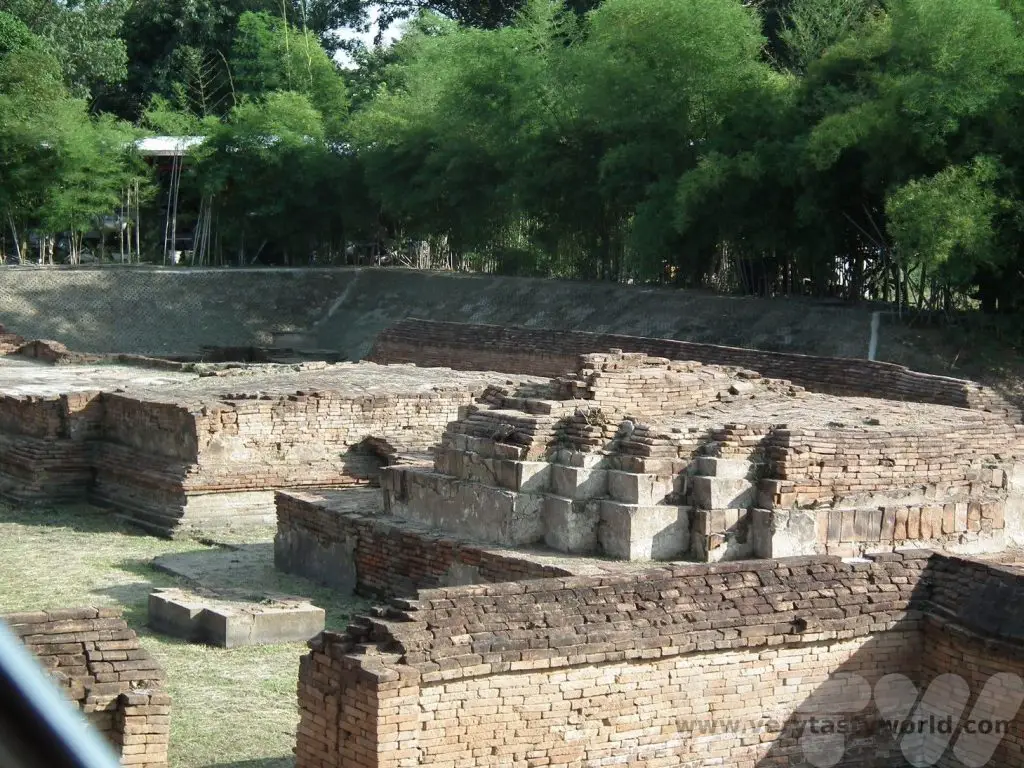
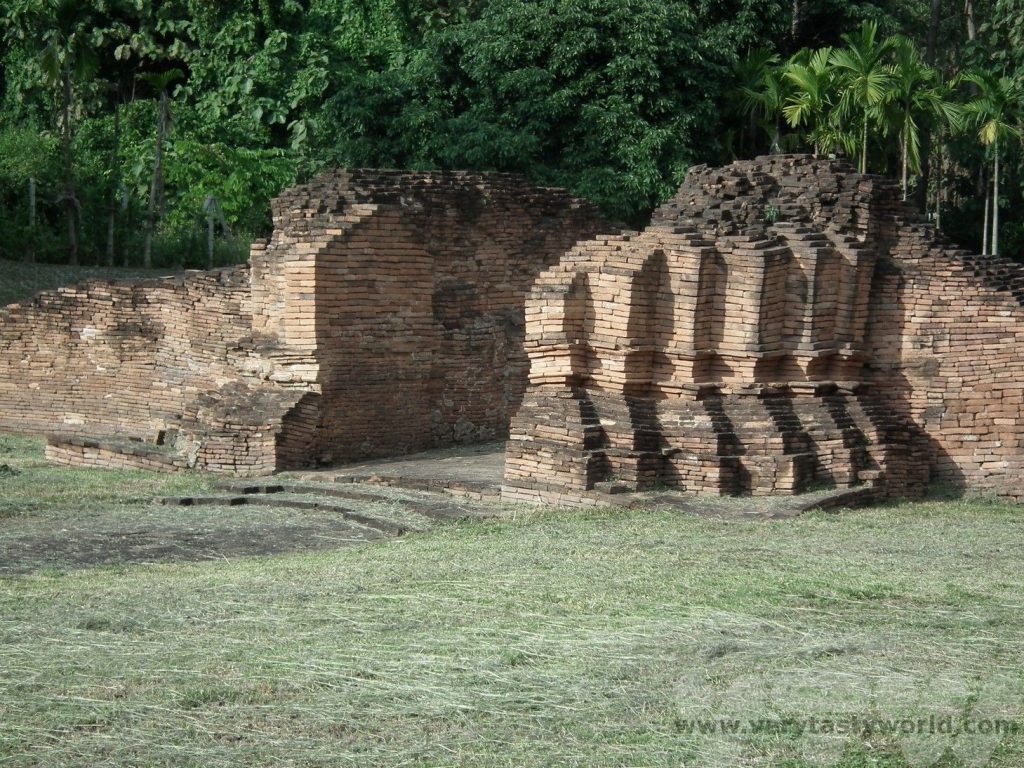
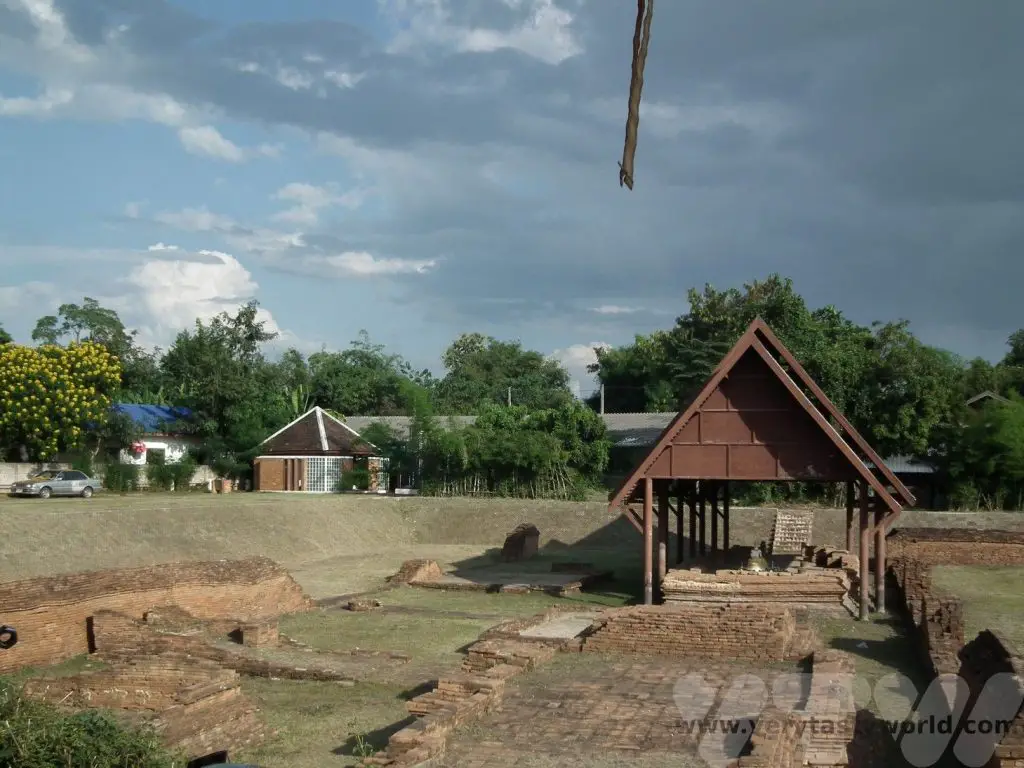
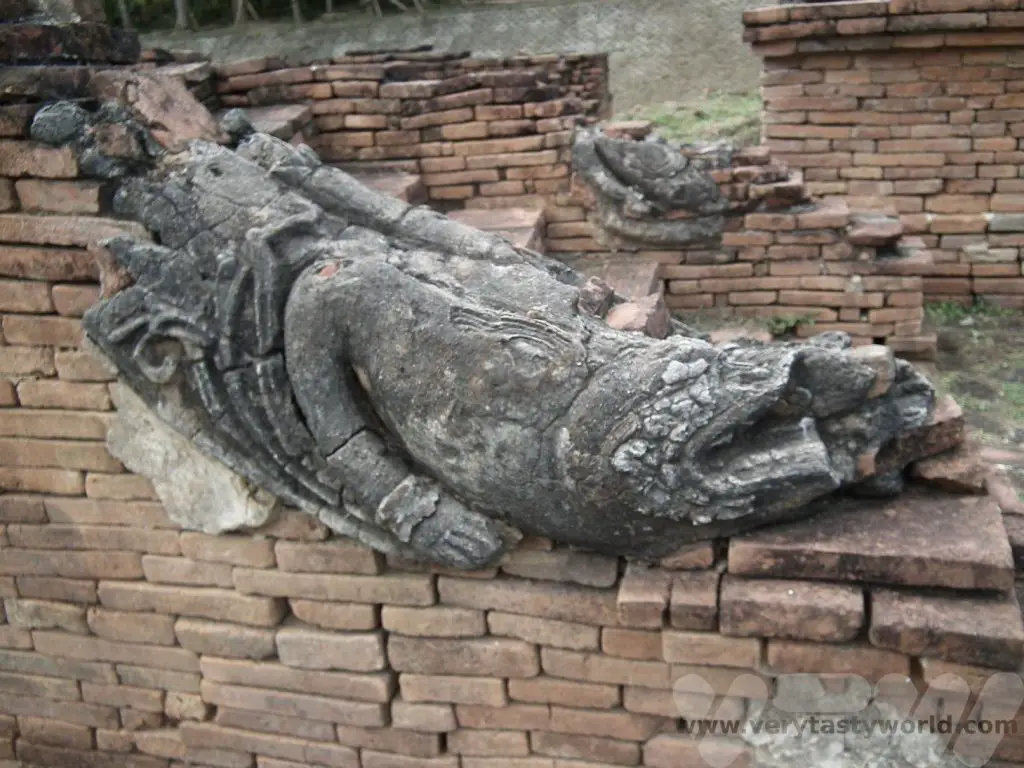
Wat Chedi Liam is the highlight of the complex. At over 30m tall, and taking the form of a pyramid structure, it has five main tiers. Each of these contain twelve Buddhas, three on each side, located inside their own alcove. It remained relatively unaffected by the floods over the centuries and remains a working temple.
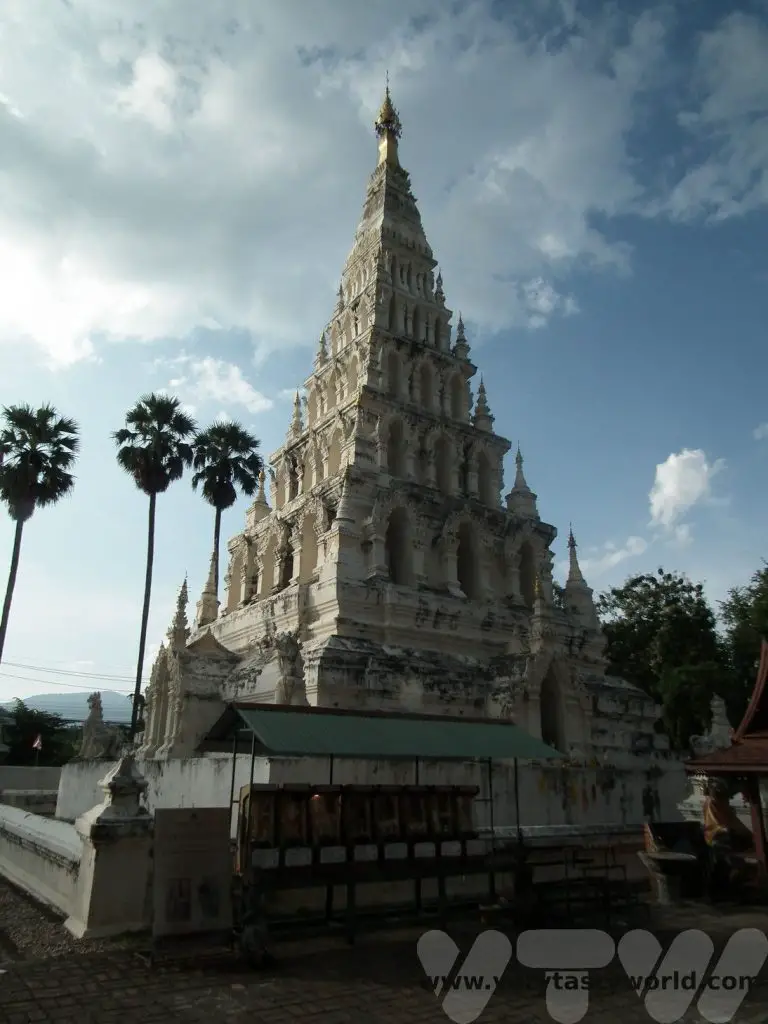
Activities in Chiang Mai’s Wider Area
Although it’s possible to spend quite some time exploring the city there are also loads of trips to take in the surrounding area.
This orchid farm was a pretty distraction for short while on the way to Mae Sa.
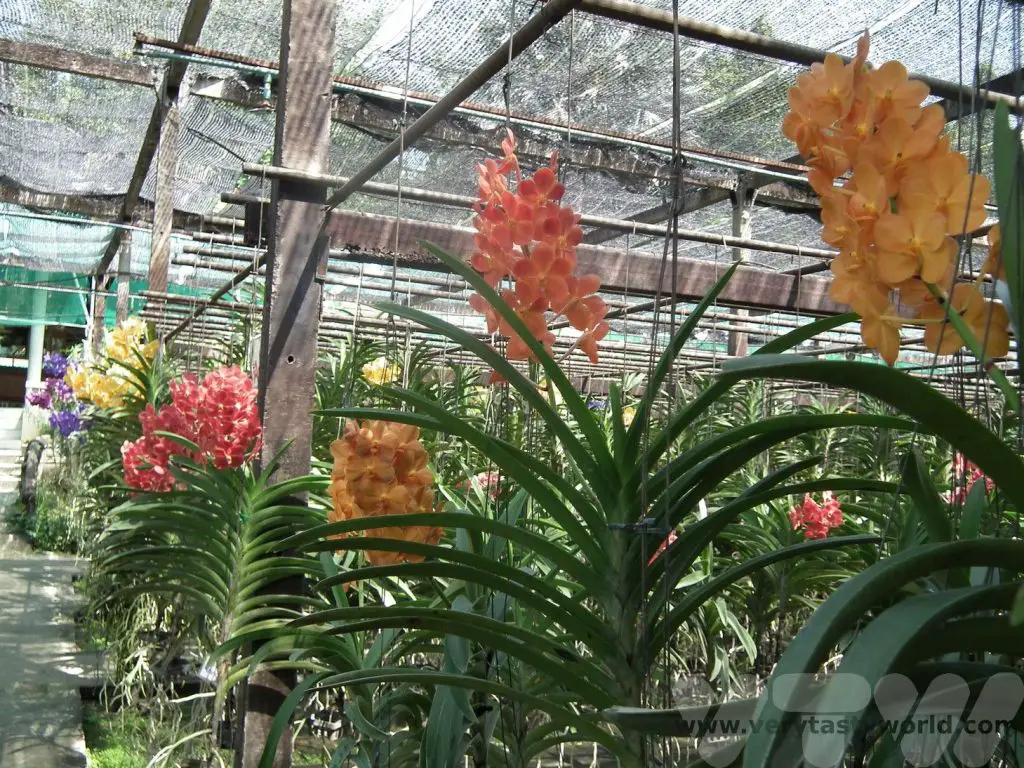
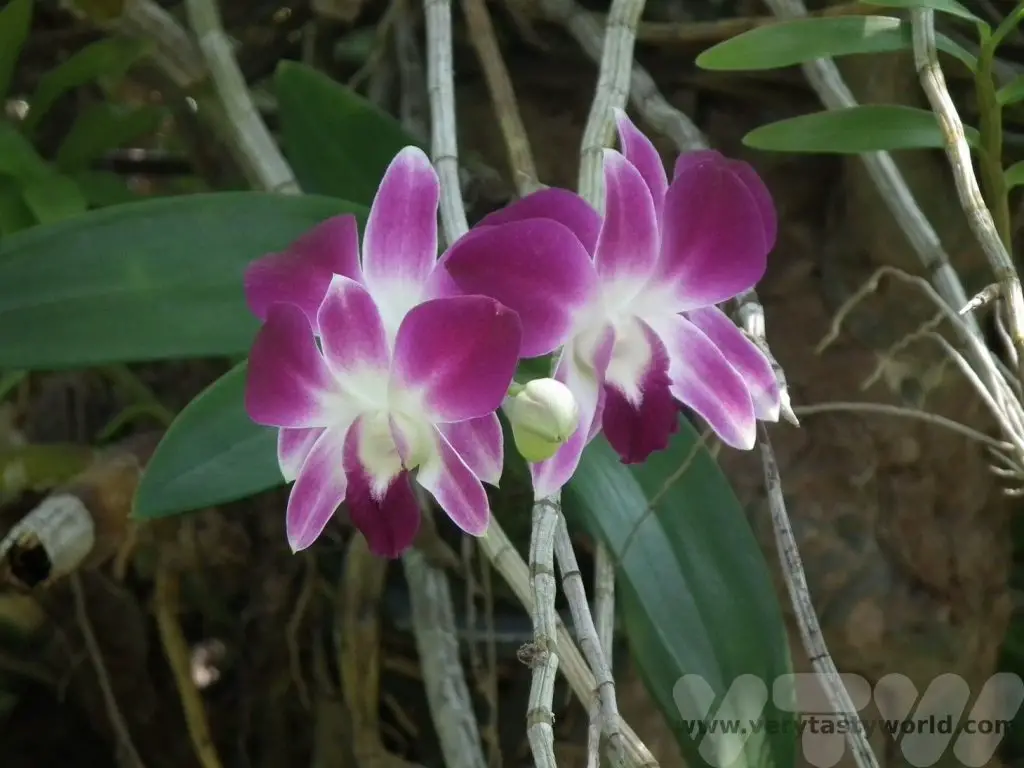
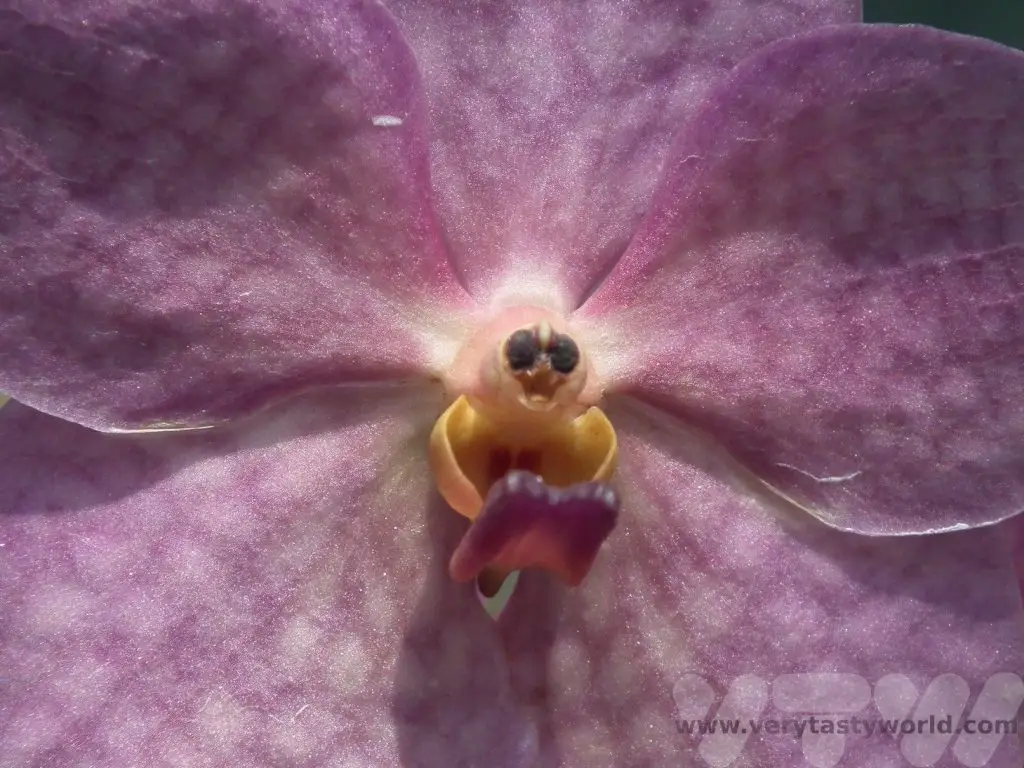
Mae Sa Waterfalls
Located in the Doi Suthep-Pui National Park, around 30km from Chiang Mai, Mae Sa offers a series of ten waterfalls spaced a few hundred metres apart. You can follow the pathway alongside the falls to enjoy a pleasant walk and swimming in the pools is allowed, if you desire. It’s not a challenging hike at all – just a pleasant stroll up a gentle incline. It gets quite crowded at the start of the trail but as you hike towards the upper falls the crowds melt away and you can enjoy the beauty of the surroundings. There are picnic spots along the way, so it’s possible to pack bathing suits and some tasty food to make a day trip if you fancy having a more relaxing time.
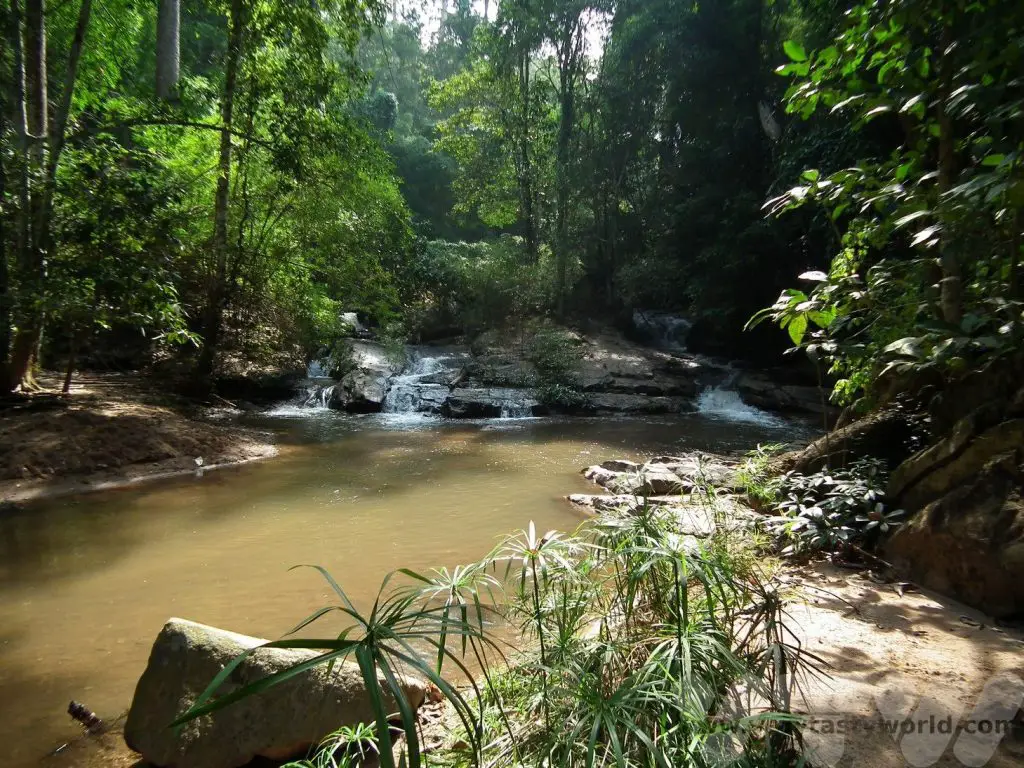
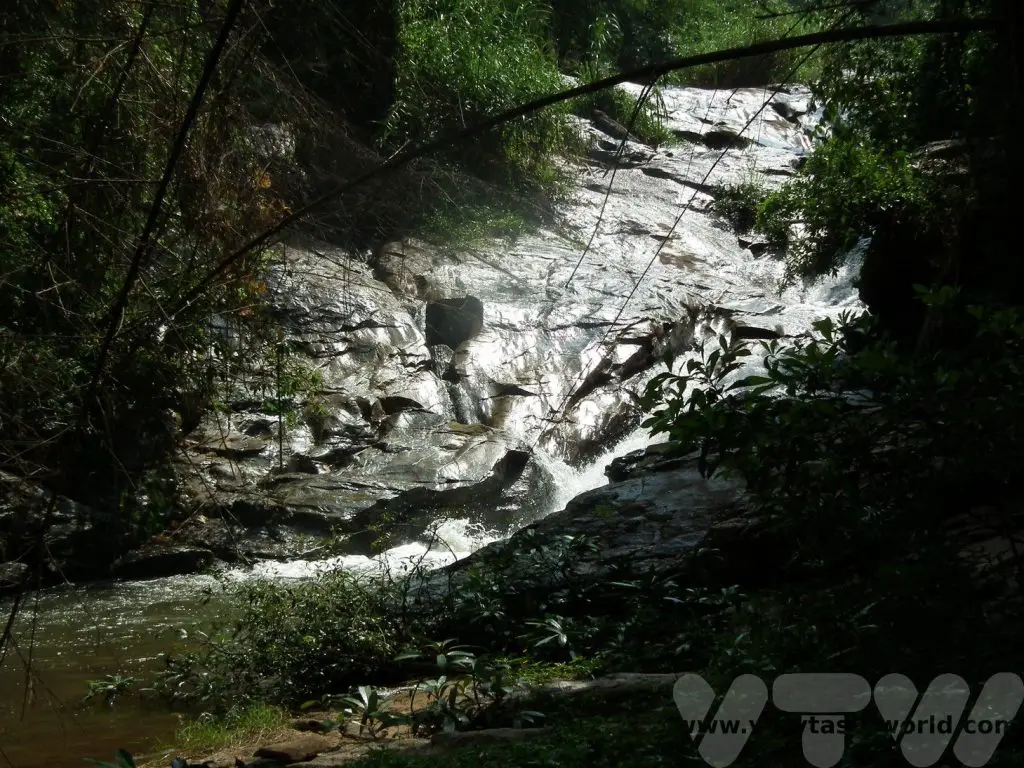
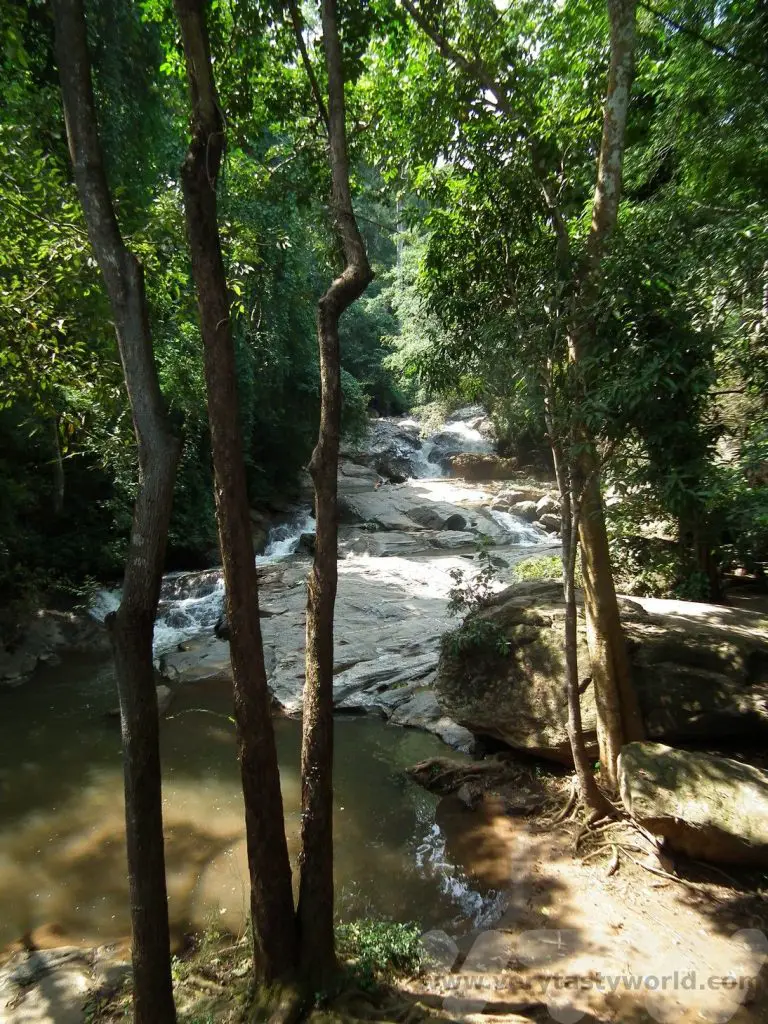
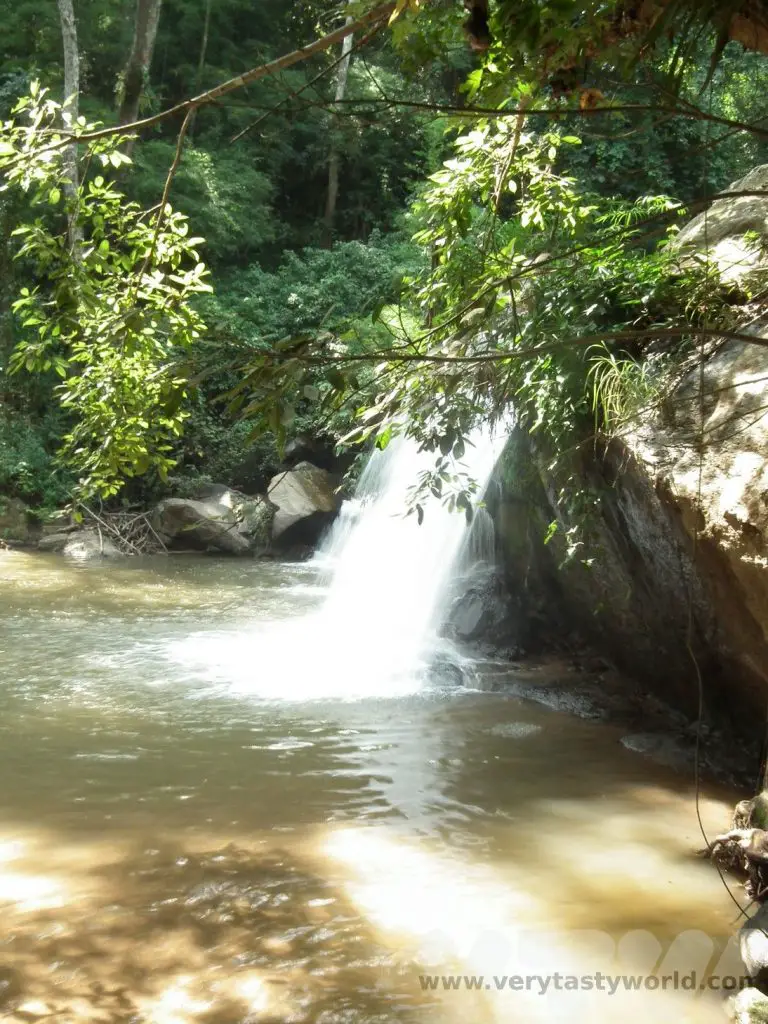
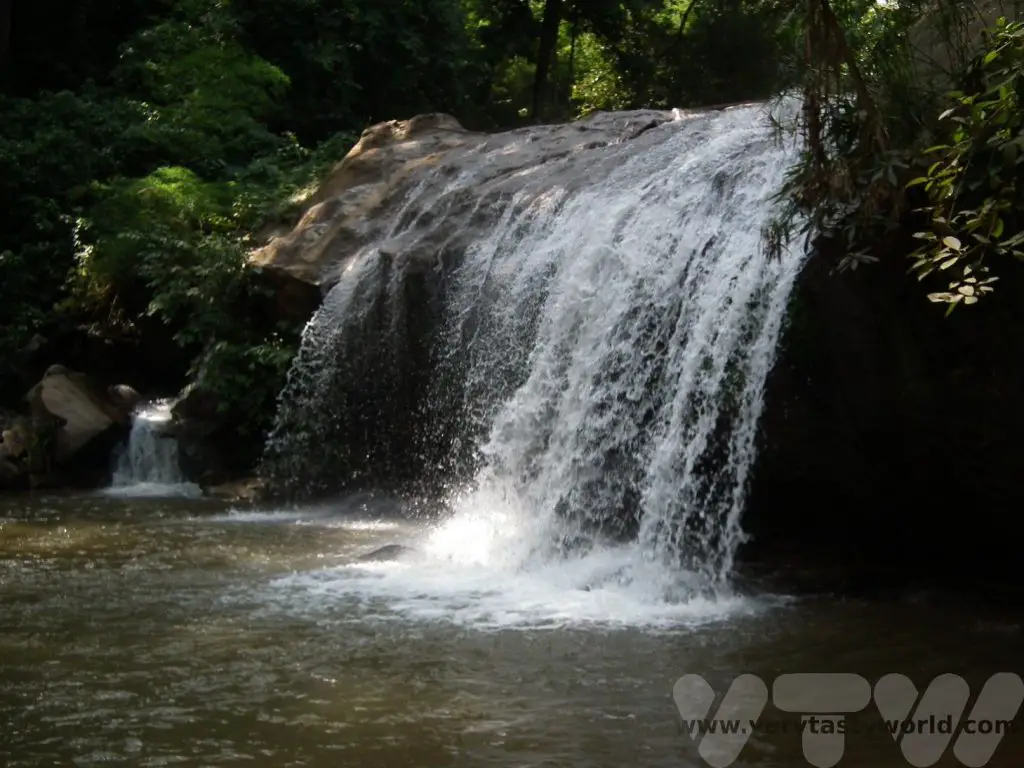
Elephant Sanctuary Visit
Visiting an elephant sanctuary is a very popular activity. There are loads in the area but do check which are responsible and ethical and make sure that they do not exploit the elephants. Many sanctuaries no longer allow elephant rides but focus on caring for and interacting with these remarkable creatures.
We visited a sanctuary a couple of hours away from Chiang Mai which is home to several elephants, all of whom have been rescued from the logging industry or from giving rides to tourists on iron chairs, a practice that really damages the elephants’ backs. When the sanctuary learns about elephants that are being mistreated they locate the creature and offer as much money as they can afford to convince the owners/abusers to sell their elephants. Each elephant has its own mahout (handler) who is responsible for its welfare. Set in 135 acres, the majority of the land is dedicated to growing food for the elephants. Tourists help provide much needed income to support the work of the sanctuary. Elephant riding (even bareback) is no longer allowed. We were able to meet the elephants and hand feed them – although some just helped themselves.
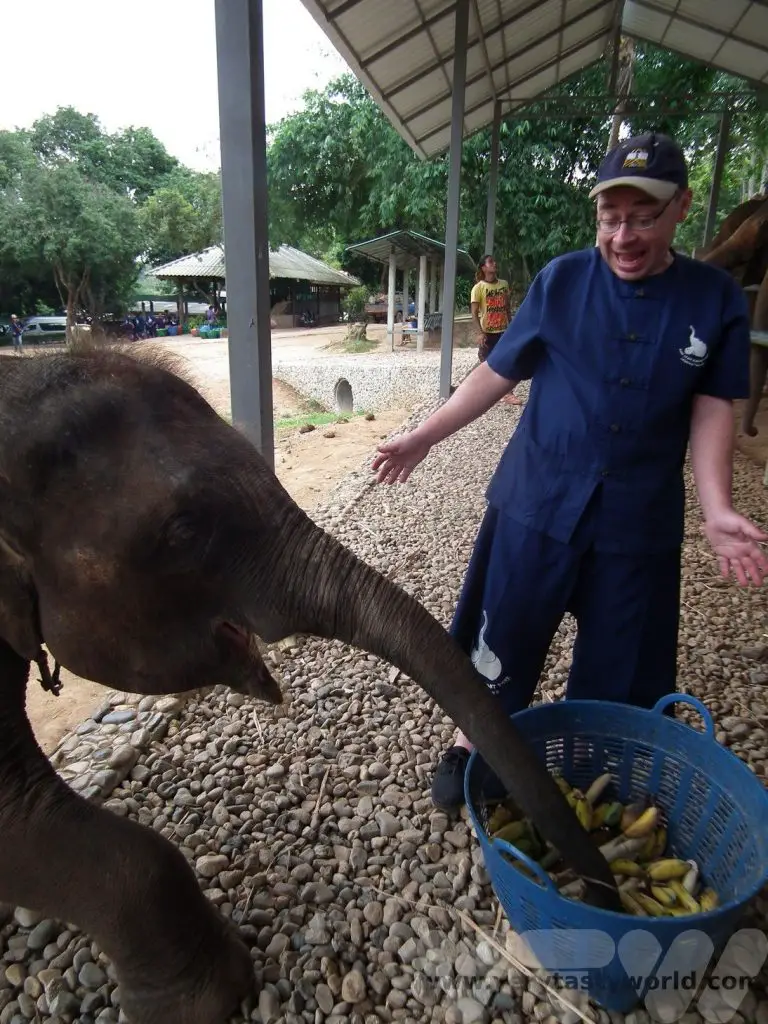
Elephants are highly intelligent creatures. Their brains weigh about 5kg. They are also emotionally intelligent; they recognise and interact with other elephants and have likes and dislikes just as we do. In fact, elephants that really hate each other need to be kept separated at the sanctuary. They also make judgements about the humans they interact with and, if they decide they don’t like someone, will refuse to co-operate with that person. Also – those cliches about elephants are true. They really have terrific memories. Thai people believe that you can judge an elephant’s character by the shape and quantity of its tail hair. Indeed, tail hairs are considered a sign of good fortune (and are sometimes kept as a lucky charm).
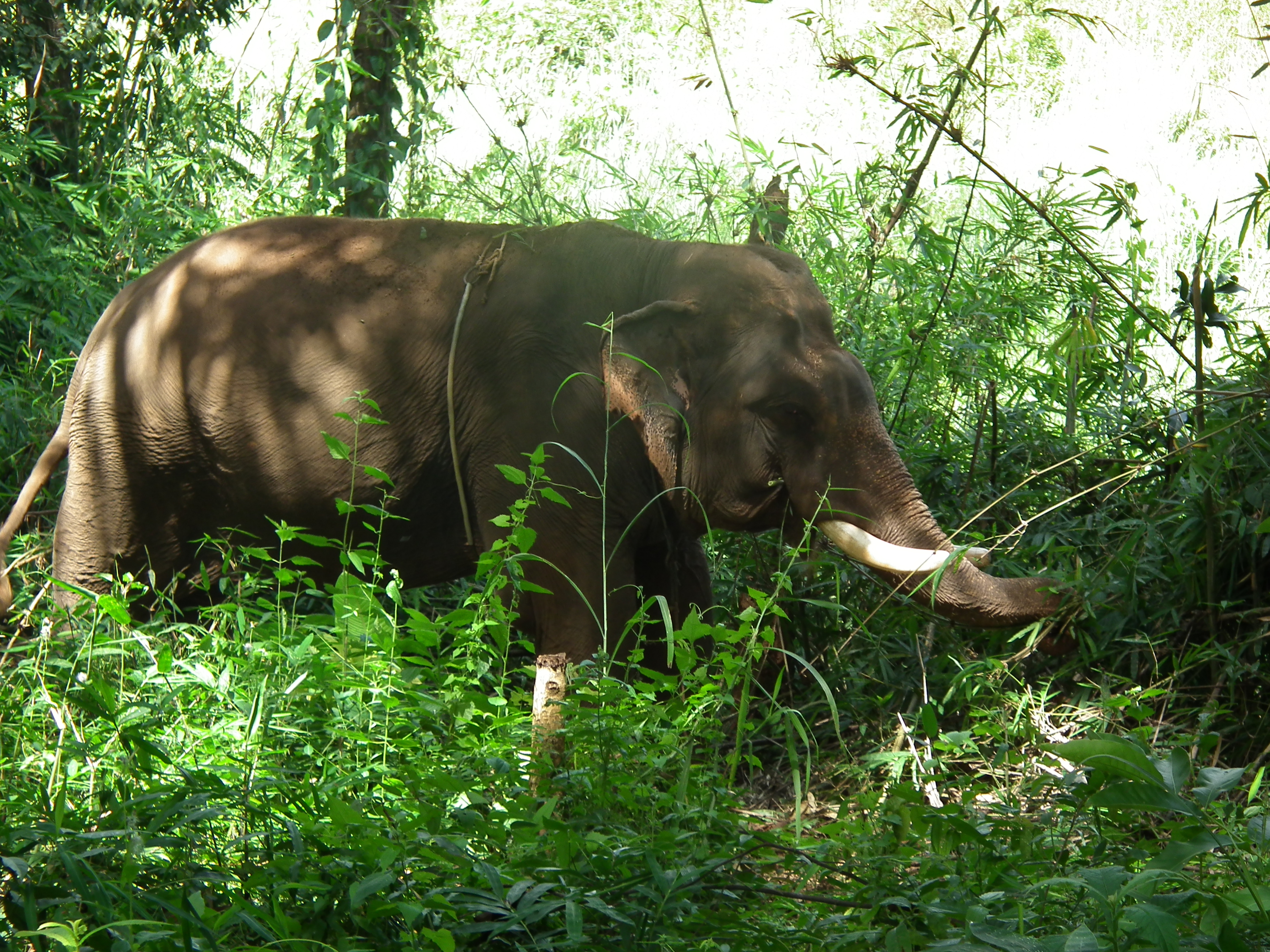
We went for a walk with an elephant called Tom Parr, a large male with long tusks. Tom Parr was very calm and co-operative, but was apparently scared of chickens and cars. He adored going into the jungle – many elephants who have been rescued from the logging industry have been traumatised and refuse to go back into the forest; they are never forced to go where they do not wish to.
Tom Parr knew very well that we had some sugar cane on him.
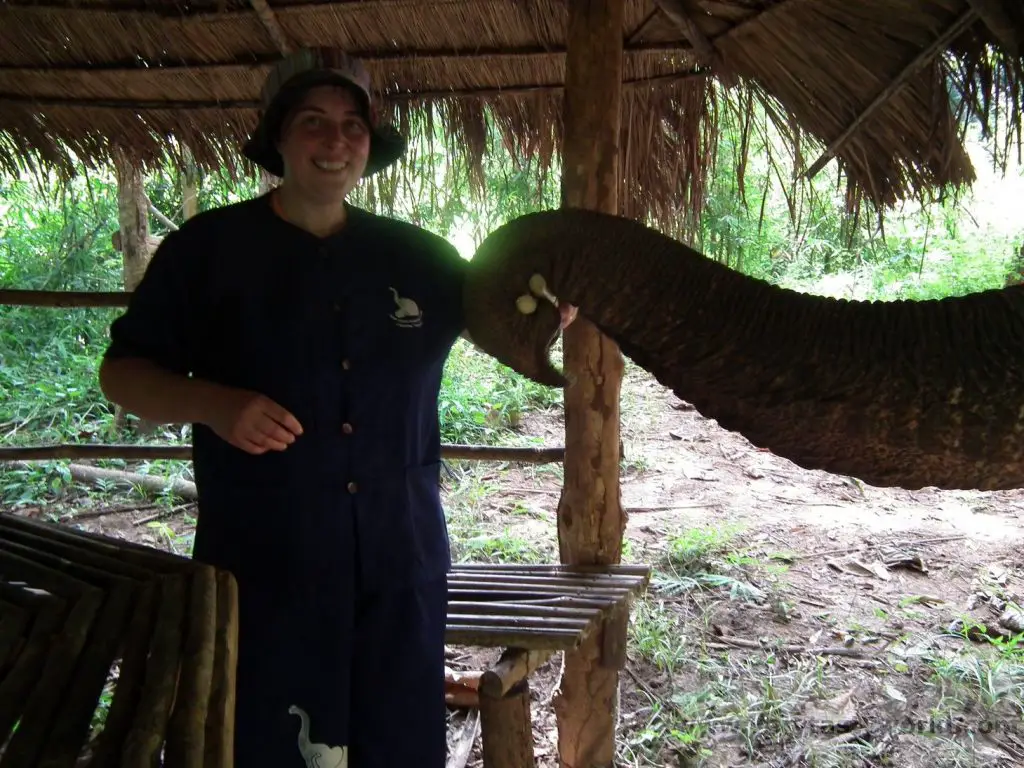
All the elephants are bathed at the sanctuary at least once a day. Tom Parr was very much looking forward to his bath and eagerly walked into the water and sat himself down. We joined him in the pool, which is fed by a local river, to give him a well-deserved wash. We showered him with water and scrubbed his skin and tusks. He was so happy. If he had been a cat, he would have been purring.
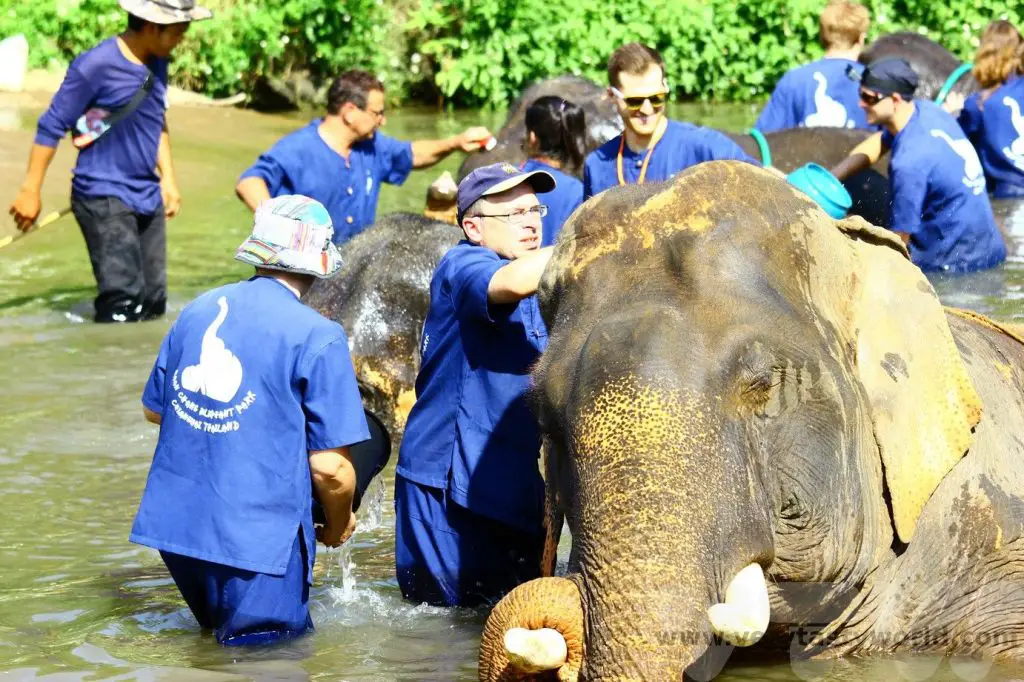
Throughout the experience we had been wondering whether we would need to ‘muck out’ the elephants at any time, something we had been quite prepared to do. However, the sanctuary had made arrangements such that the tourists’ exposure to poo was minimised. In fact, they even had a pooper-scooper chap on hand at the pond, ready to scoop any errant dung that the elephants generated into a bag and prevent the tourists getting too filthy. The sanctuary offers showers so you can wash down afterwards and change into your own clothes. The dung is often used to make paper.
A Chiang Mai Tour – Street Food and Markets
Back in the city, you’ll find that there are a number of bustling markets to explore, notably the night market which is a short walk away from the old city. On some nights of the week certain streets are closed to traffic and stalls pop up. These are really popular so expect crowds.
Of course, markets wouldn’t be markets without food stalls and Thai street food is amazing. The markets often have plastic tables and chairs nearby – they are not necessarily associated with any particular stall – so you can order your food and then take it to any table to enjoy at leisure.
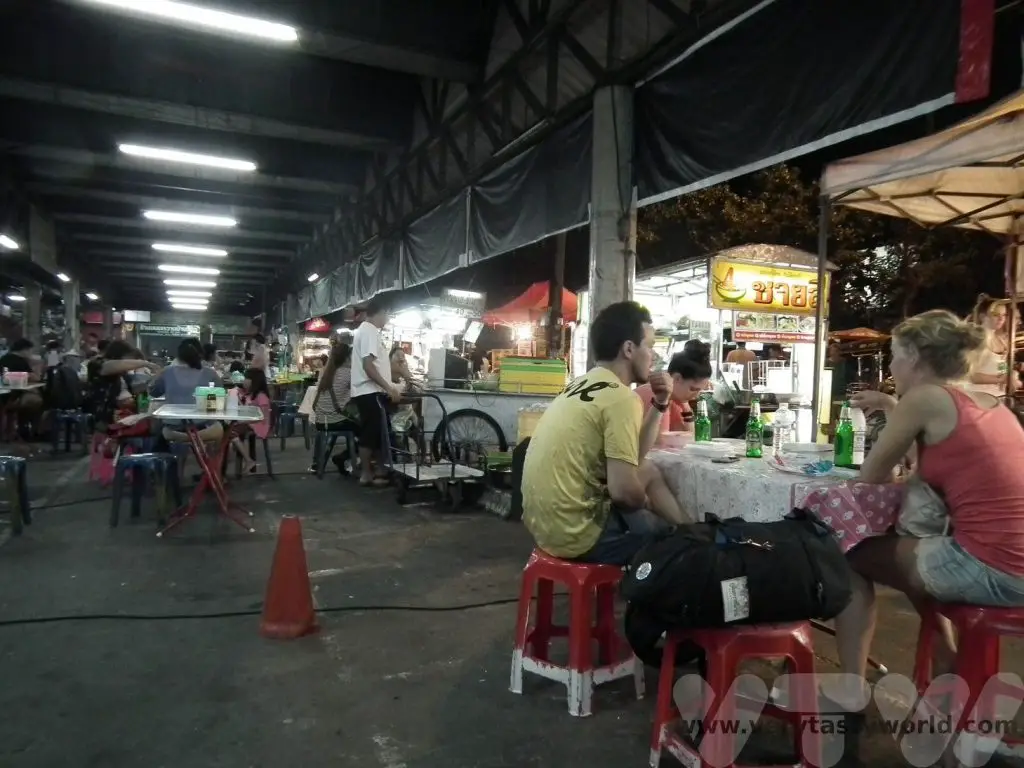
One of the best street food dishes is som tam – green papaya salad. Green papaya is shredded into a large wooden bowl and then pounded with beans, carrots and tomatoes. Sometimes little shrimp are added although you can ask for them to be excluded if you are vegetarian. Chillies, lime juice, palm sugar and fish sauce are added to the mix and pounded to release the flavours giving that characteristic Thai combination of sweet, sour, salt and spice. Be warned though, those teeny Thai chillies are hot! The dish is then adorned with crushed toasted peanuts for added crunch. On a warm, humid evening, it’s the perfect dish for a refreshing snack, preferably accompanied with a nice cold beer.
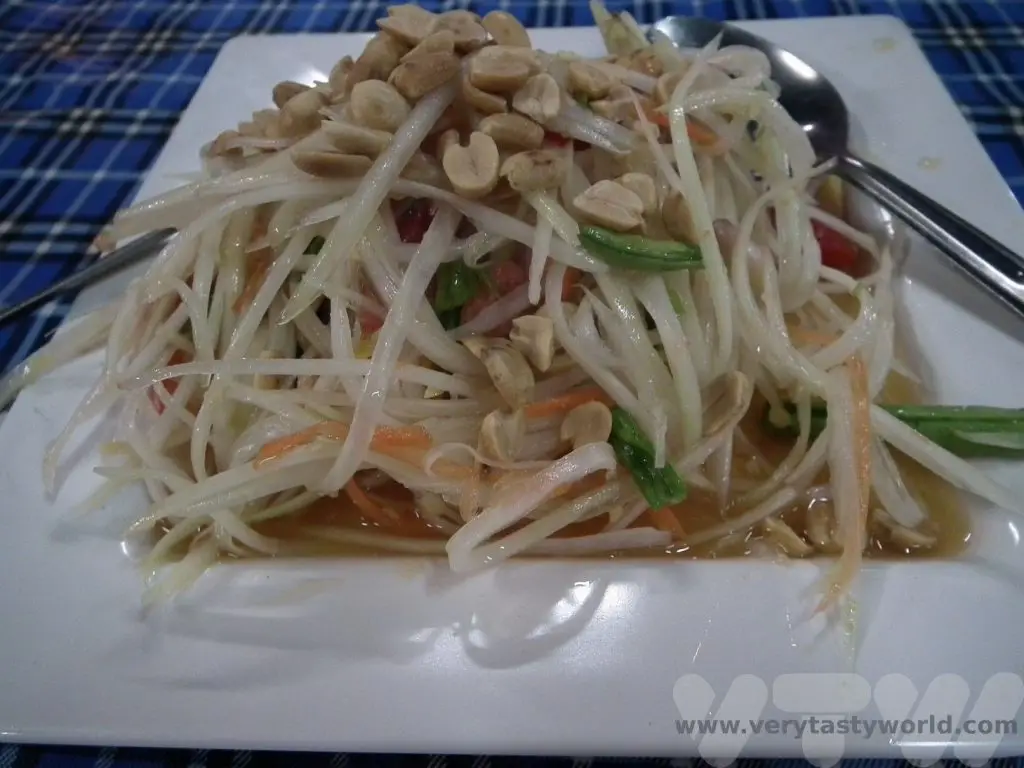
Related Posts You May Enjoy

Things To Do In Oban, Scotland
Oban is a town in Argyll and Bute located around a pretty bay on the west coast of Scotland. It’s a popular place to visit and also has a ferry port from which it’s possible to travel to some of the western islands and as such is often considered the gateway to the Hebridean islands. But there are plenty of things to do in Oban itself and the surrounding area.
A Towering Folly
McCaig’s Tower is the town’s most prominent landmark, set on a hill looking over the bay. It was funded by John Stuart McCaig in 1897, a local banker who wanted to ensure employment for local builders and stonemasons as well as to leave a monument dedicated to his family. But he died before his plans fully came to fruition and, although he left a legacy for its completion, his family contested this and work stopped.
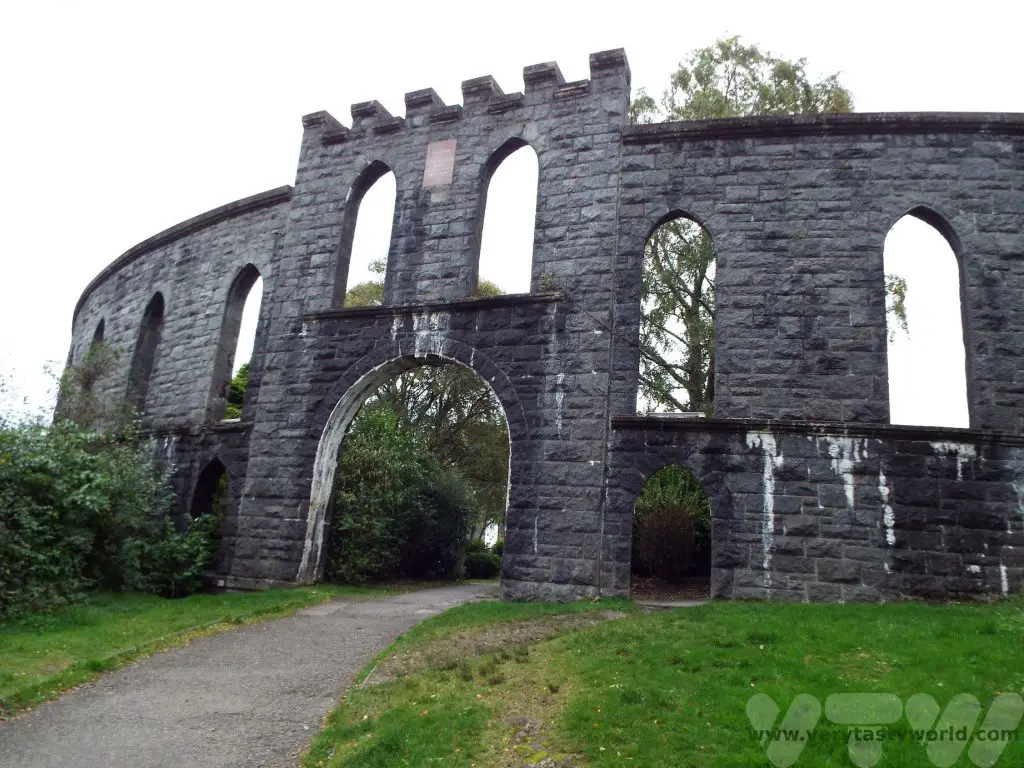
McCaig had apparently wanted a grand design based on the Colosseum in Rome, which would have been impressive, but it was not to be. It is a folly, but is nice to climb the hill and walk around the tower to have a look at the design and also to get a panoramic view of Oban below.
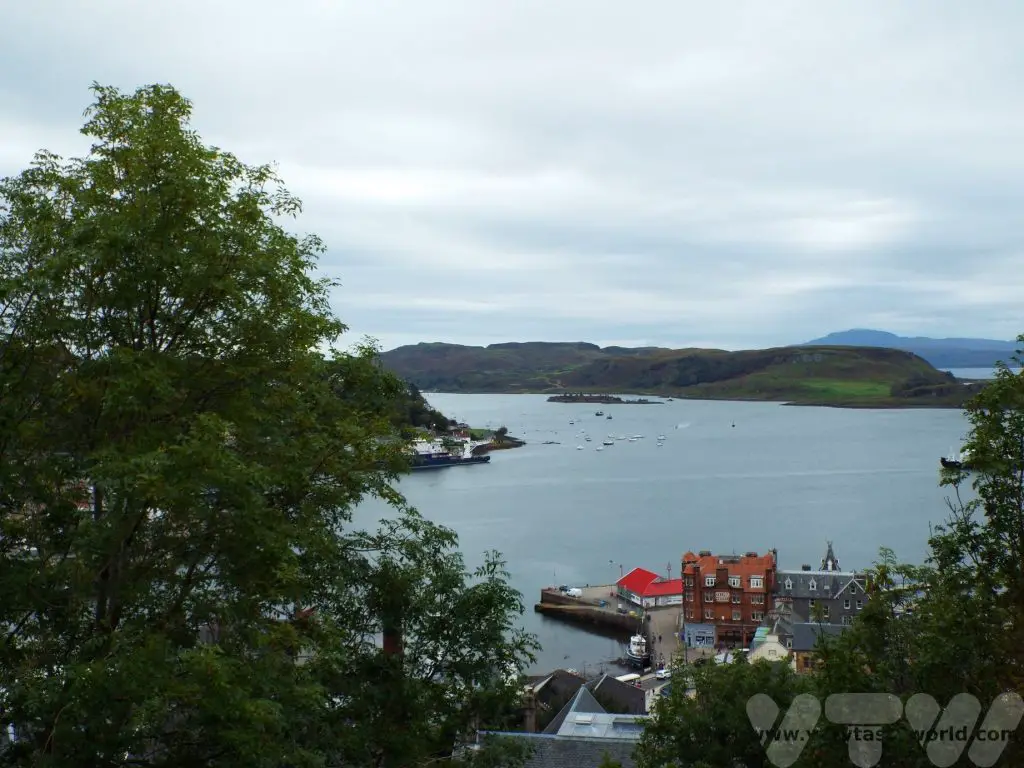
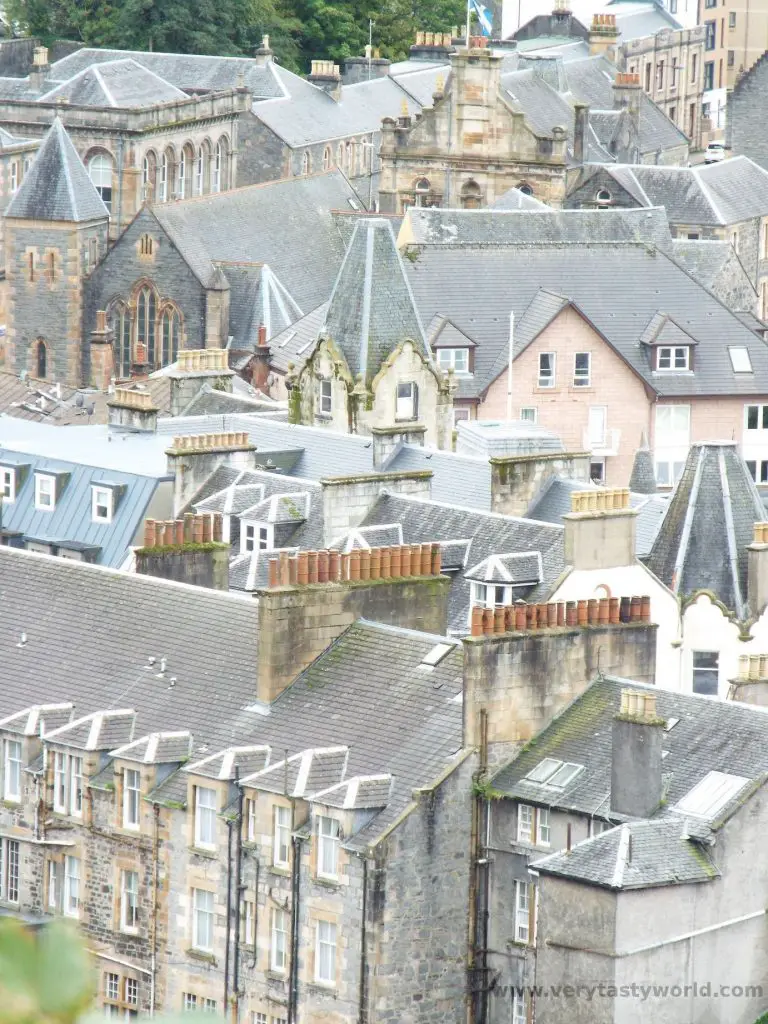
Visit Oban Distillery
Oban has one of the smaller whisky distilleries in Scotland. In fact the town developed around the distillery which was established in 1794. Hence it’s very conveniently located right in the centre of Oban. Because of its location the distillery didn’t really have the opportunity to expand so it remains small but perfectly formed. Also, because it’s town-based, there are no issues with someone having to drive to the distillery if you want to indulge in a tasting and are staying locally.
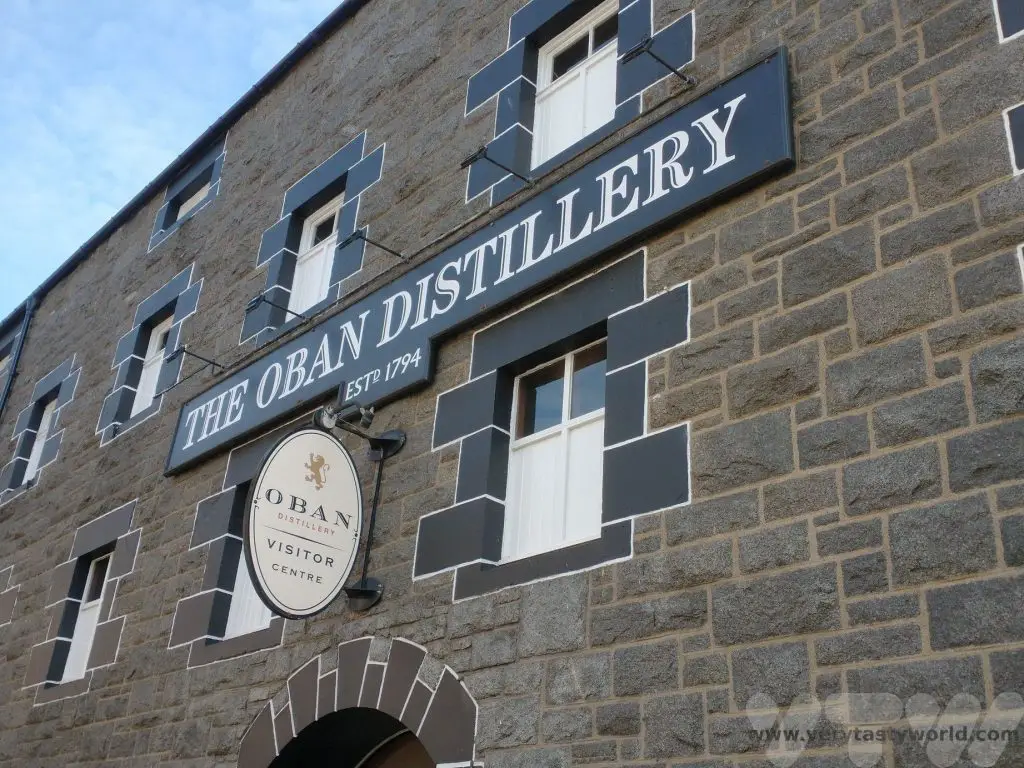
Of course they offer tasting tours. It’s definitely worth making a booking. You can tour the distillery itself or enjoy a tutored tasting. On arrival you are shown to a table and presented with some samples in little glasses and a tasting card.
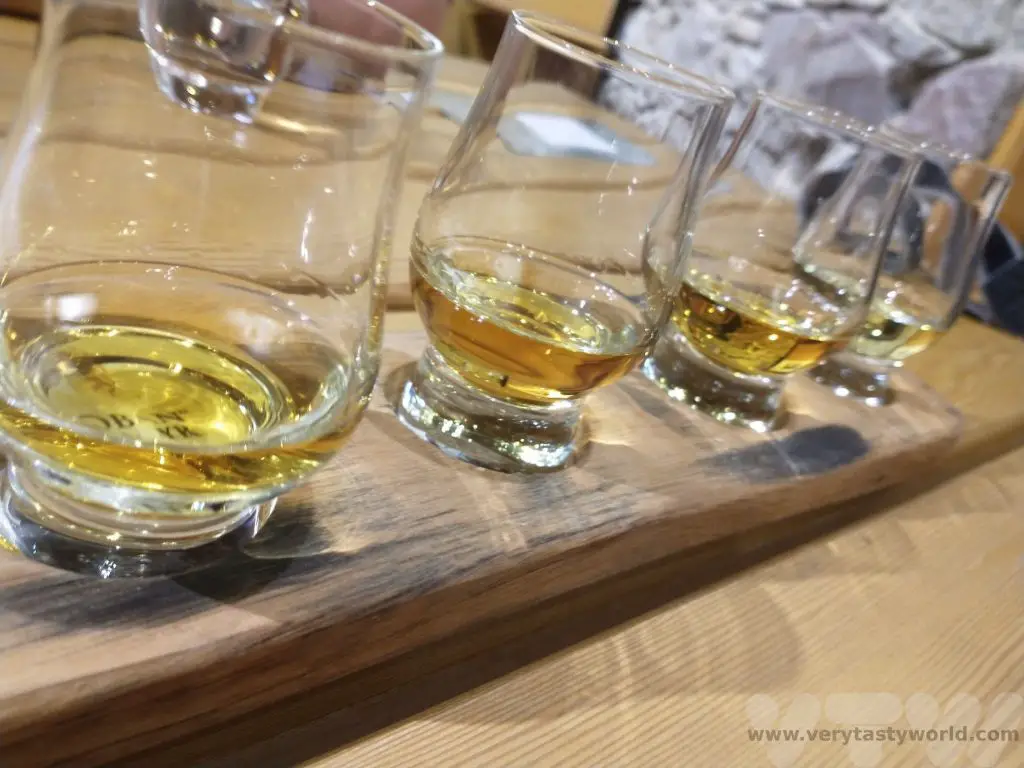
It was really useful to have some guidance as to how to taste whisky. The advice was to sip and don’t sniff the whisky on the first taste. Definitely don’t quaff the shot or you will just get a burn at the back of the throat. Sipping again, your mouth is now used to the whisky, so let the whisky lie on your tongue for 15-20 secs to let the saliva glands release saliva and savour the flavour. You don’t expect to get a peaty whisky in Oban, the water is sourced from a local loch, about three miles away.
When whisky is first distilled it is a clear liquid. Its colour and flavour derives from the barrels it is stored in and the length of time the whisky is aged. There are some interesting techniques – the whisky can be aged in bourbon or sherry barrels but the casks can only be used a certain number of times (around five). Some barrels are charred inside, then the burned timber is scraped away to expose new timber and this offers a new flavour. Some whiskies are tripled matured in three casks. We tried the 14 year old whisky, which had a light, citrusy flavour; the 14 year old (charred barrel); the Distiller’s Edition which had been aged in a bourbon and then a sherry cask, which had a sweeter, more caramel roundness; and the triple matured Little Bay, which had a great complexity of flavour.
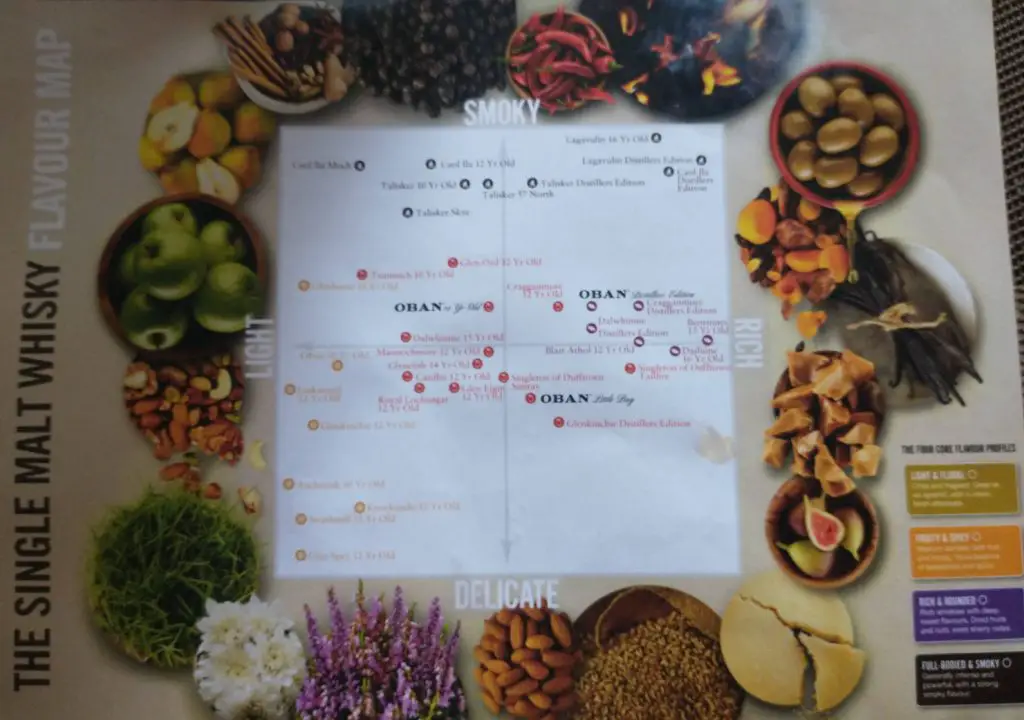
Of course, there are lots of bottles of whisky available to buy. We were quite taken with their Game of Thrones special edition.
Things to Do Around Oban – Day Trips
We recommend using a car to get around Scotland if you can – the driving is generally easy, the routes are guaranteed to look beautiful and it gave us flexibility to explore the wider area. However, there are public transport options if that is preferable.
Easdale Slate Island
Easdale is a tiny island located around 25 km from Oban. It’s easy to reach but first you have to cross the Bridge Over The Atlantic – possibly the cutest bridge in Scotland. Clachan Bridge joins Seil Island to the Scottish mainland so it really does cross the Atlantic – sort of! It’s a darling humpbacked bridge, built in 1792. It’s on a single track road, so take care when crossing.
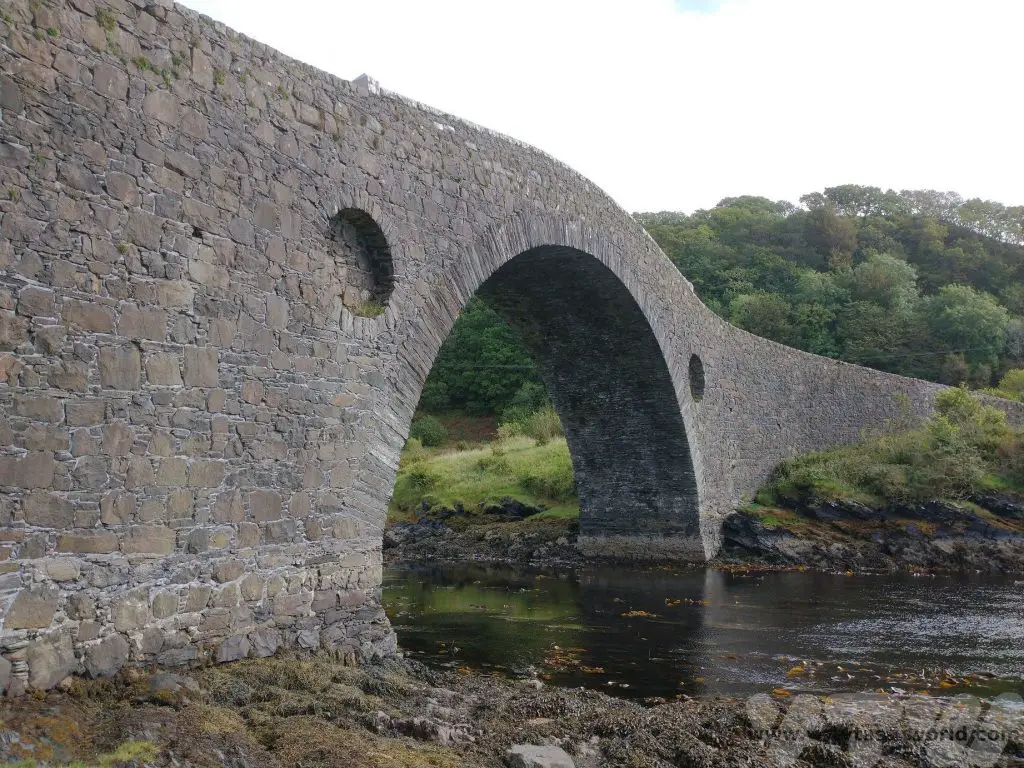
From there head to Ellenabeich, which has a large car park and the ferry port for the three minute journey across the sea to the island. It costs just a few pounds to make the crossing.
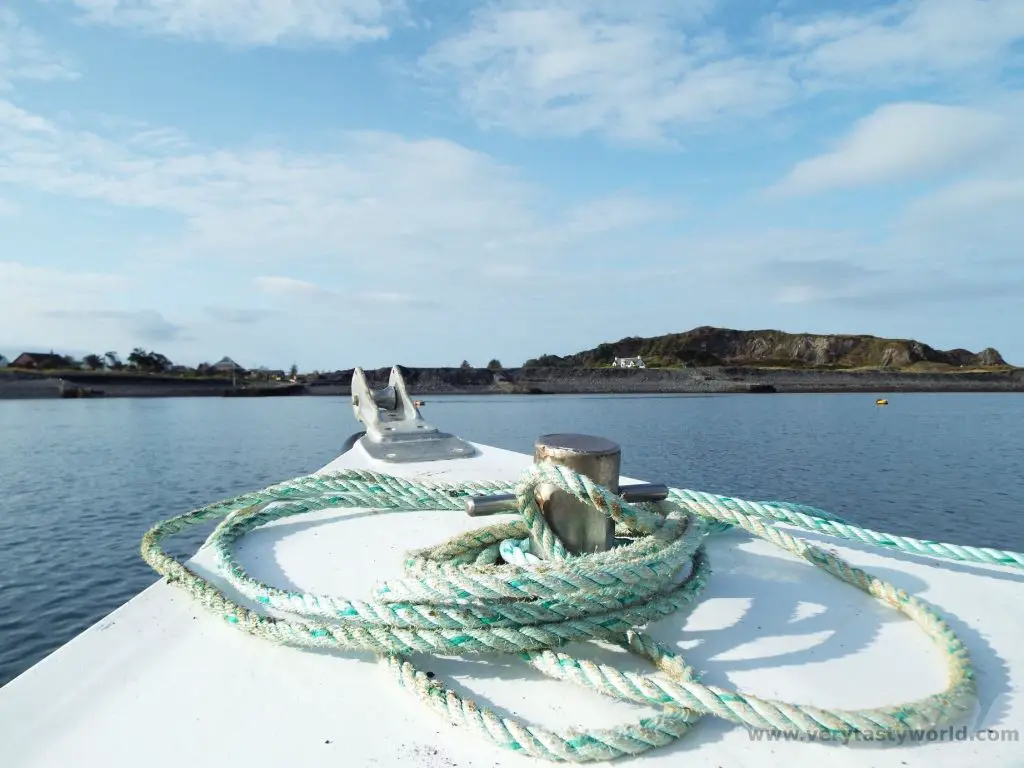
On arrival at Easdale you discover that there are no cars but it is the most delightful place to go walking. There is a café/reastaurant and a folk museum.
Easdale was once the focal point of the Scottish slate industry. As such it has a number of slate quarries, many of which are now flooded. Despite the industry, the island is really beautiful. Skimming Quarry holds a national stone skipping competition every September.
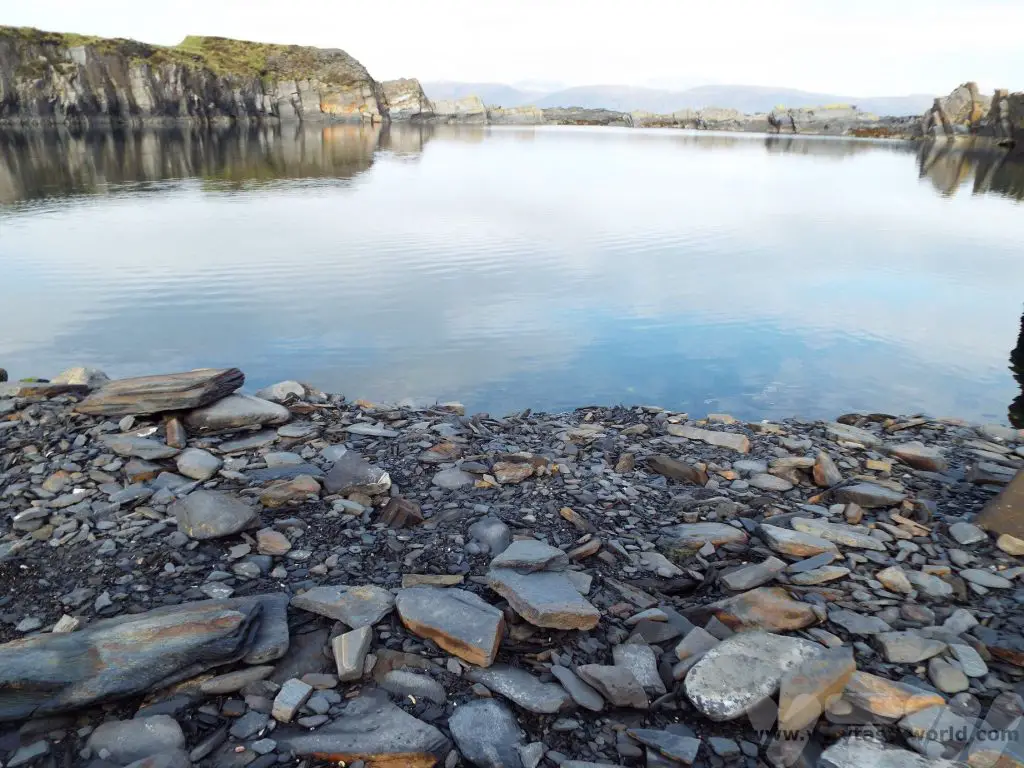
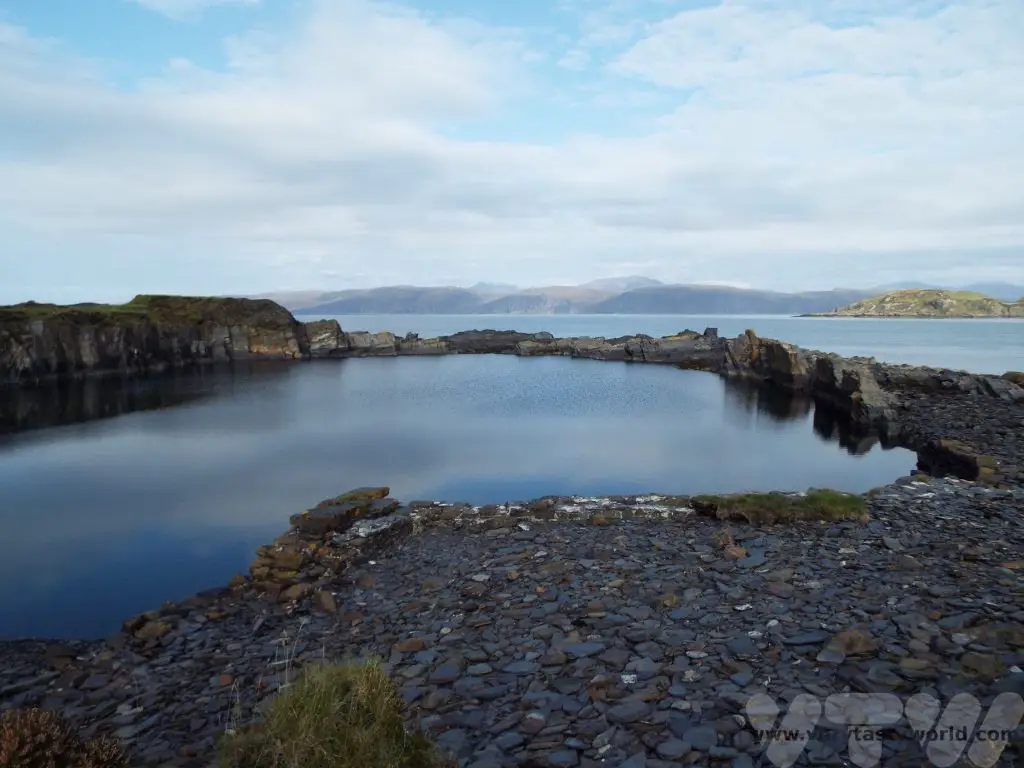
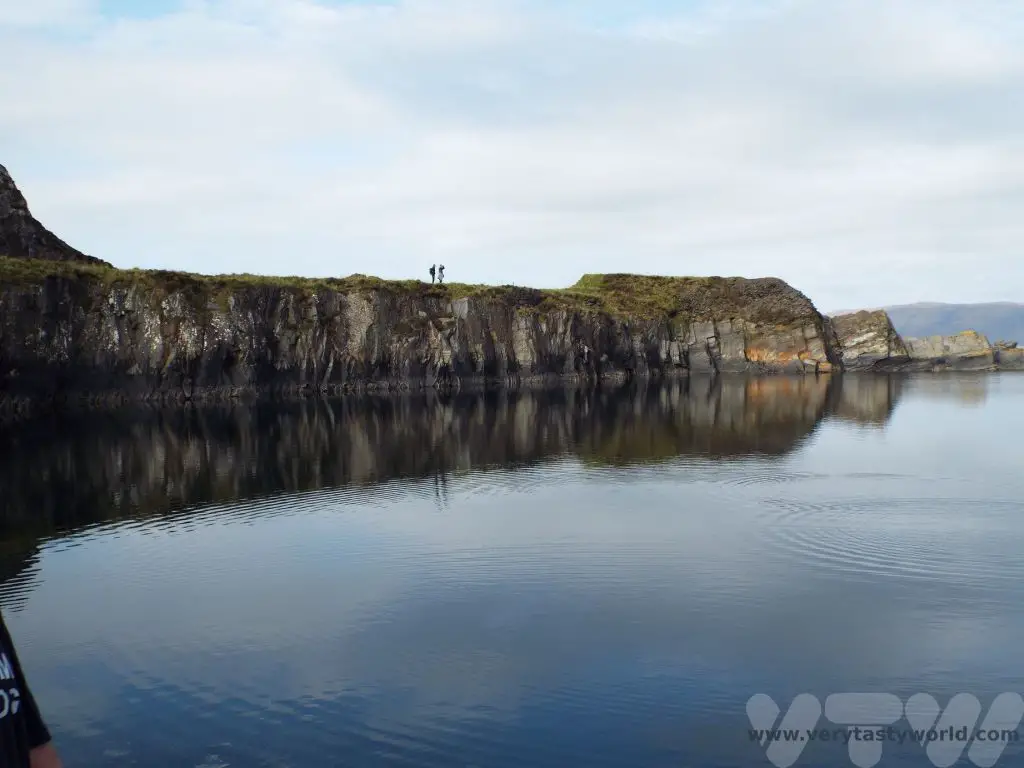
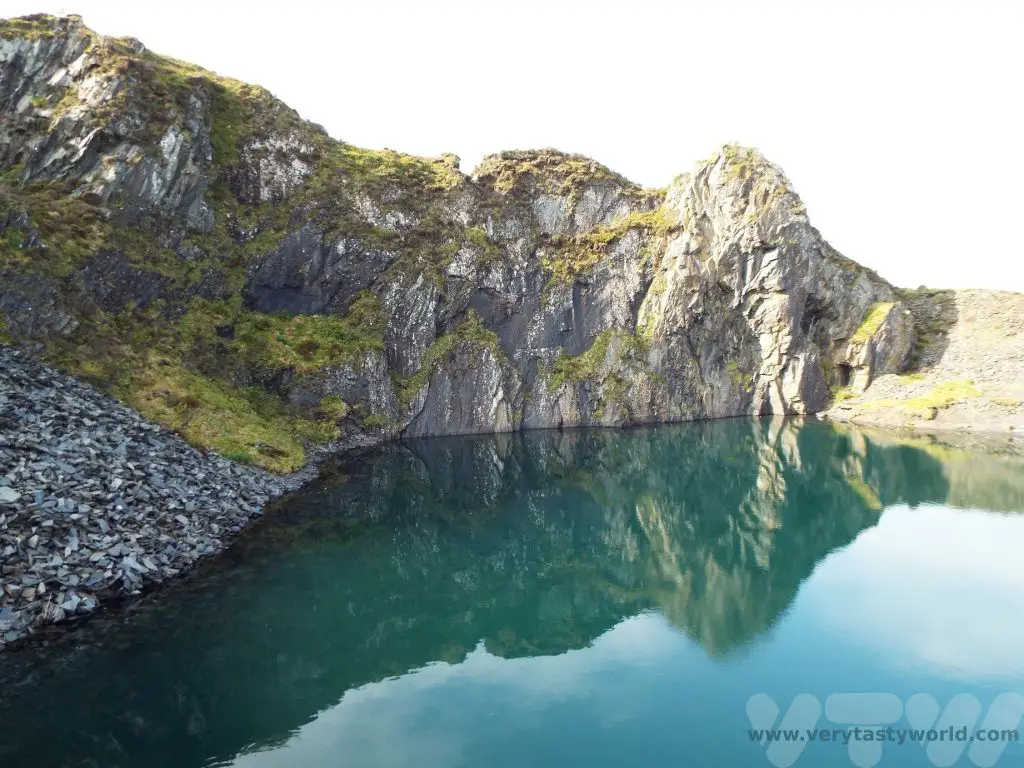
It’s very easy to walk all the way around the island and sometimes you get lucky with perfect weather.
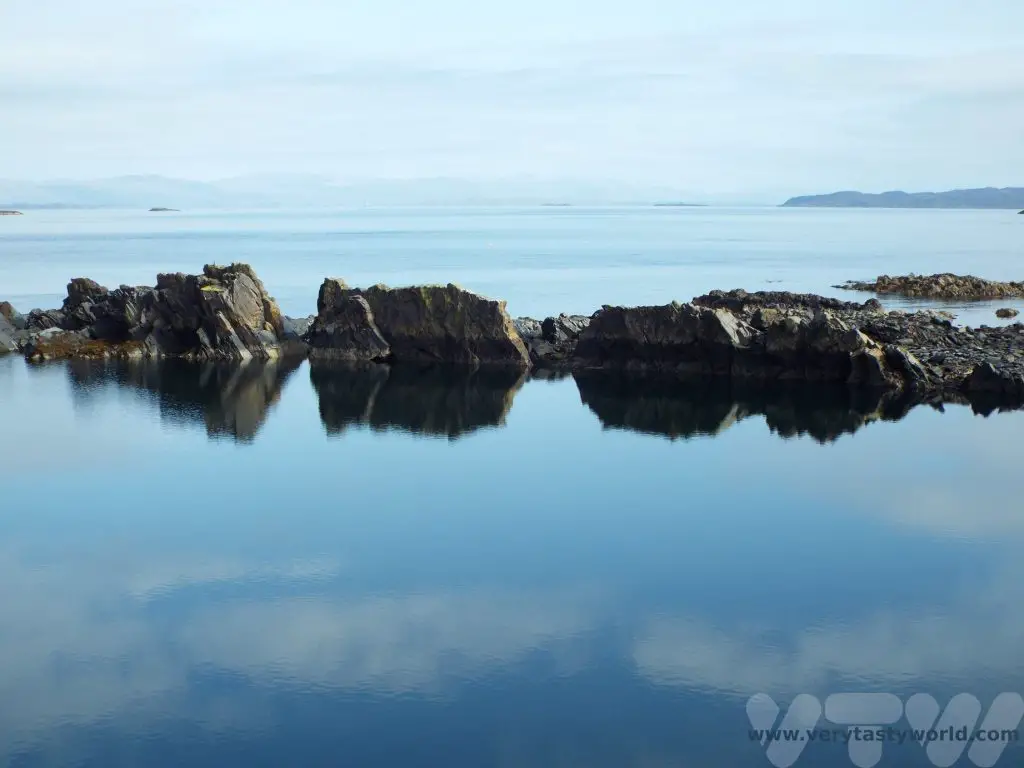
Kilmarten Glen and the Standing Stones
Driving further south towards Kilmarten it’s possible to explore some of Scotland’s prehistoric monuments, including cairns and standing stones.
Stopping in Kilmarten itself there is a museum which gives a history of the area, and the church next door, which has a collection of early grave slabs.
Further down the road there is a car park and, after crossing the road into the field, it’s possible to see Nether Largie Stones. The stones, believed to have been erected 3200 years ago, align with the midwinter sunrise and the autumn and winter equinoxes.
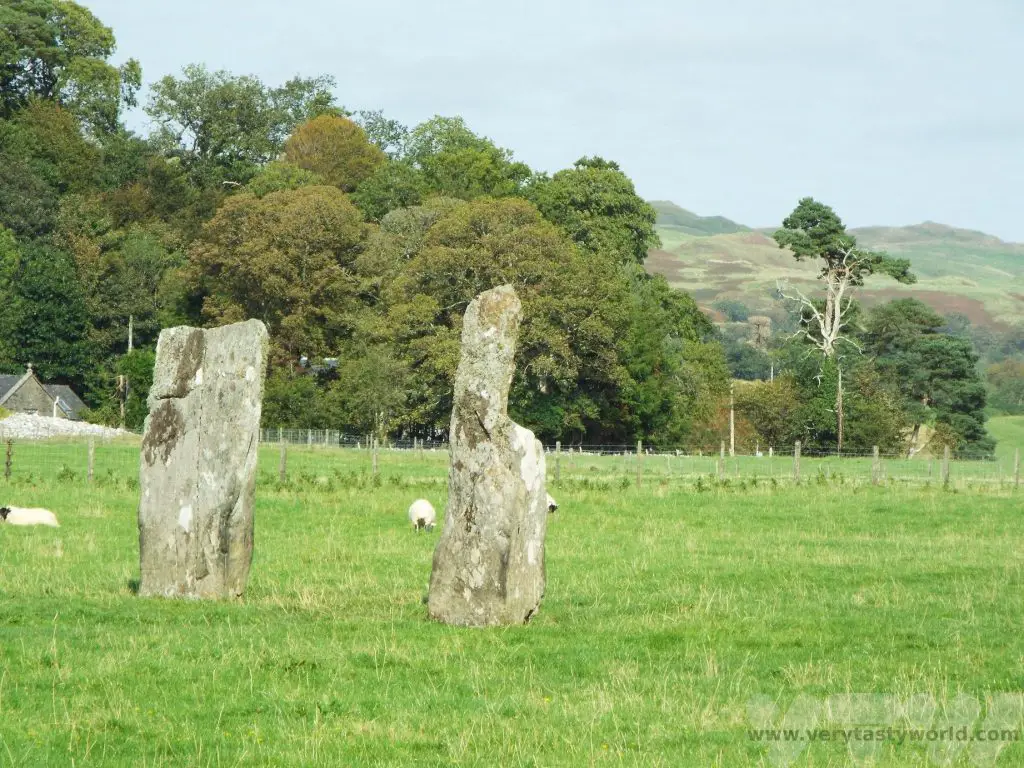
Temple Wood is a stone circle which has a cairn in its centre. It was originally a wood circle, dating from about 5000 years ago but the wood was later replaced with stones. Cremated remains, dating from around 3300 years ago, were found inside the centre of the circle.
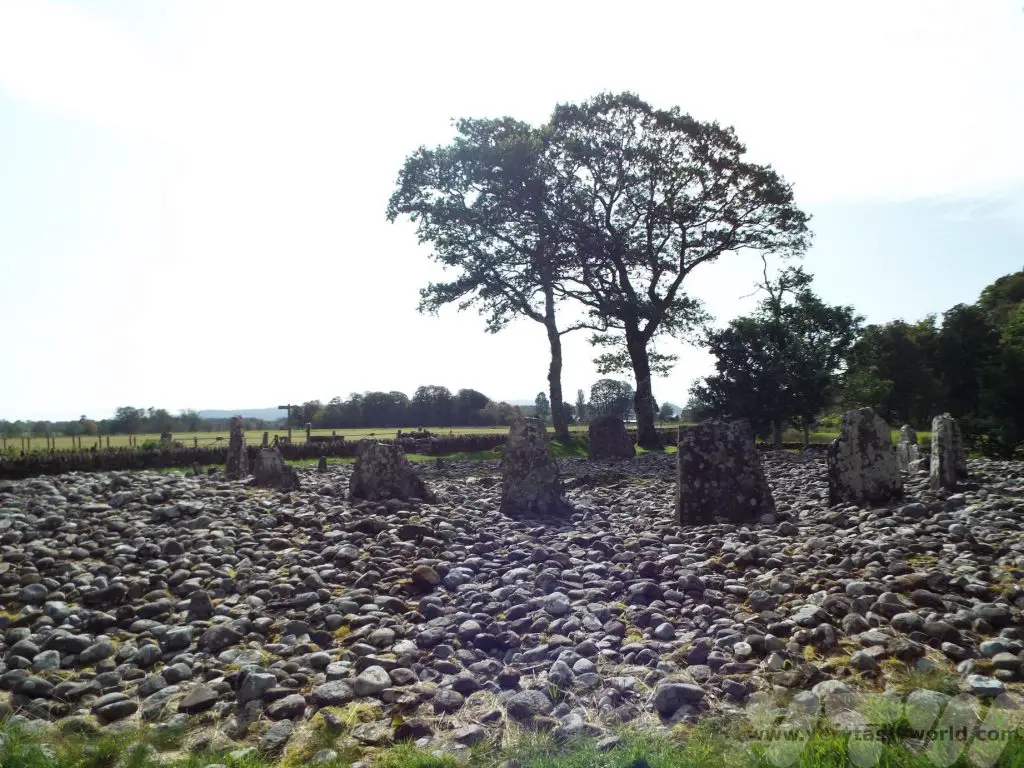
Another short walk just down the lane takes you to the Nether Largie South cairn, a Neolithic chamber tomb. It is thought that it was constructed around 5600-5500 years ago. It’s believed that it was used for burials in the early Bronze Age as well.
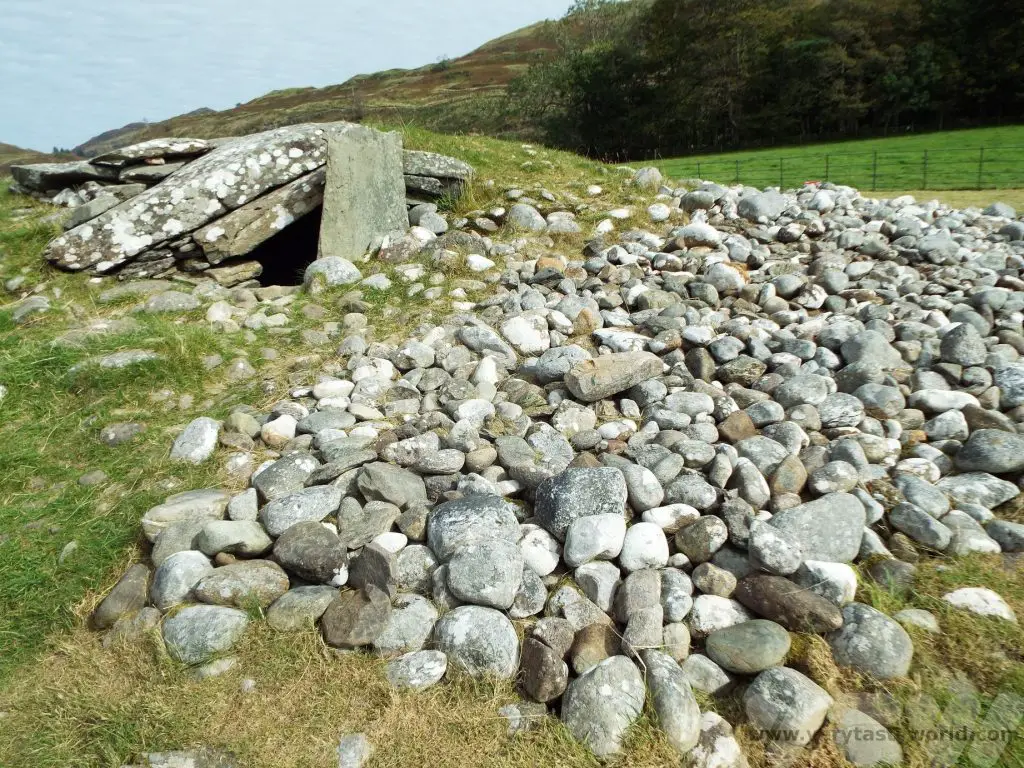
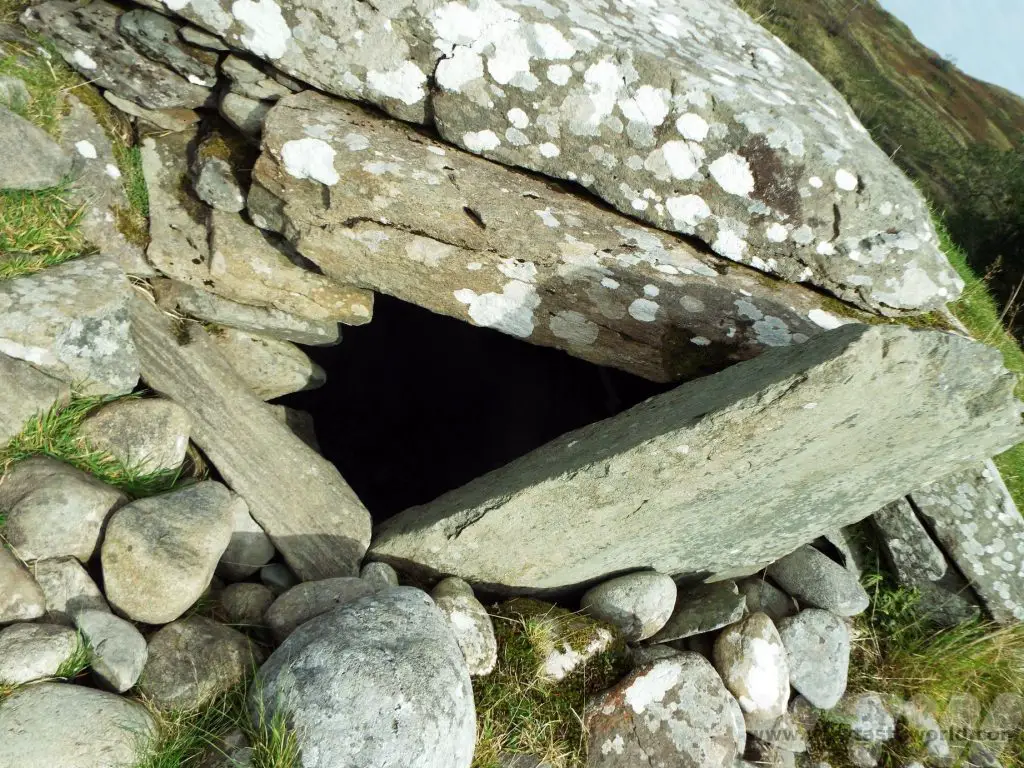
Seafood and Eat It!
On our return to Oban we discovered plentiful restaurants, many of which offer seafood. Blessed with a long and beautiful coastline, Scotland’s seafood is fantastic! If you want the very best, which is also incredibly good value for money, there is only one place to go: Oban Seafood Shack, also known as The Green Shack, located by the harbour on the railway pier.
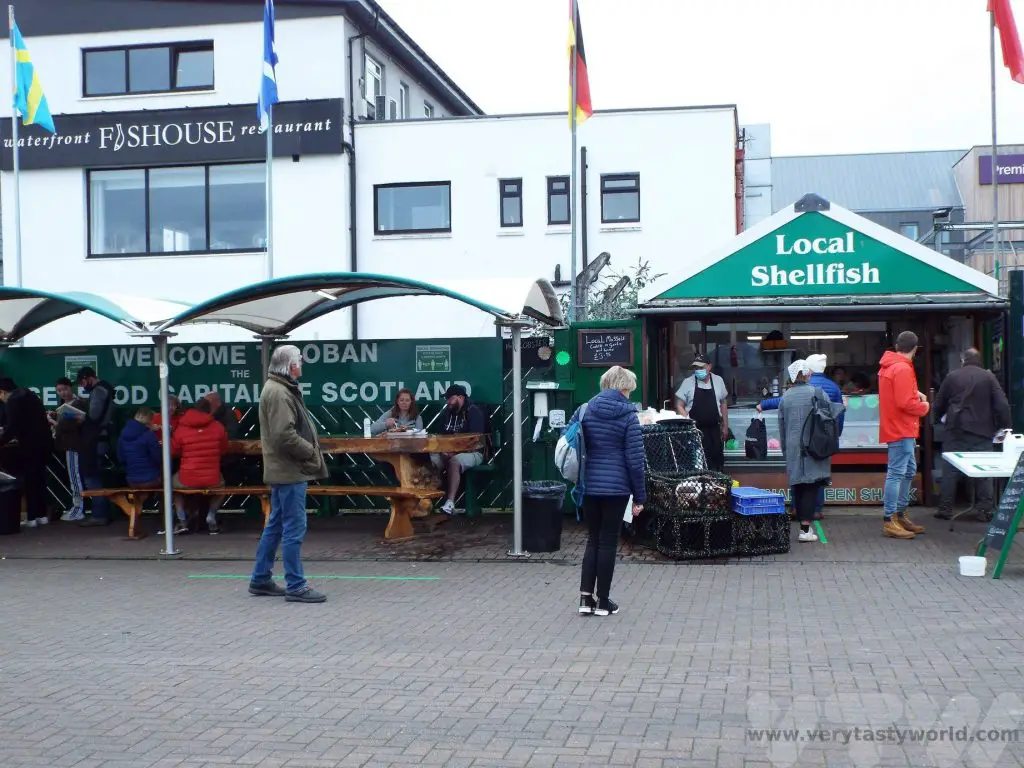
It’s so good, there will almost certainly be a long queue, but it’s emphatically worth the wait as you can order a huge variety of fresh seafood. It is literally a shack – a tiny hut – where you place your order. There’s not much seating, just a small covered area next to the shack and some tables for standing. It’s not the place for an intimate dinner but who cares when the food is this good? We ordered the seafood platter which was just divine: lobster, crab claw, langoustine, mussels, prawns, scallop in butter sauce, hot smoked salmon, pickled herring, crab sticks, squid rings. It was served with simple bread and butter, Marie Rose and sweet chilli sauce.
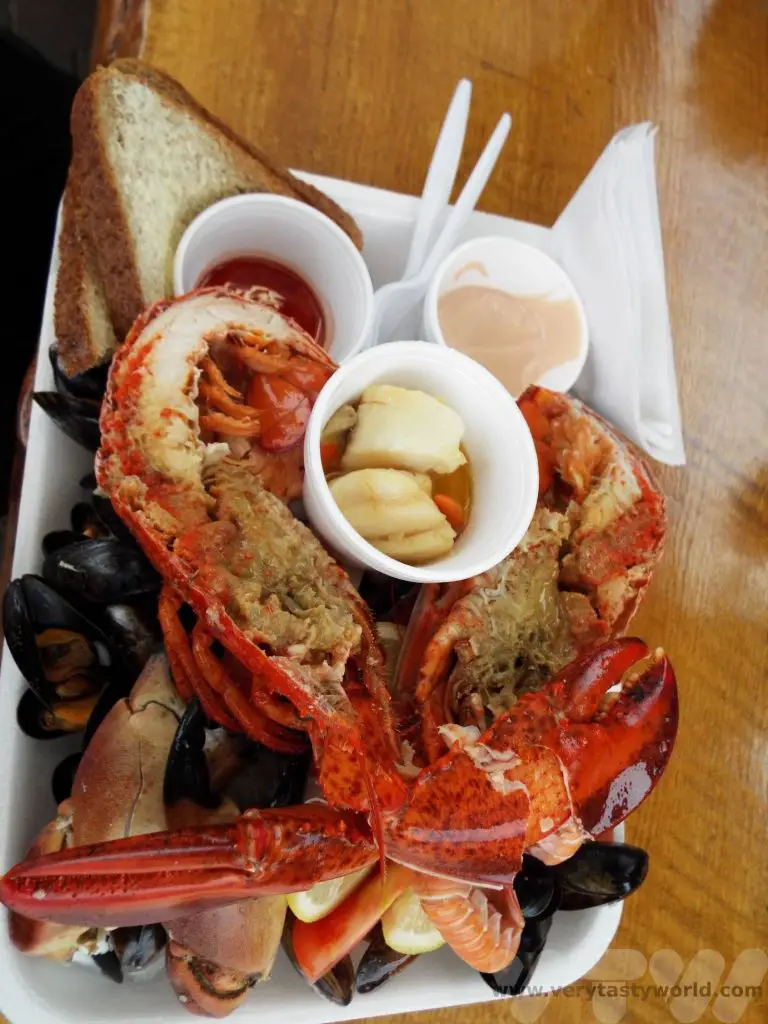
There was so much we needed a platter for the debris. We ate standing up, using our fingers (they have a wash station), although forks were provided to pick crab and lobster meat.
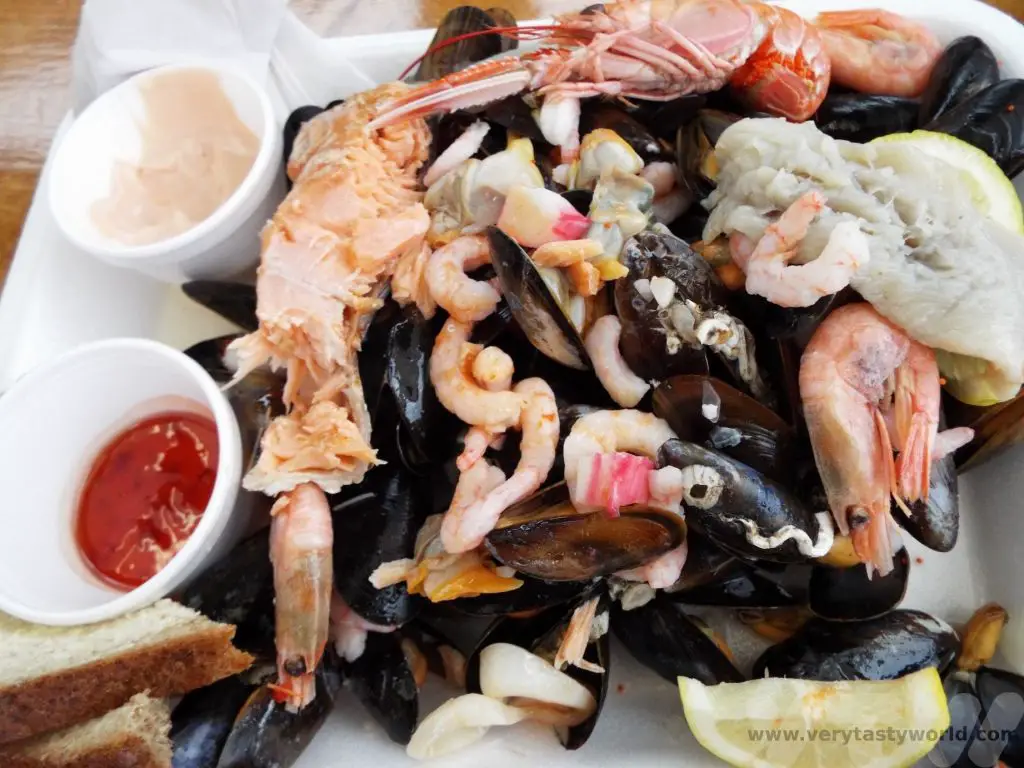
The seafood shack offered food as it should be – fresh ingredients, perfectly cooked, friendly service, no pretension whatsoever. Perfect. (It’s worth noting that at the time of our visit they only accepted cash as payment.)
The following day we skipped breakfast at the hotel in favour popping down to the shack to pick up some prawn and crab sandwiches. Absolutely delish! It set us up for the day to continue our journey through Scotland and onto the Isle of Skye.

Other Attractions in the Area
If you like castles, there are a couple close by: Dunollie Castle is located about 1.5km north of Oban. You can visit the castle, a museum and the grounds. There’s also Dunstaffnage Castle & Chapel, one of the oldest stone castles in Scotland which stands on an enormous rock overlooking the Firth of Lorn.
Oban is also gateway to some of Scotland’s marvellous Hebridean islands via the ferry port. It is possible to enjoy trips to Mull, Lismore, Coll, Kerrera and Barra, some either as day trips or to continue your journey through Scotland. Check the Calmac website for information and timetables.
Related Posts You May Enjoy

Osaka Restaurants Japan – Kuidaore on Dotonbori
We visited Osaka (pronounced O-saka rather than o-SAR-ka) on our very first trip to Japan many years ago. We had already spent time exploring Tokyo, Hakone and Kamakura and it was following an afternoon and evening in Osaka, exploring the neon arcades and playing video games, taking silly photos in the print club booths, riding the Hep 5 big wheel and singing our socks off in a karaoke bar (where you get a private booth rather than have to sing in front of complete strangers), that we realised that we had fallen in love with Japan. The following day we visited the Dotonbori area in the Namba district and discovered Osaka’s restaurants. We decided that Osaka was our favourite place in the world.
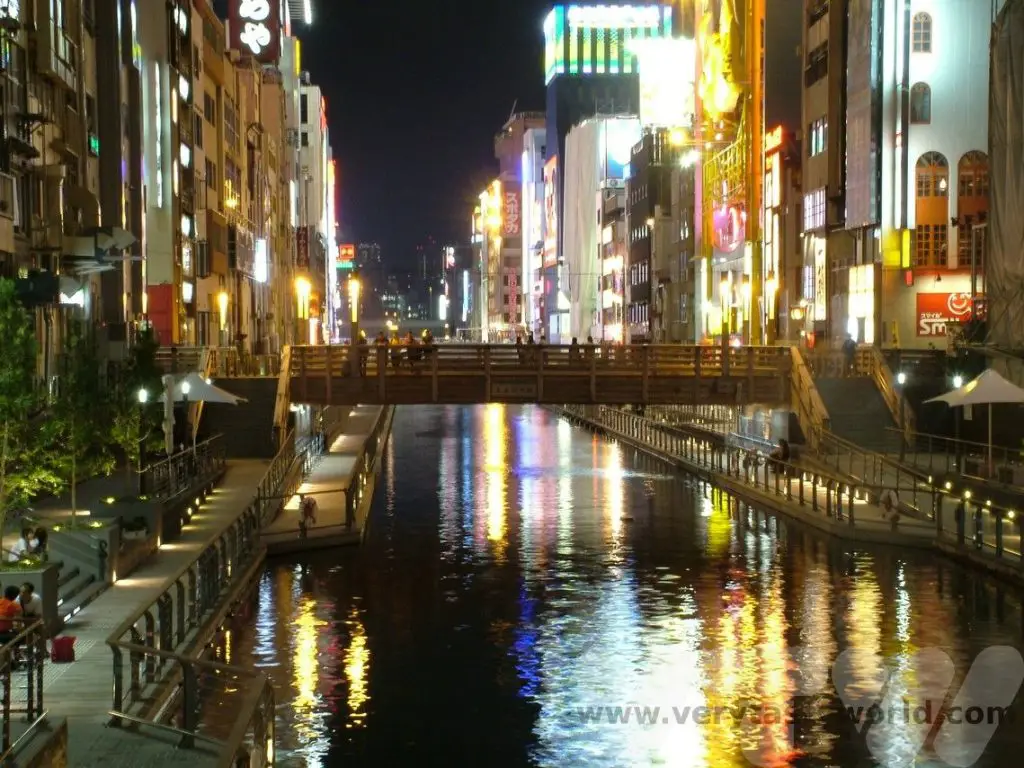
We’ve returned to Osaka many times over the years and we always make a beeline for Dotonbori. We’ve often stayed in business hotels close by. It’s a short walk away from the JR Namba Station Exit 14 (Yamatoji line), which is especially useful if you are using your JR Pass. Be aware that Namba is a big station. If you are arriving on the shinkansen (bullet train) you can get there from Shin-Osaka using the subway Midosuji line to Shinsaibashi Exit 4-B. (N.B. you can’t use your JR Pass on the subway.)

Osaka is known for being one of Japan’s centres of commerce, indeed there’s a phrase that many salarymen use as a greeting: ‘mokari makka’ which means ‘are you making money?’ The residents of Osaka speak Kansai Ben, the dialect of the region. It’s quite different to the Japanese we’ve learned in classes. For example, Osaka residents will say, ‘okini’ as thanks instead of ‘arigato’; although arigato will absolutely be understood you may well receive a big smile if you use ‘okini.’
Dotonbori History
Dotonbori means ‘Doton Canal’ and the history of the area goes back several hundred years to 1612 when Yasui Doton, a local merchant, started constructing a canal system in the area to link the Kizugawa river to the Umezu river. However, he was killed in 1615 during the Siege of Osaka and his cousins completed the canal project, naming it after Doton. Following completion, the area thrived, trade increased due to the better transportation along the canal and Dotonburi became an entertainment district, with theatres, teahouses and restaurants. It’s a fantastic place to visit, especially for foodies!
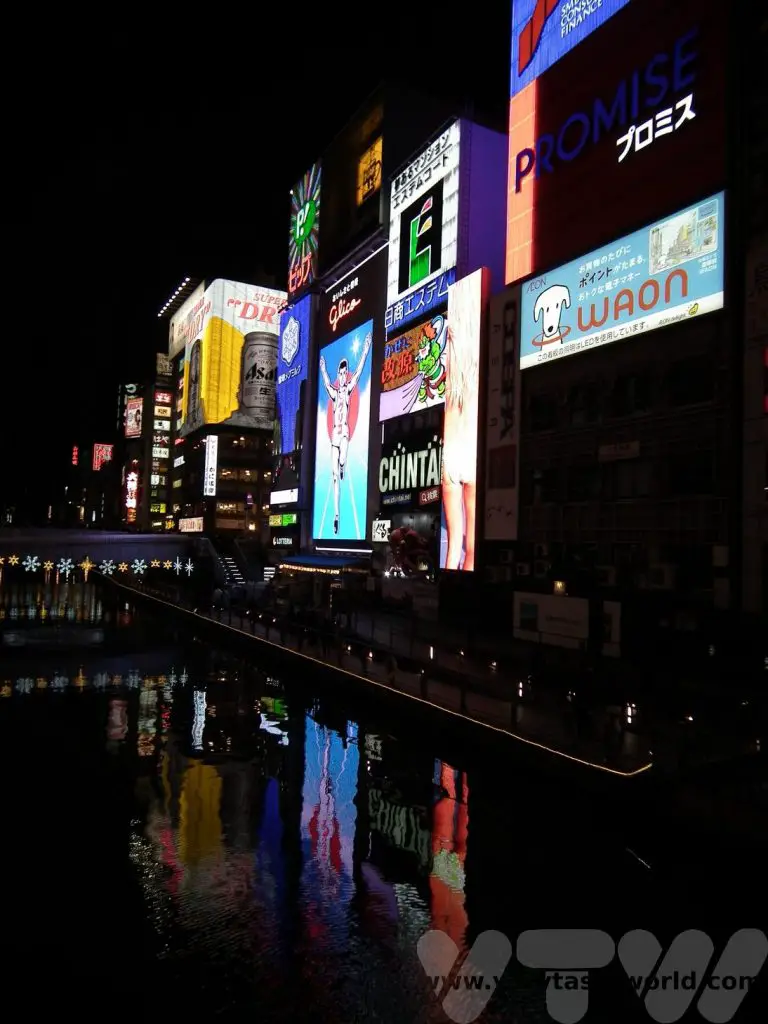
The district is defined by street between the Dotonboribashi Bridge to Nipponbashi Bridge. Probably the most iconic image of the area is that of the Glico running man – and it’s essential to see him at night, brightly lit in neon. Glico is a sweet manufacturer established in 1922 and famous across Japan. They are probably best know for those delicious Pocky coated biscuit sticks.
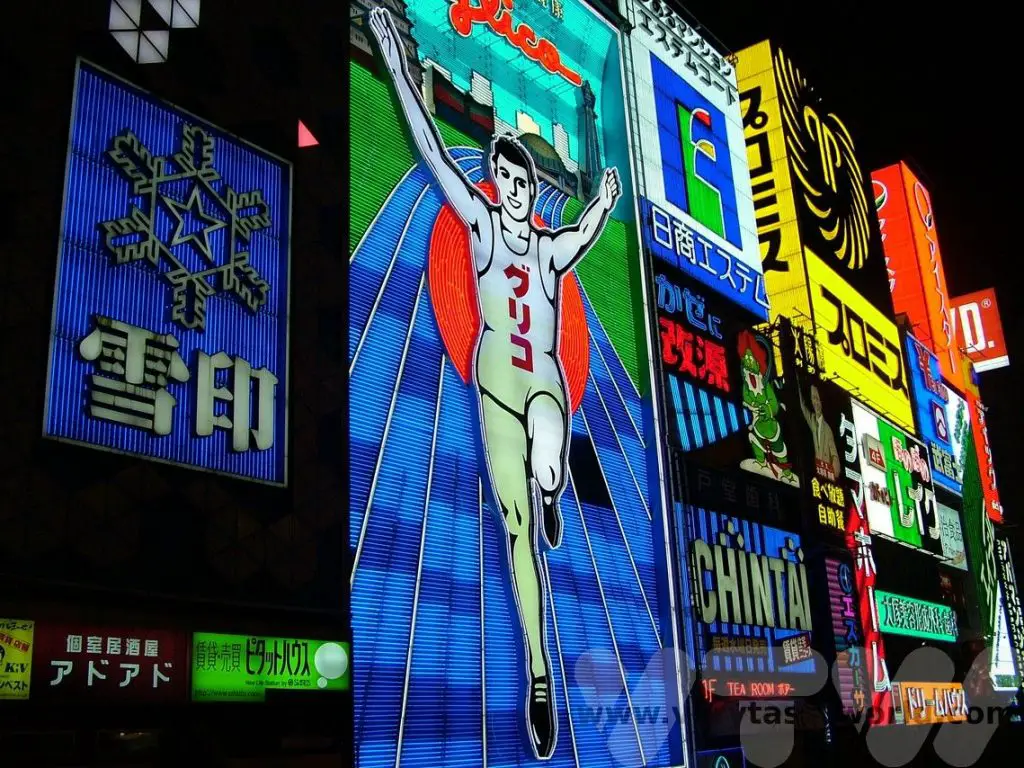
Dotonbori is one street, but actually the surrounding streets are also full of excellent bars and restaurants. We’ve had some of our best nights out in Osaka by wandering into random bars in the area. Locals and tourists alike are very friendly and we’ve often just started chatting with people. There was one particularly memorable night when a pair of airline pilots decided to buy Jagermeister bombs (a Jagermeister shot inside a glass of Red Bull) for the denizens of the entire bar which resulted in a highly caffeinated boozy evening and us sleeping in so late that we missed much of a planned excursion to Kobe the following day!
Kuidaore
The word ‘kuidaore’ means to go bankrupt by extravagant spending on food and Dotonbori would be a place where you could have a really good attempt at achieving this as it is chock full of excellent restaurants.
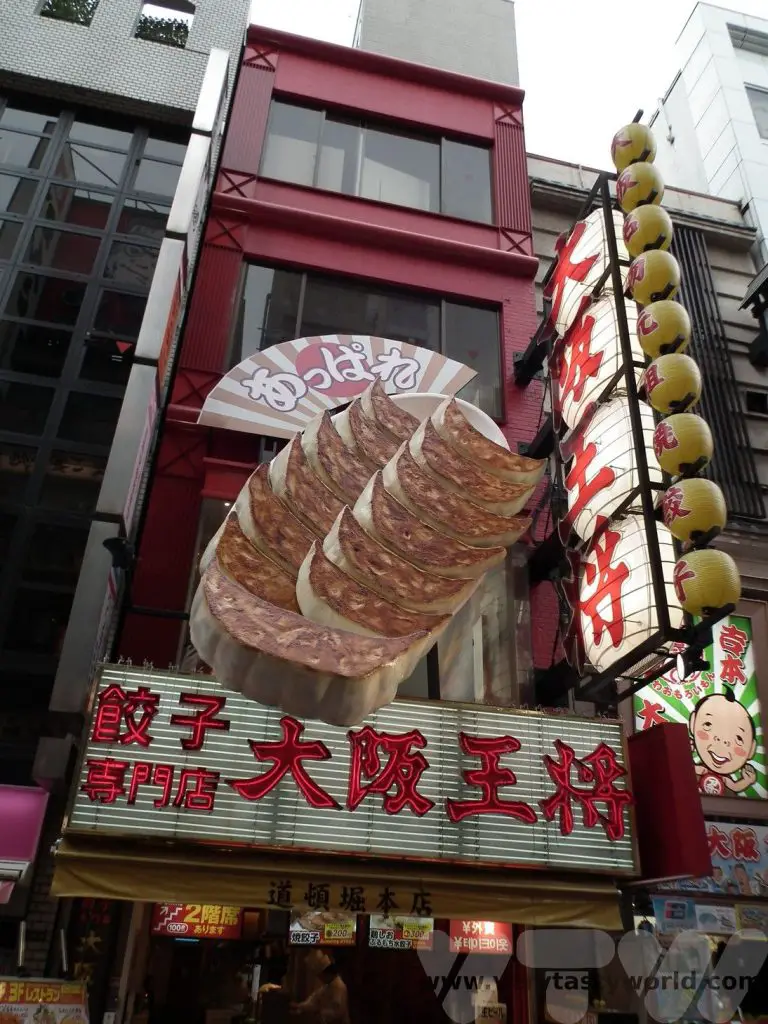
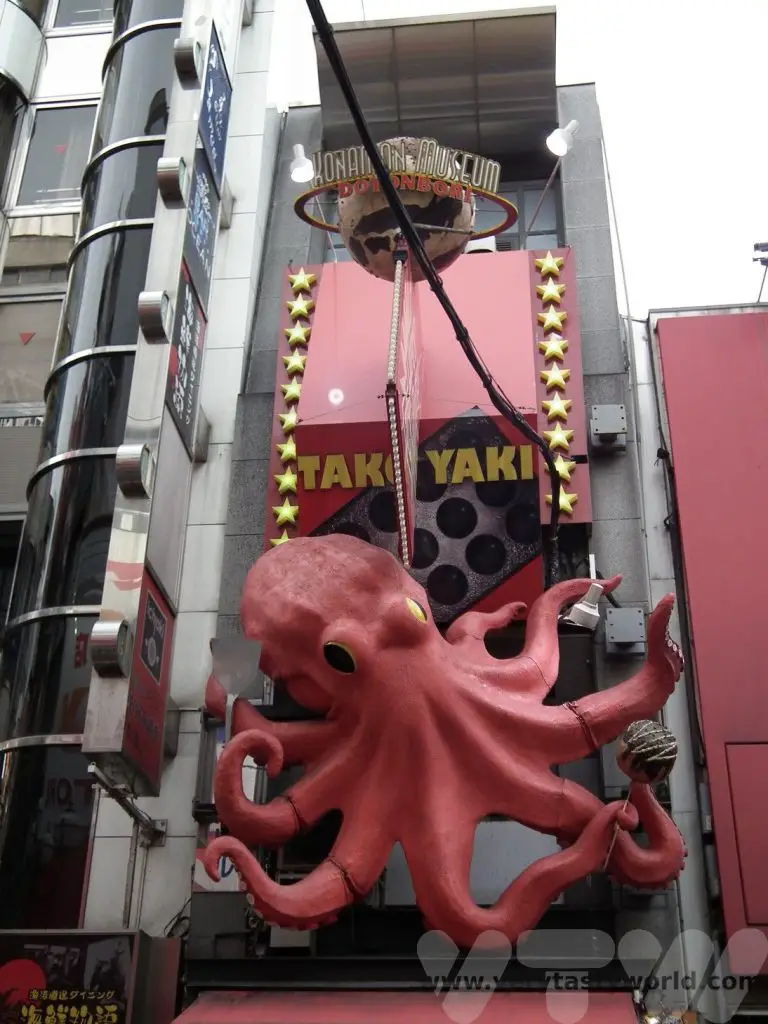
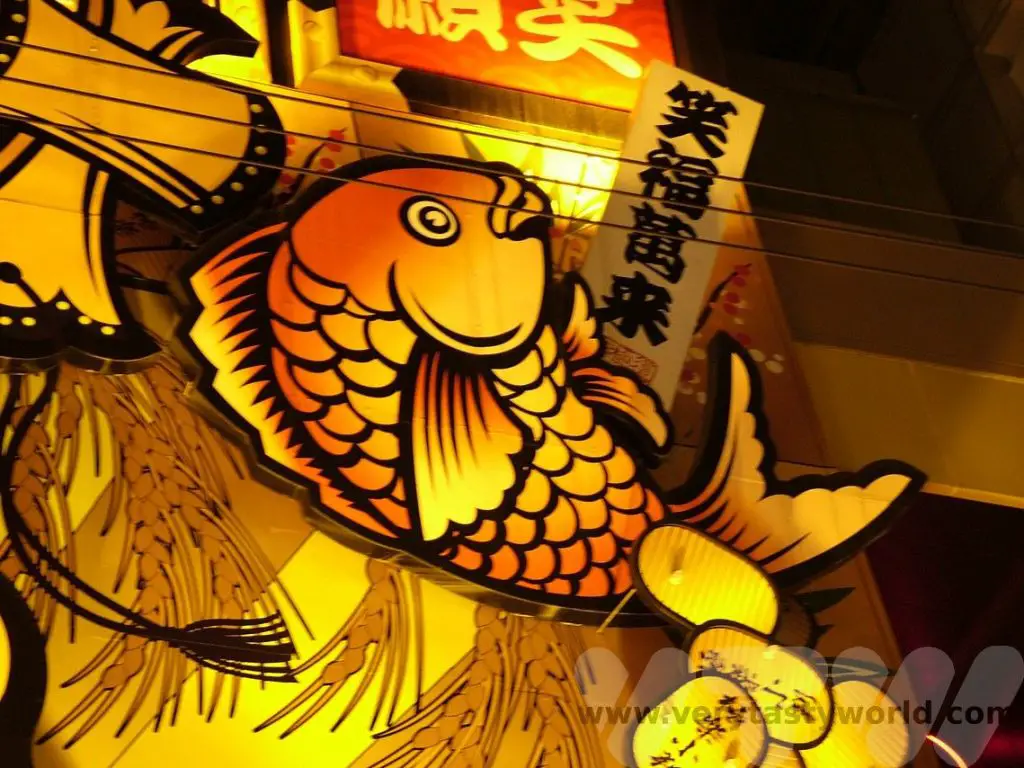
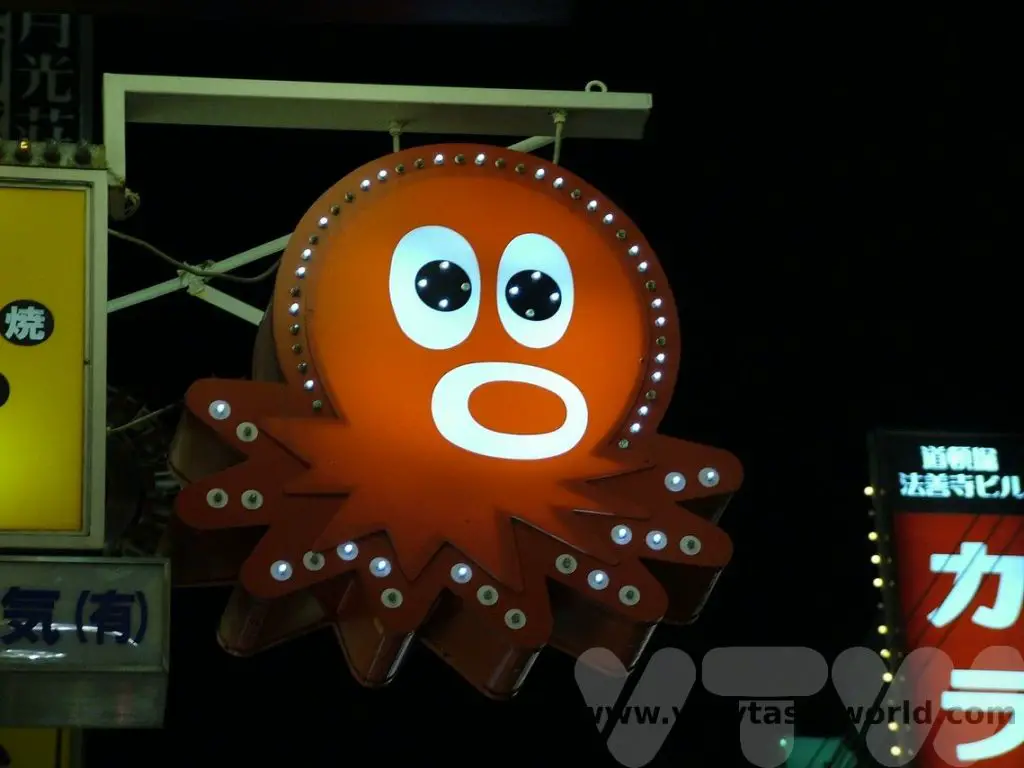
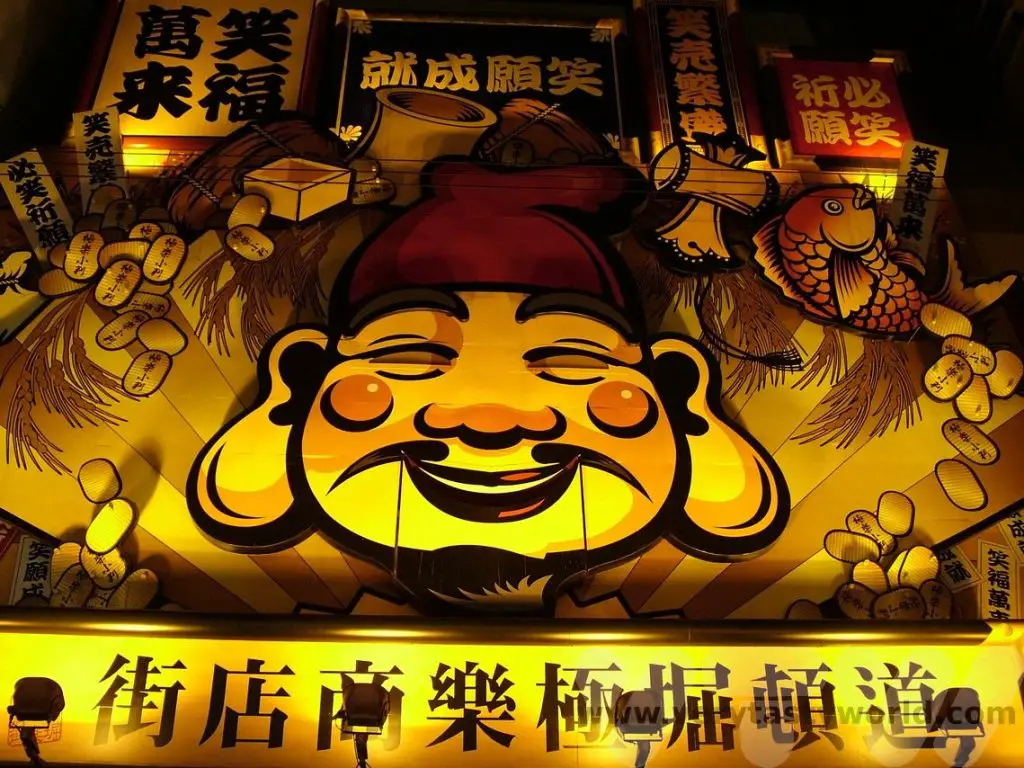
One thing to remember when visiting cities in Japan is to look up! In the UK most shops and restaurants are located at ground level but Japan is a country with high rise buildings. Very often shops and restaurants will be located on multiple levels within the same building. You will often see boards outside the building advertising various emporia: F1, F2 etc to go up, B1, B2 etc to go down. (N.B. floor levels in Japan match the American model where the ground floor is called the first floor, unlike in the UK where the ‘ground floor’ is at street level and the next floor up is the ‘first floor’.)
Essential Osaka Restaurants
Takoyaki – The Best Street Food
Takoyaki is quintessential Osaka street food. It comprises spherical octopus pieces in a batter which are cooked en masse in a griddle.
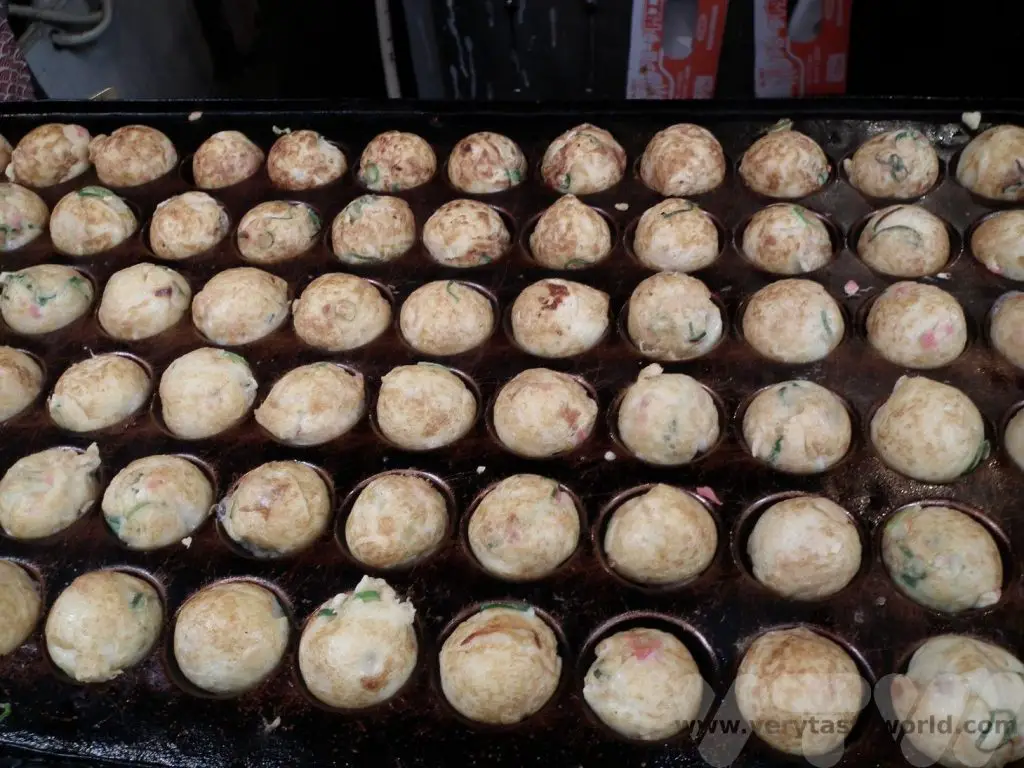
The takoyaki maker expertly and deftly turns each octopus ball by hand so that they are cooked evenly.
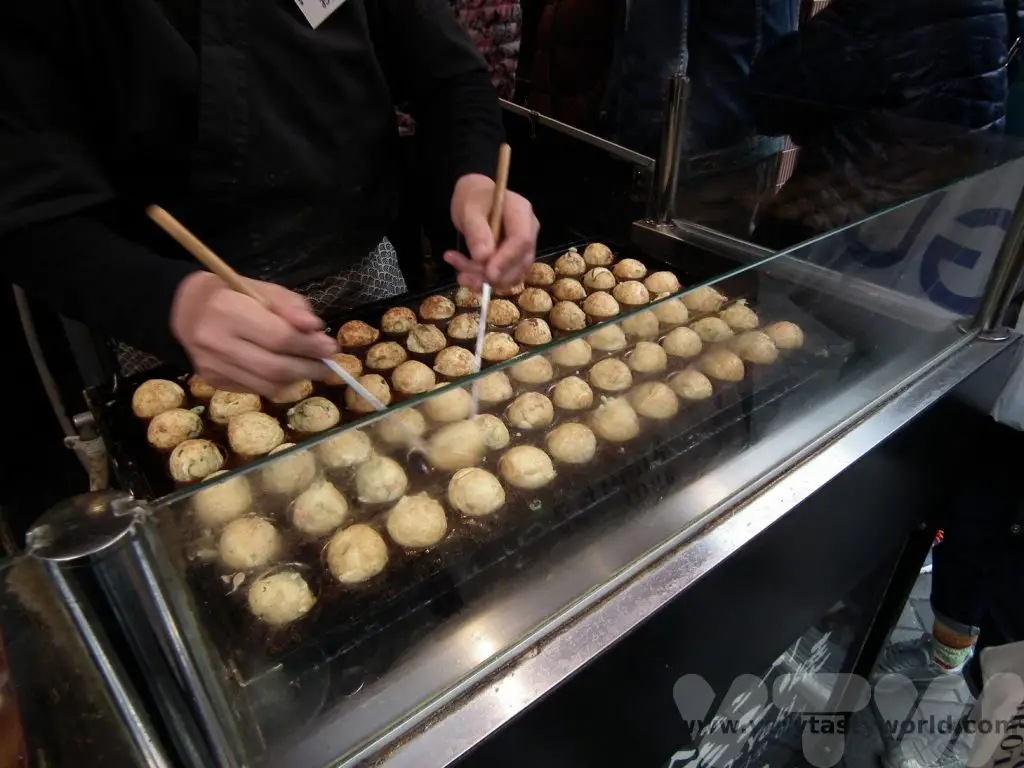
Served with mayonnaise, takoyaki sauce (which is similar to brown sauce) and bonito flakes (skipjack tuna flakes shaved to wafer thin slices – which are rich in umami and are often used to make Japanese dashi stock), which undulate gently in the heat of the takoyaki. You just have to wait a little while before scoffing because they will be extremely hot as soon as they come out of the griddle.
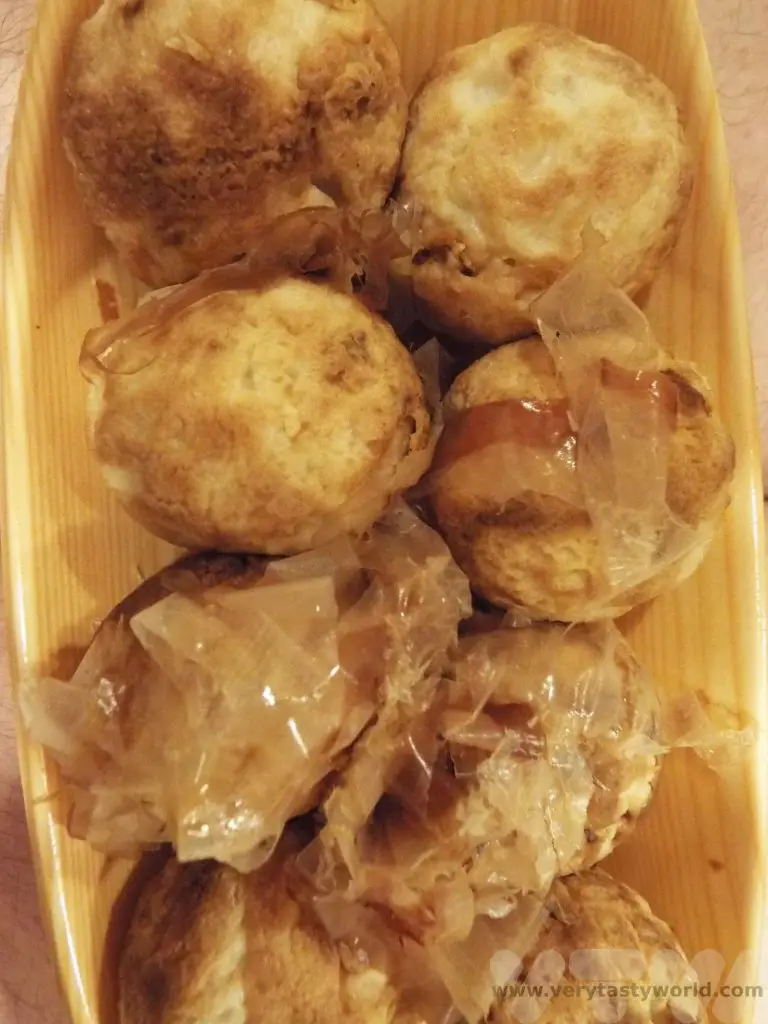
Okonomiyaki – As You Like It
Okonomiyaki, which translates as ‘as you like it’, is often described as a cross between a pancake and a pizza. It’s a cabbage based batter (but don’t let that put you off – it’s really delicious) with multiple fillings and toppings. Some establishments have a chef prepare the okonomiyaki, others will let you sit at the griddle and you can cook it yourself.
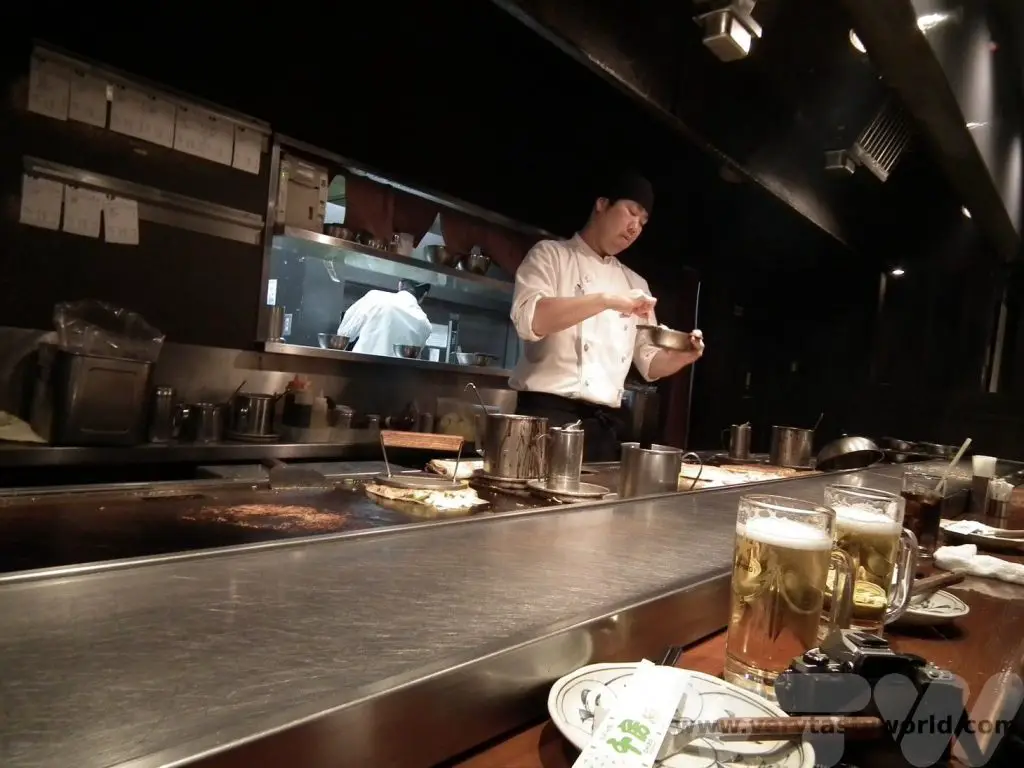
The basic batter mixture is prepared and cooked on the griddle.
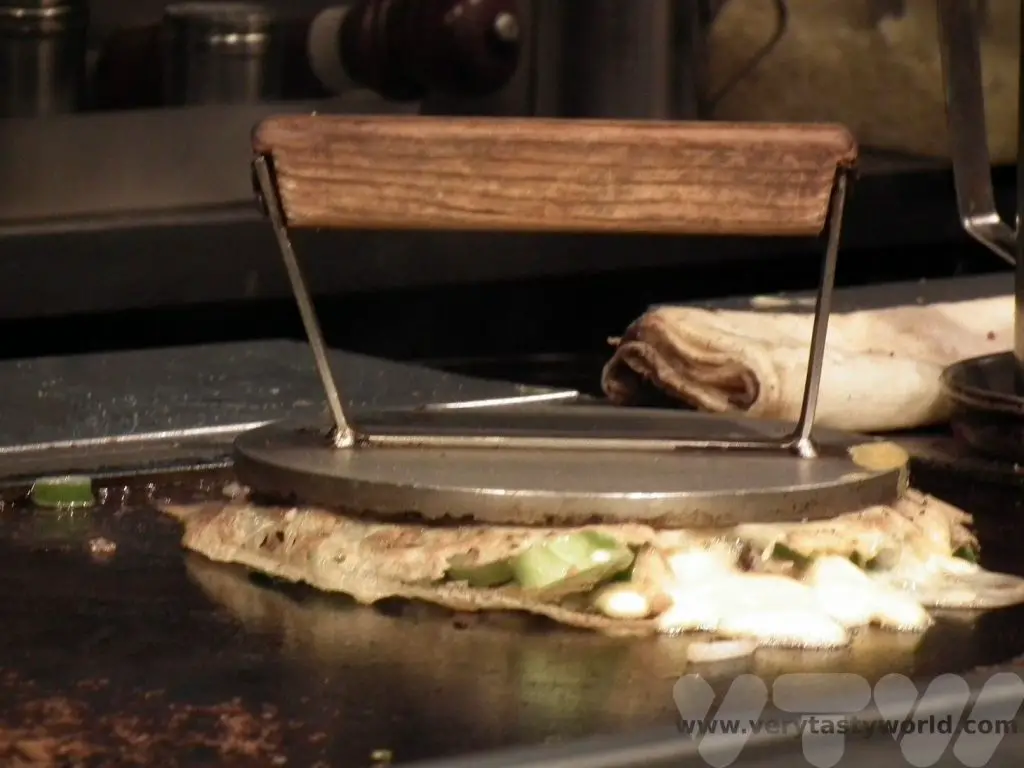
Then you have a choice of toppings – meat and prawns are popular choices and veggie options, such as kimchi are also available.
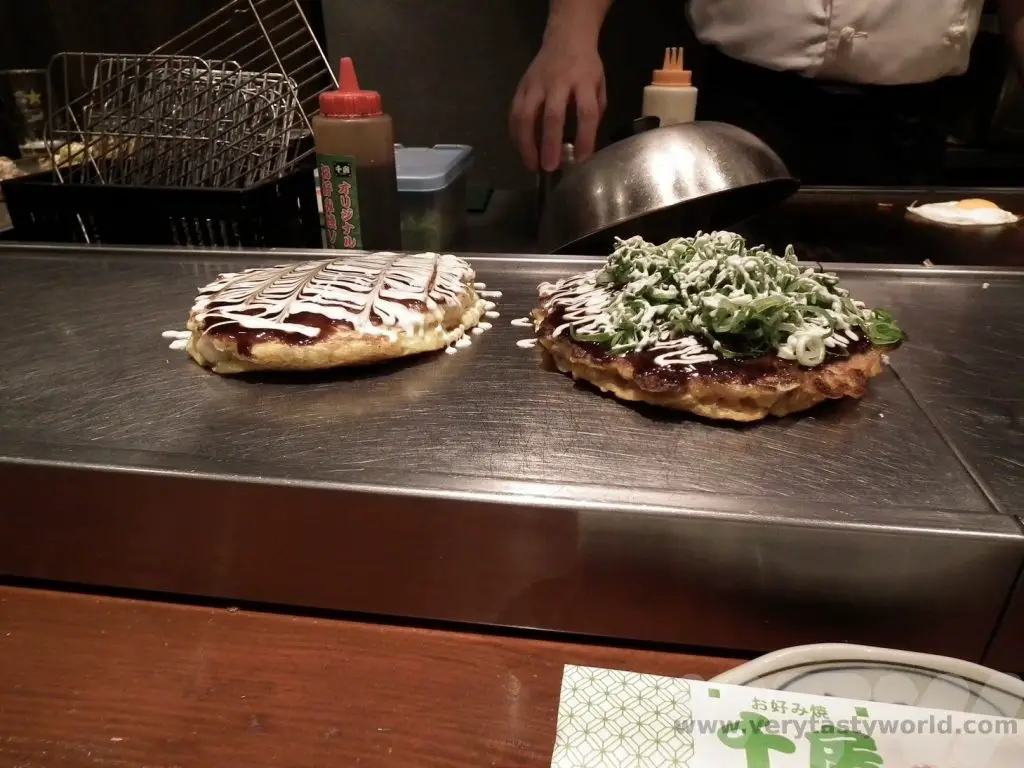
The okonomiyaki will be garnished with a variety of yummy things, including mayo, okonomiyaki sauce (similar to takoyaki sauce/brown sauce), flakes of nori seaweed and those delightful undulating bonito flakes. Chilli sauce may also be available. The chef will embellish your okonomiyaki in the most delightful way. And of course, when the chef asks you what garnish you would like, the correct answer is EVERYTHING!
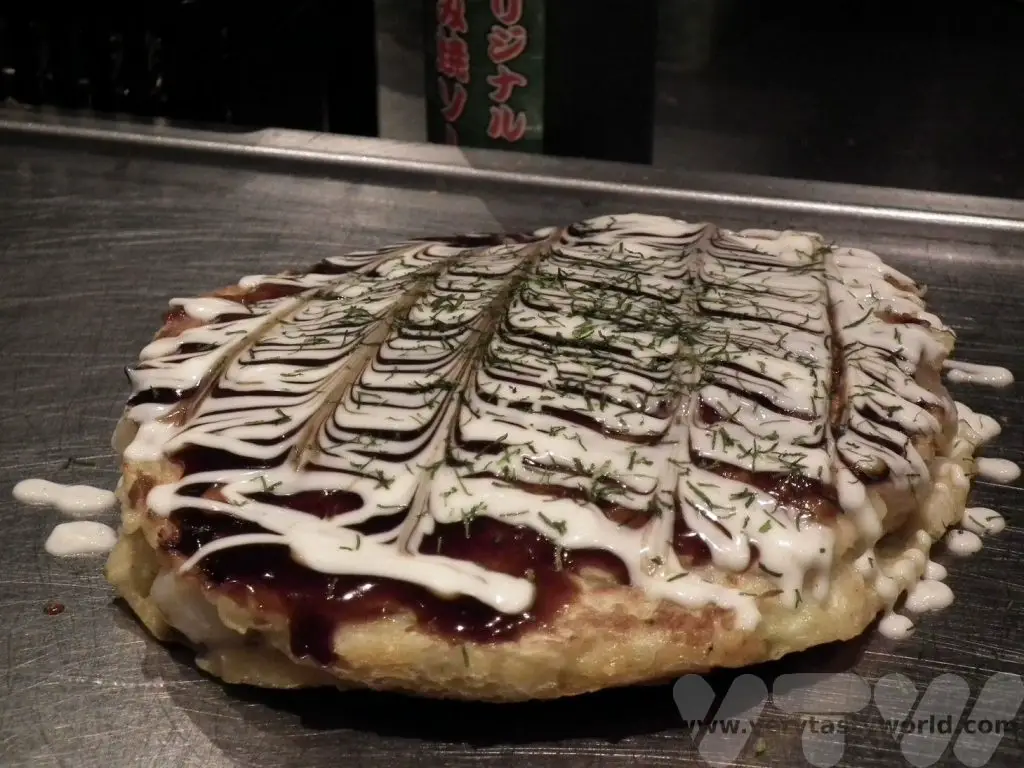
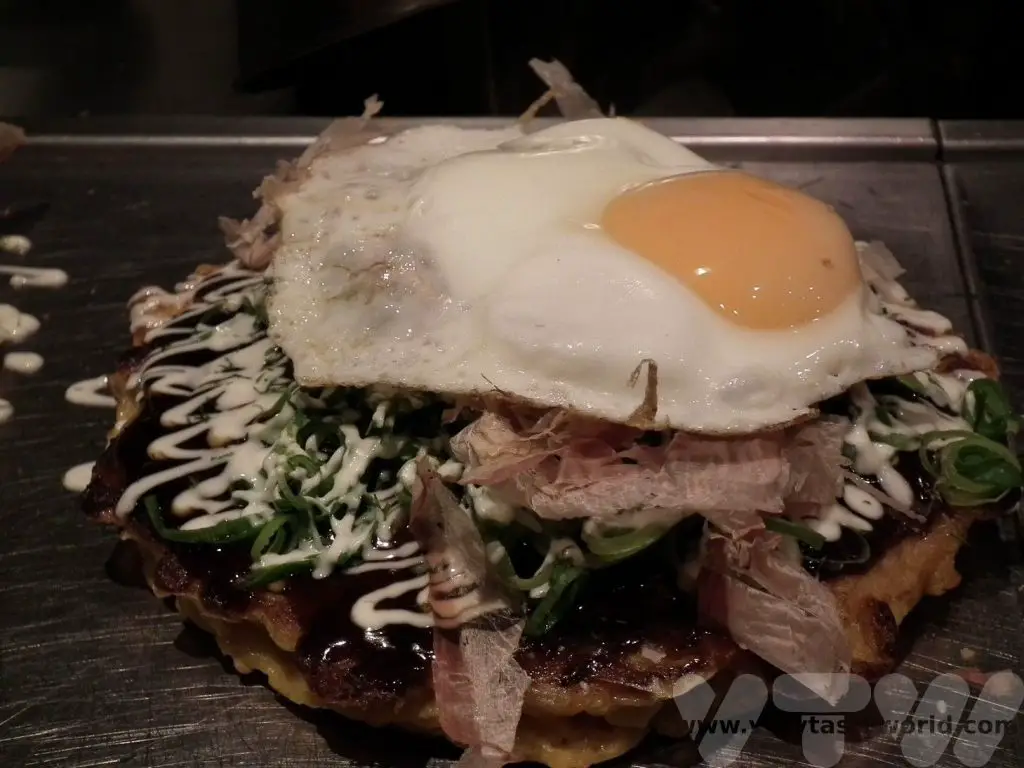
Fugu – Dare You Try Puffer Fish?
Fugu is the fish that has a formidable reputation – it’s the puffer fish, parts of which are deadly poison particularly the liver, the ovaries, eyes, and skin. The toxin basically paralyses you and you asphyxiate while still conscious. Not very nice at all.
But fugu is also a prized delicacy. The non-poisonous bits are fine to eat but absolutely can only be prepared by a licenced chef who has trained for several years. You can eat fugu all over Japan but it was at Zubora-ya, with its highly distinctive sign comprising a giant pufferfish lantern outside the restaurant, that we first tasted this fearsome fish.
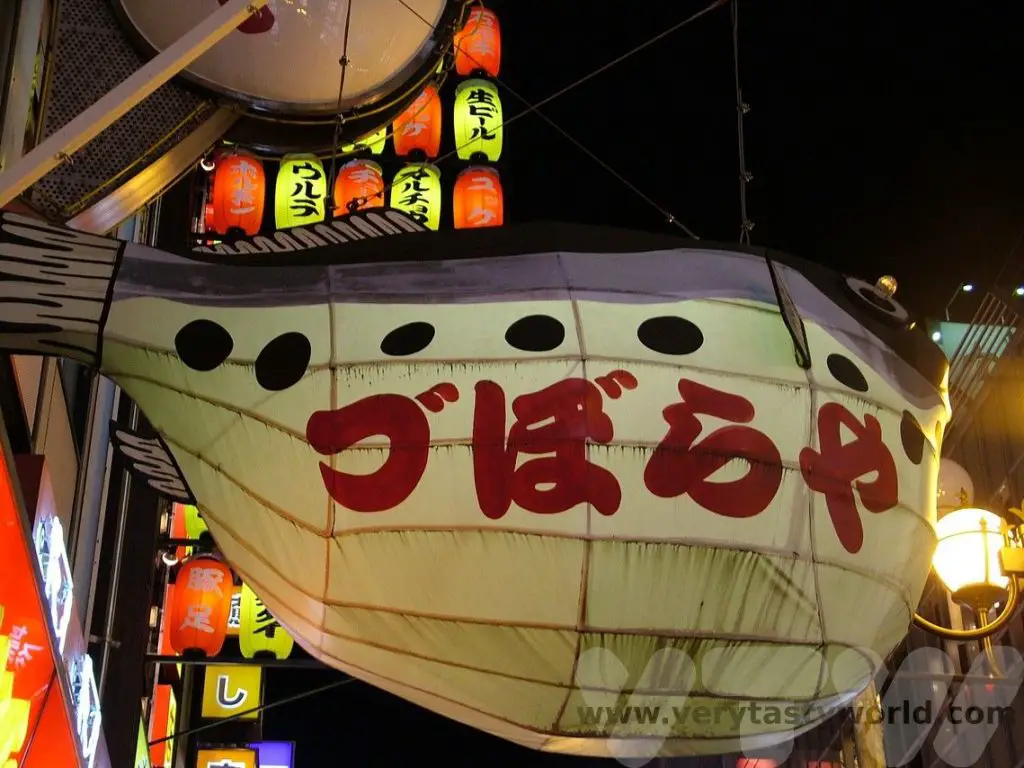
We thoroughly enjoyed a set menu at Zubora-ya – sushi and sashimi is the conventional way to enjoy fugu. It has a mild flavour and a firm texture that is something like a cross between squid and monkfish. It was delicious. And we survived!
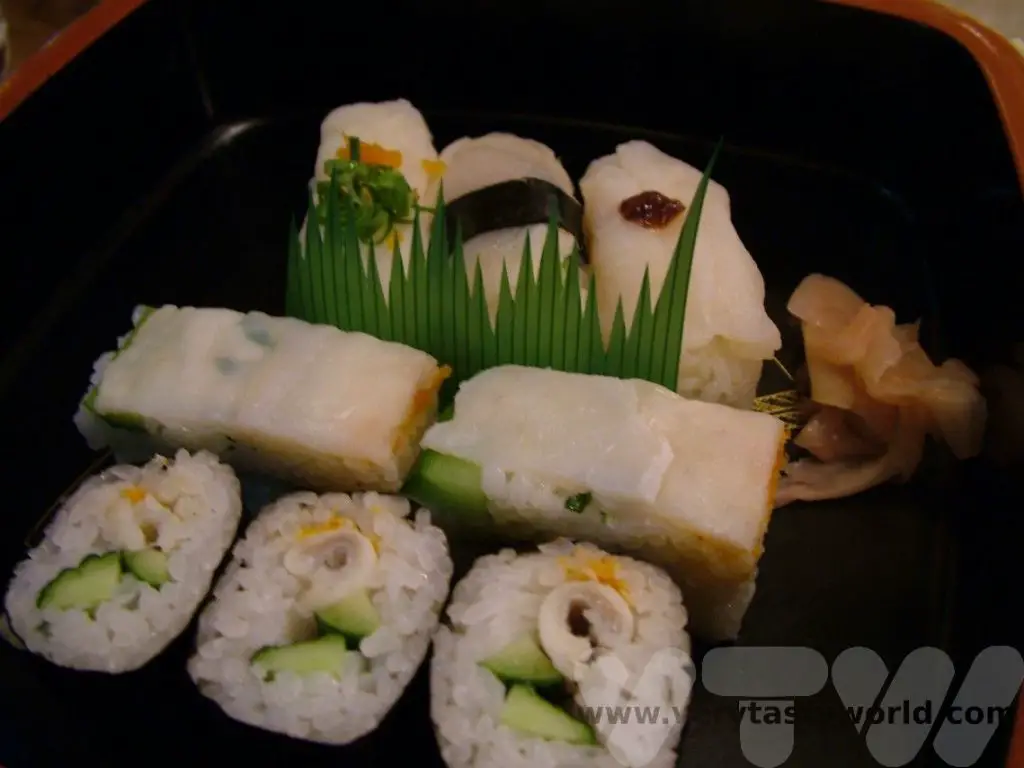
Sadly, Zubora-ya had to close during the pandemic and has not reopened.
Kani – Crab Heaven
Kani Doraku is another distinctive restaurant which has a model of a giant crab waving its pincers on the outside wall, beckoning you inside (well, that’s our interpretation!).

We have eaten here several times and always had a hugely enjoyable meal. Again, it’s a multi-storey building and, depending on how busy it is you may eat within the restaurant or be taken to a private room with tatami mat flooring and a telephone. The telephone was a bit daunting first time around but we picked up the phone and said, ‘kite kudasai,’ (please come here) and someone came along to take our order – which largely involved pointing at a picture menu. Even though it’s a large restaurant it’s very popular these days so it’s worth booking. There are actually multiple restaurants of this chain along Dotonbori, so check out the others if the first one you try is full. (The most popular is closest to the Glico Man.) The set menus aren’t cheap but they are good value and the food is utterly delicious.
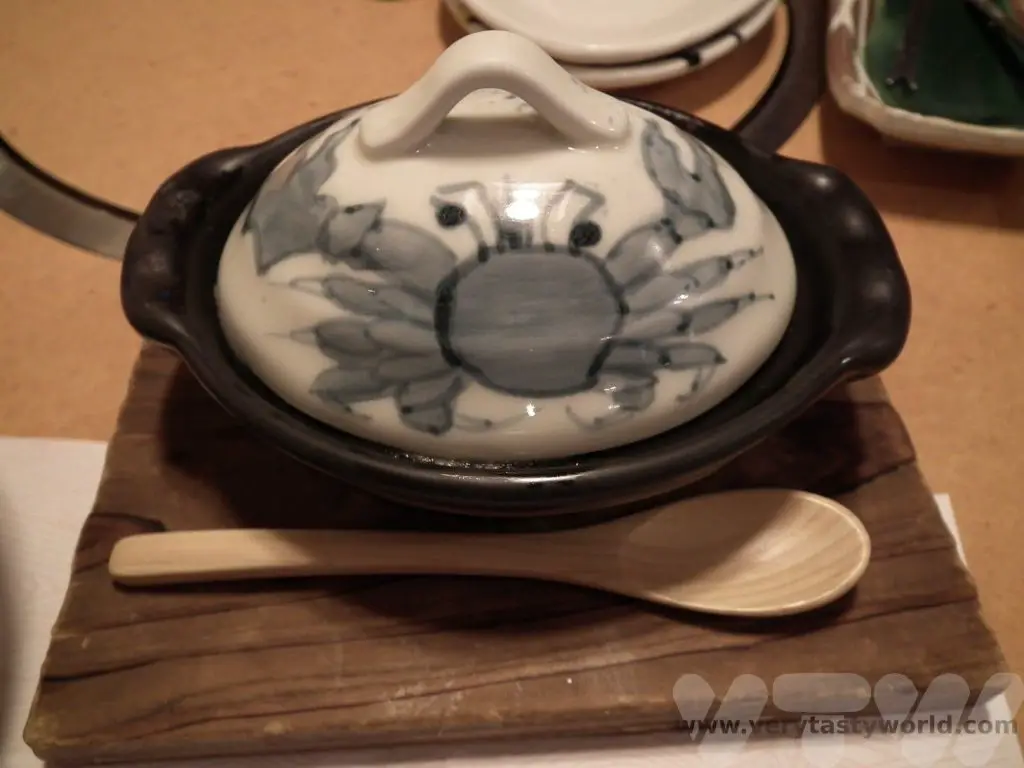
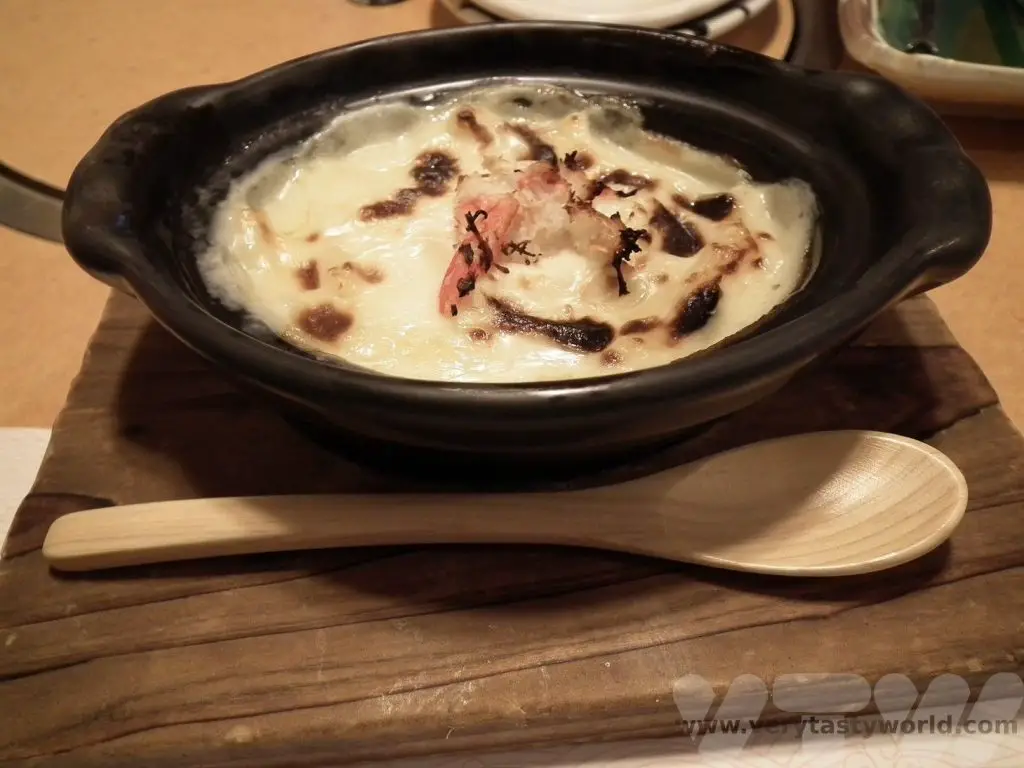
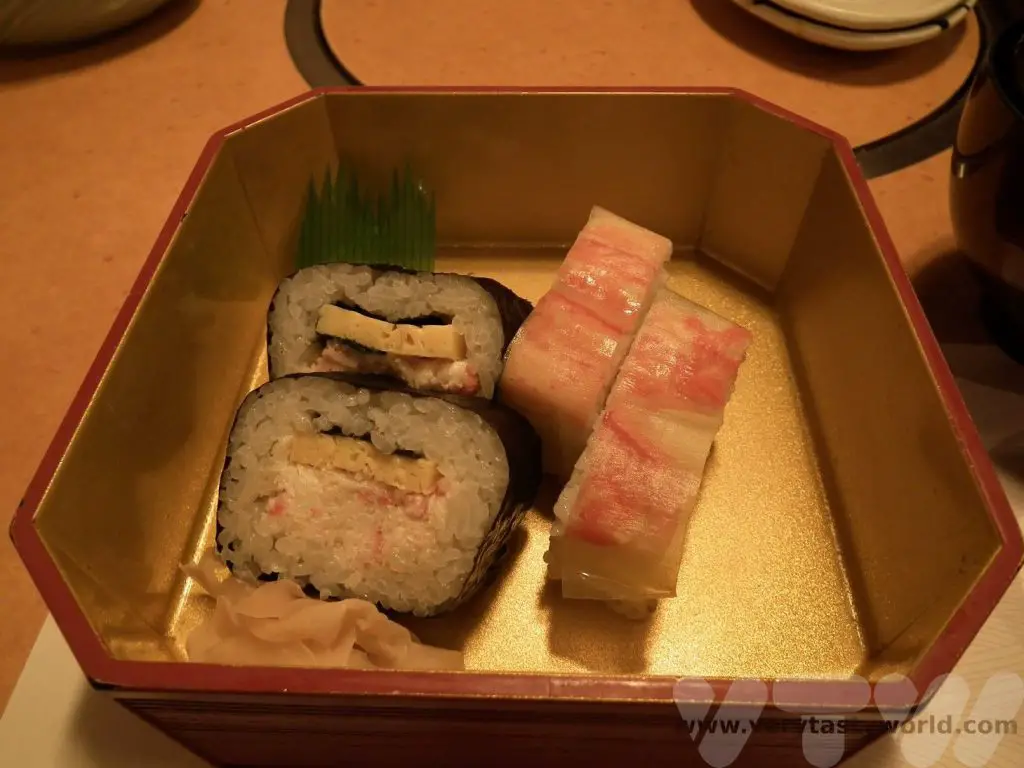
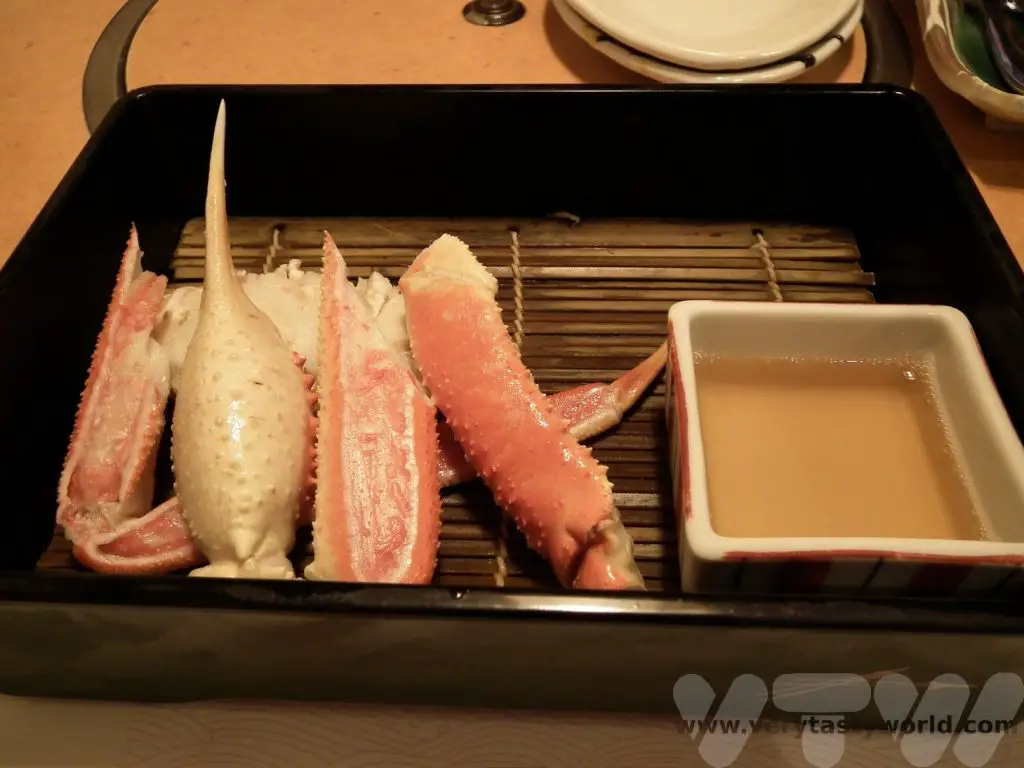
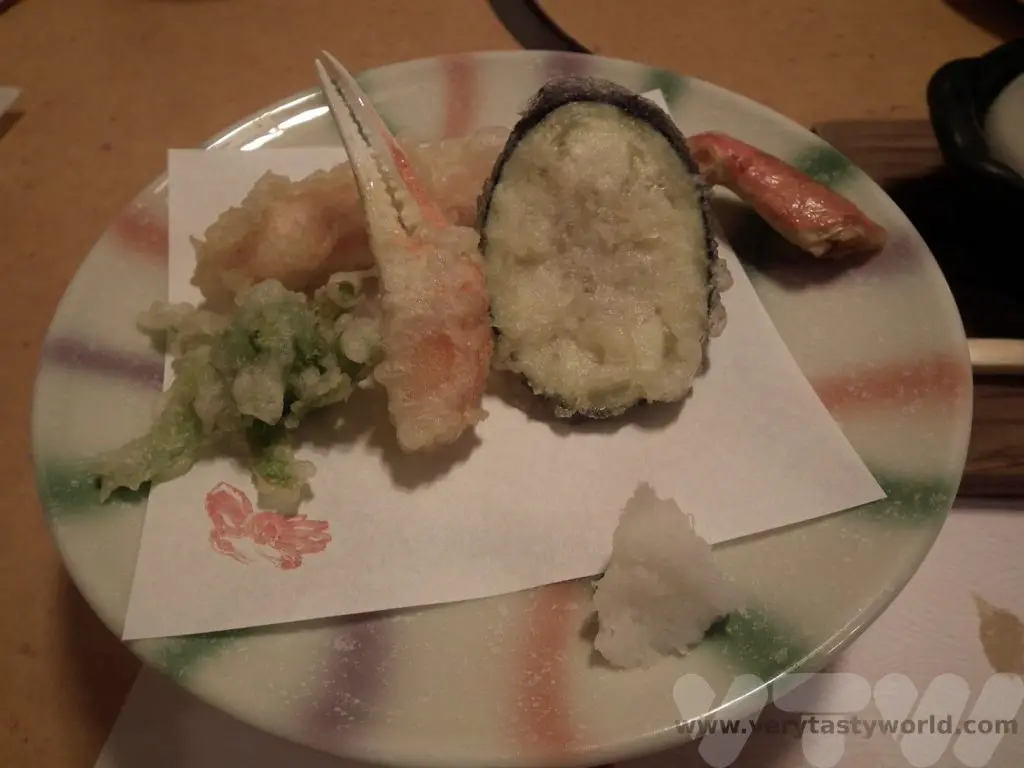
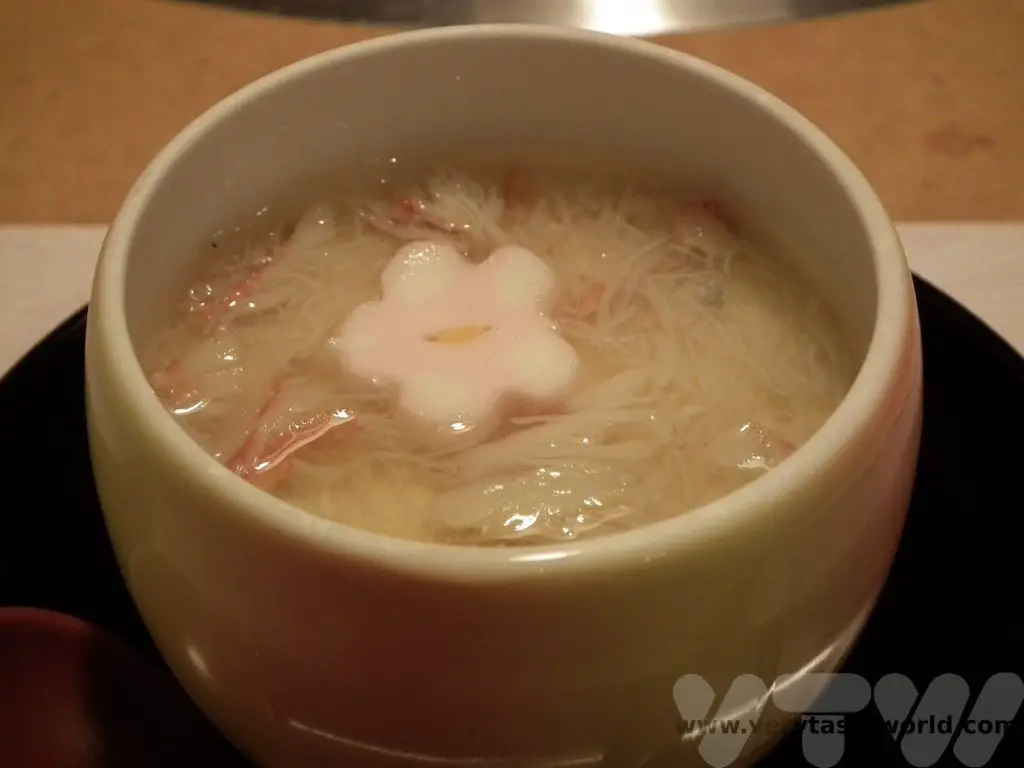
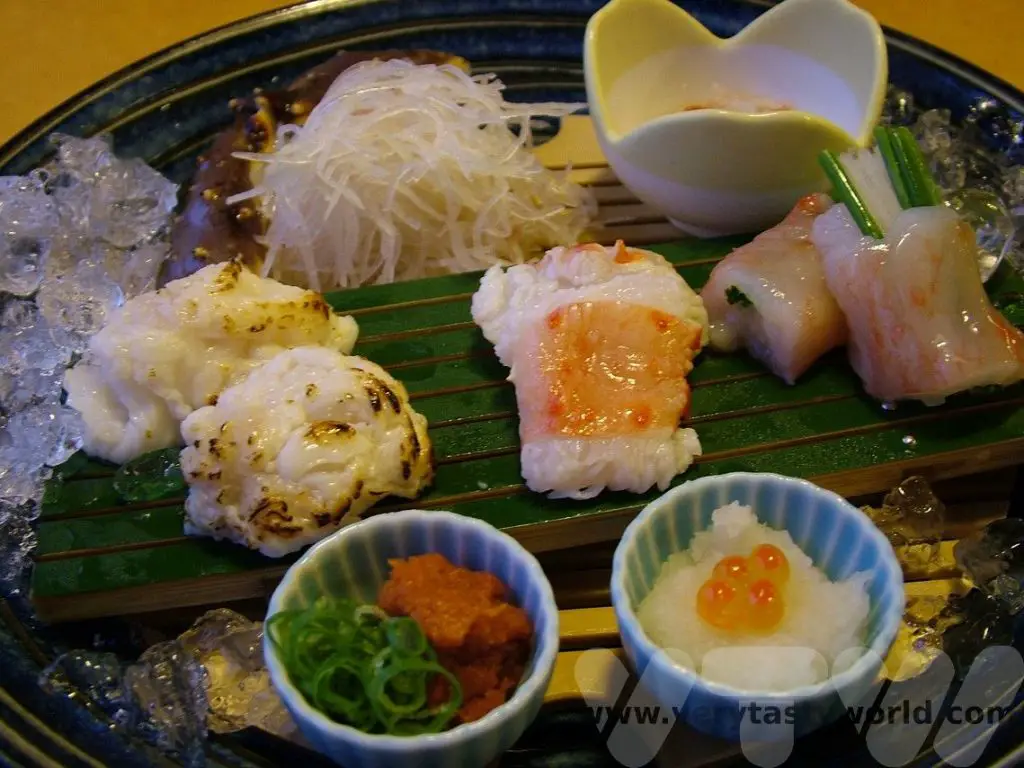
We’ve enjoyed crab sushi and sashimi, crab chawan mushi (steamed egg custard), crab tempura and crab gratin with a clear soup and matcha ice cream for dessert. Utterly delicious.
Other Dotonbori Establishments
There are loads of other restaurants along Dotonbori and the surrounding area. Kuidaore was an enormous eight storey restaurant founded in 1949. It was recognisable by its iconic Kuidaore Taro Clown, a vaguely creepy mechanical drumming puppet at the entrance. Sadly it closed some years ago but the building was populated by different shops and restaurants in what’s now known as the Nakaza Cui-daore Building.
If you like ramen noodles (and who doesn’t?) there are three Kinryu restaurants along the street. Kinryu translates as ‘golden dragon’ and the restaurants can easily be found by their distinctive dragons on the hoardings above the shopfront.
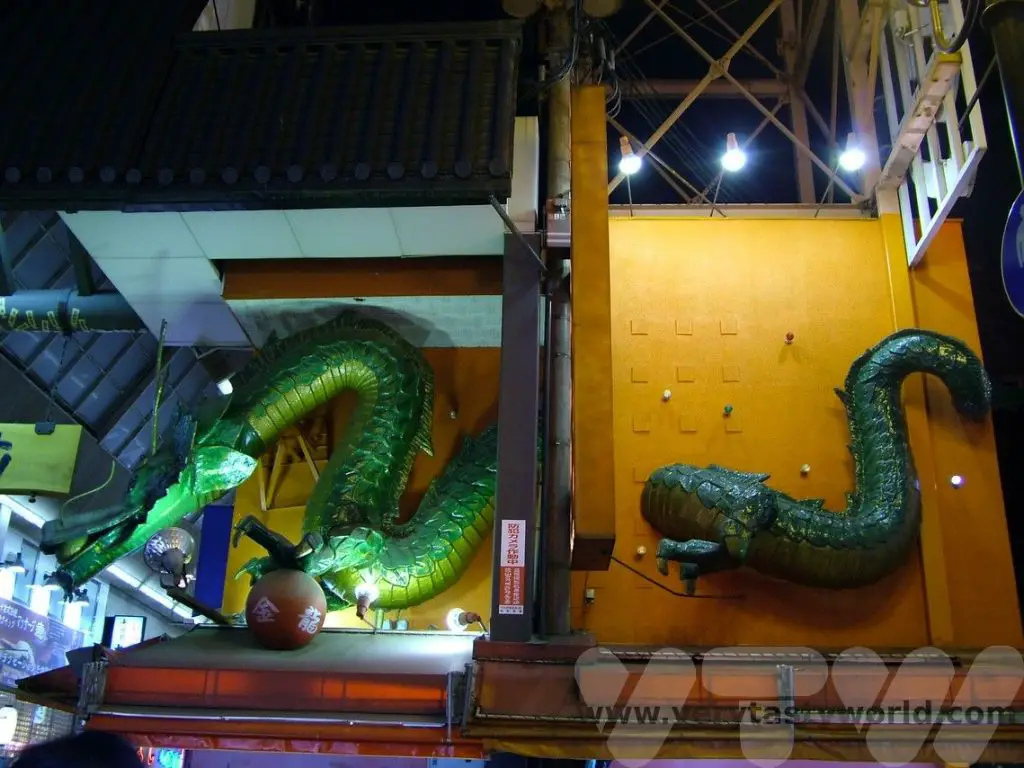
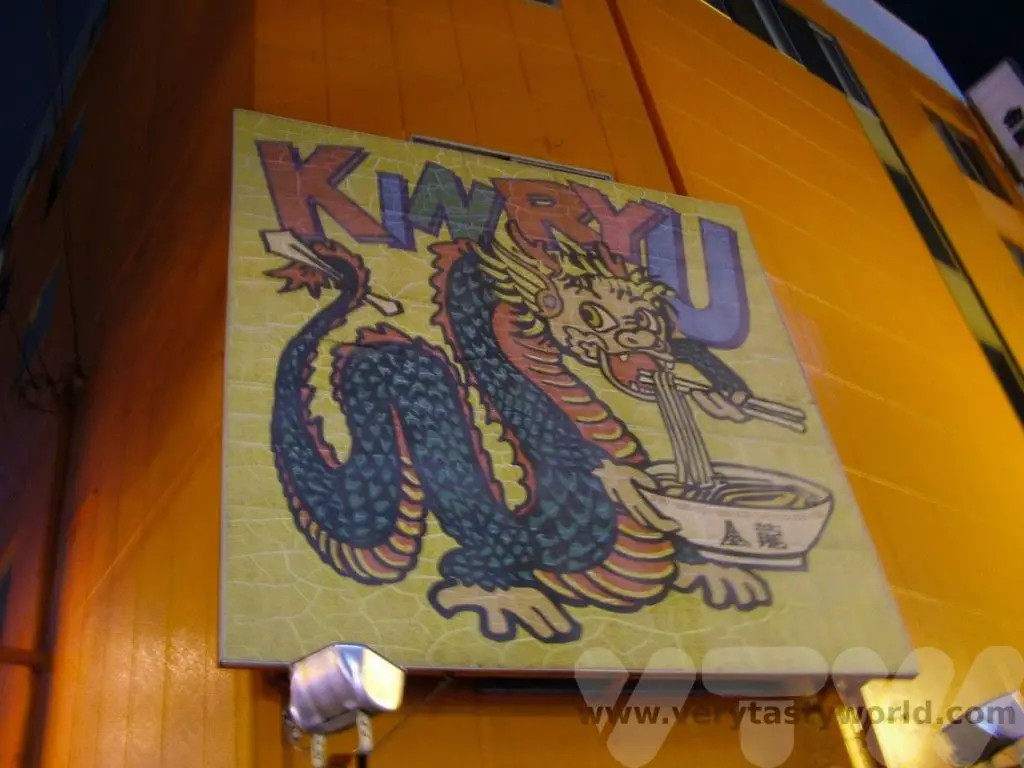
And even the standard restaurants on Dotonbori, those without the amazing neon signs, are worth checking out. One of the great things about dining in Osaka – and indeed throughout Japan – is that you don’t need to speak or read Japanese. Many restaurants will have an English, Chinese or Korean menu and those that don’t will often have a picture menu or, better, realistic models of the food in the window, usually with prices. You can take a photo of your desired dish or even take your food server outside and point to the dish you want.
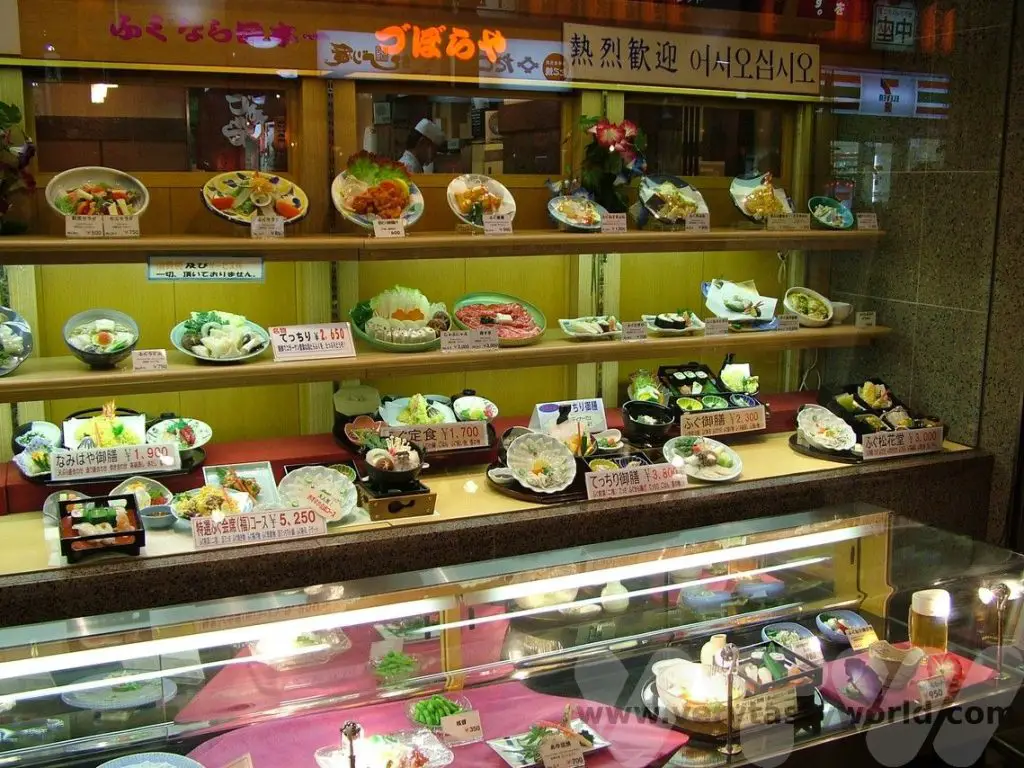
The models of the food are surprisingly realistic and many are made in Osaka. We managed to find a shop that sold them but they are hideously expensive, so we treated ourselves to a couple of sushi fridge magnets as a souvenir.
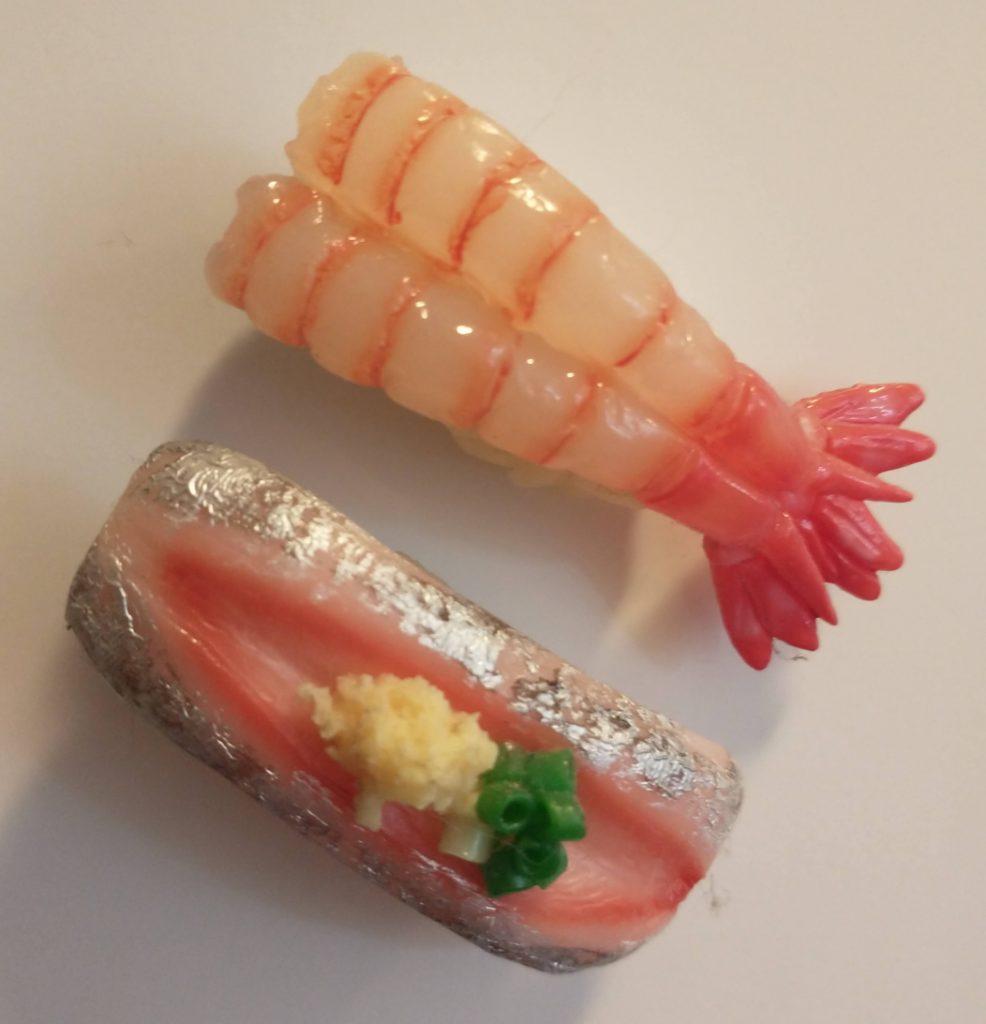
Related Posts You May Enjoy

- Kobe Beef in Kobe – Is It Worth It?

- World’s Best Breakfasts -Breakfast of Champions!

- Recipe: Simmered Shiitake Mushrooms

- How to Use Public Transport in Japan

- RECIPE Oyakodon Donburi

- Planning a Trip to Japan

- The Makanai: Cooking for the Maiko House

- Setsubun Food – Bean Throwing Day

- The Gassho Farmhouses of Rural Japan

RECIPE – Kabocha Korroke – Pumpkin Croquettes
Kabocha is a type of squash, often called a Japanese pumpkin. It is small-medium in size (around 25-30cm diameter). Its flesh is bright orange which contrasts beautifully with its dark green skin. They are also pretty easy to grow. And it is a truth universally acknowledged that home-grown vegetables are always more delicious than shop bought ones.

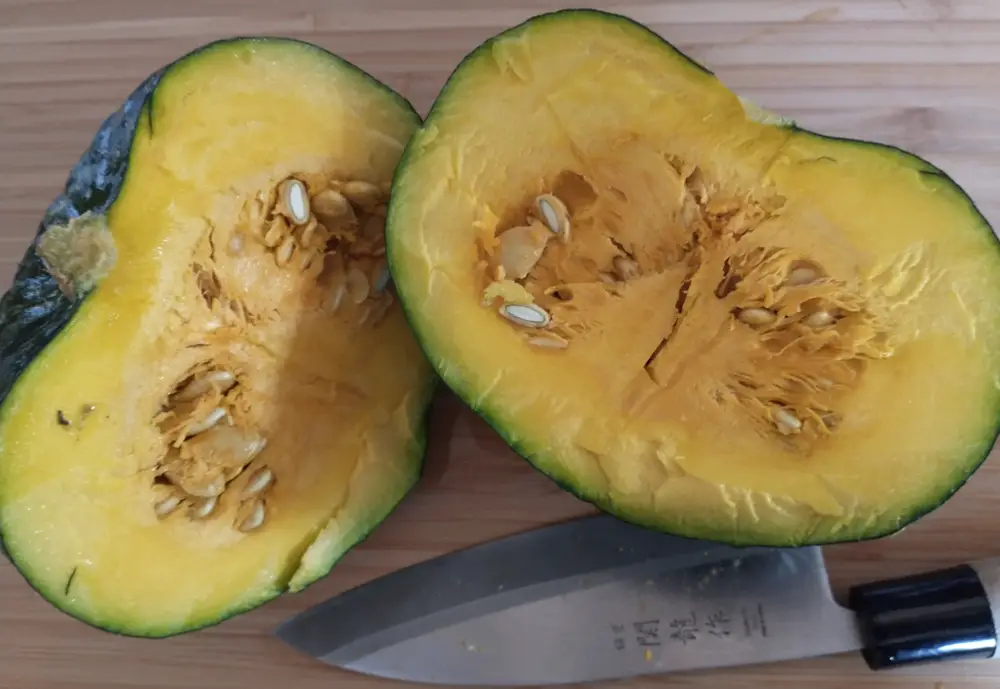
This year we grew three of the beauties in our little garden and the very first thing we wanted to make once harvested, was ‘korroke’, a Japanese version of croquettes (the word is spelled in katakana, the phonetic alphabet used for words of international origin). It’s the sort of dish that you would find in a Japanese izakaya (a bar that sells alcohol and tasty snacks/small dishes). They are simple to make and utterly scrumptious. Here’s our recipe for Kabocha Korroke – Pumpkin Croquettes:
Ingredients For Pumpkin Croquettes
1 kabocha pumpkin. If you can’t get a kabocha, other squash can be used. Pumpkin might be a bit too squishy but something like a butternut squash would work well.
1 egg (vegans can use corn starch mixed with warm water in an approximate ratio of 1:3)
50g (approx) Plain flour
50g (approx) Panko breadcrumbs
Pinch of salt
Oil for frying/spray oil for baking
Tonkatsu sauce to eat with (Brown sauce will work well if you can’t get tonkatsu)
Method
Cut the pumpkin in half and then into slices. Remove the seeds (we kept loads of seeds and dried them so that we can sow them next year).
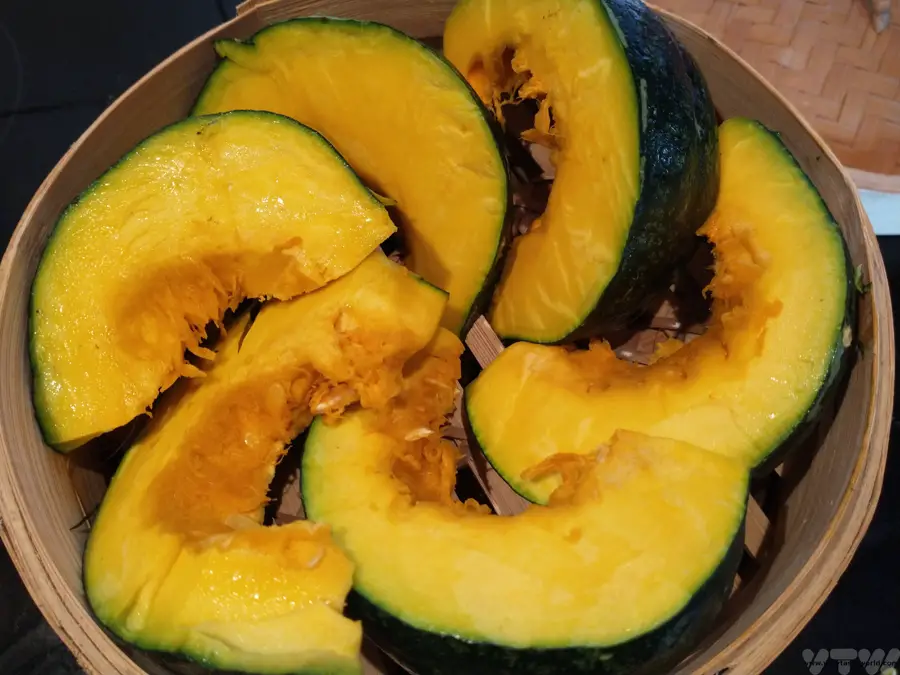
Arrange the slices into a steaming bowl. We tend to use the Asian style bamboo baskets as they stack very nicely and can just sit on top of a saucepan of boiling/simmering water.
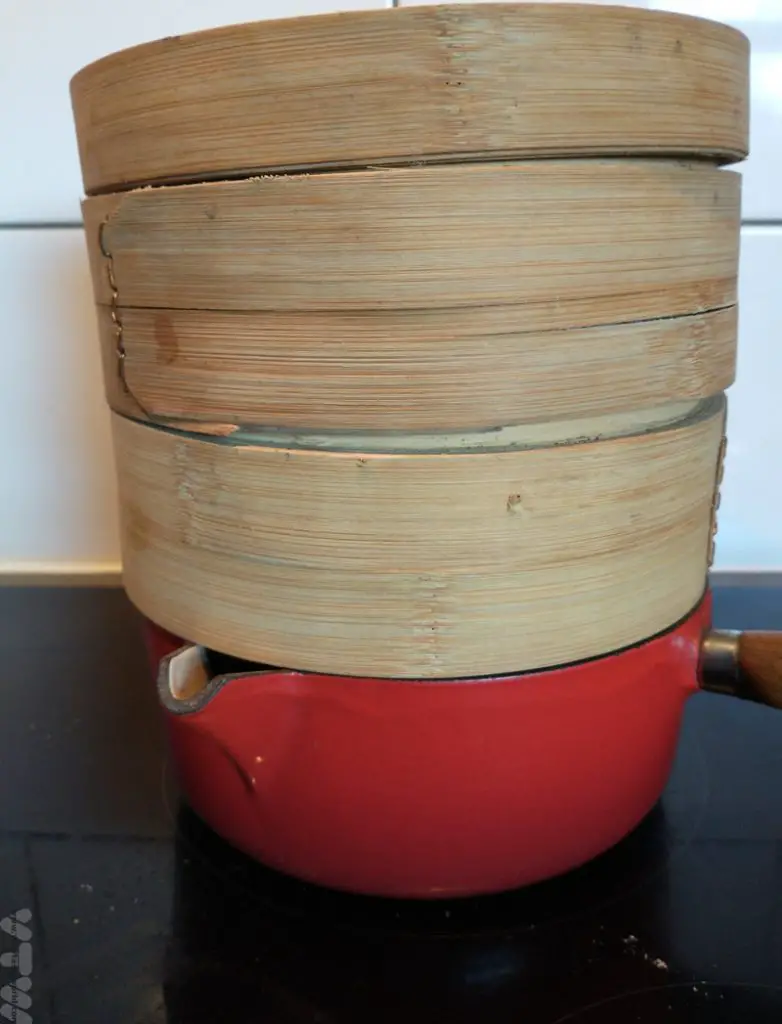
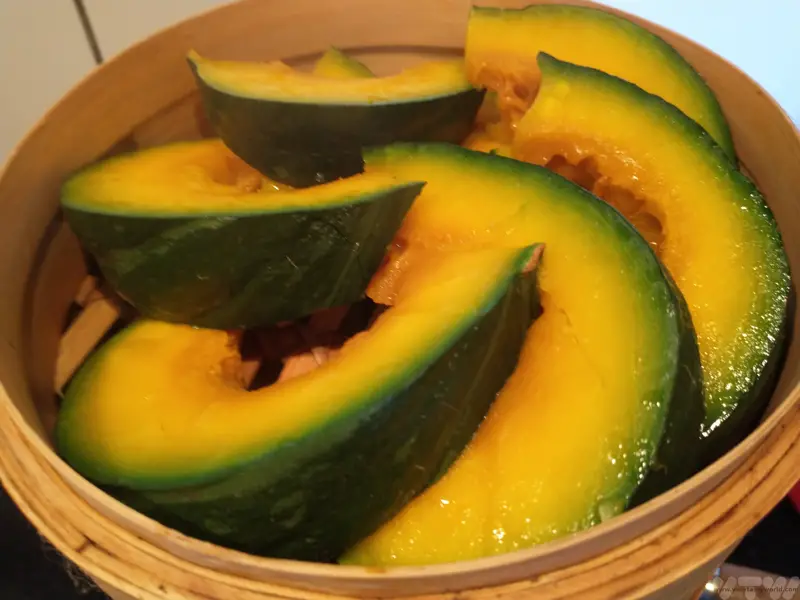
Steam for around 15 minutes or until the pumpkin is soft – a knife should easily sink into the flesh. (If you don’t have a steamer you can bake the pumpkin slices in the oven for around 40 minutes.)
Although the skin of the kabocha is edible, for the purposes of the korroke it is best to remove it. (You can treat yourself to pumpkin skin snacks – once they have cooled down a bit – while you continue the preparation.)
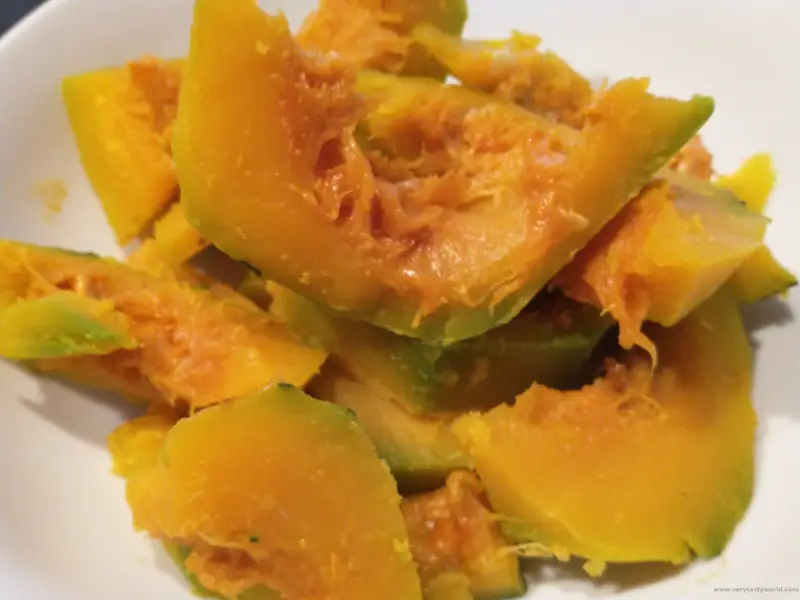
Add a pinch of salt and mash the pumpkin using a potato masher. It is possible to add other flavourings at this stage if you wish. Some recipes add sautéed onions, others lashings of butter, yet others include shichimi (Japanese seven spice mix). We just seasoned with the salt, which brings out the natural flavour of the kabocha, in this instance.
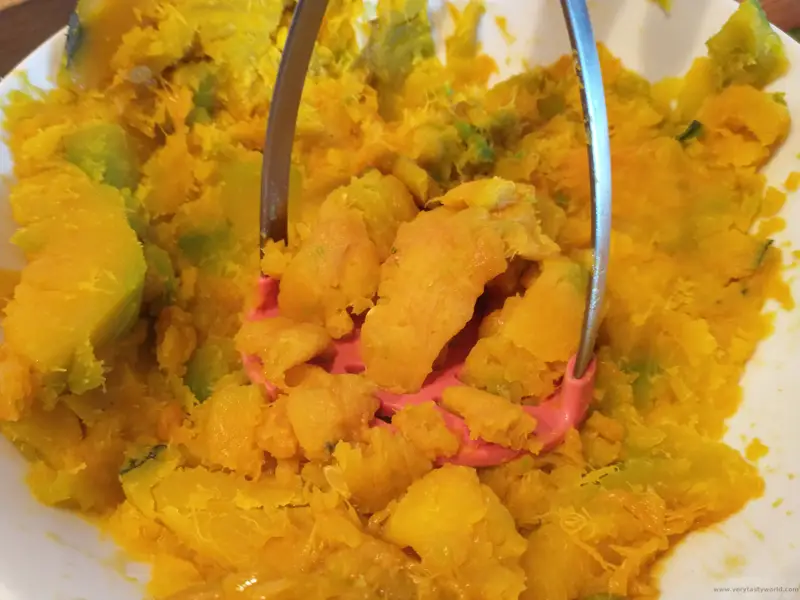
Form into patties.
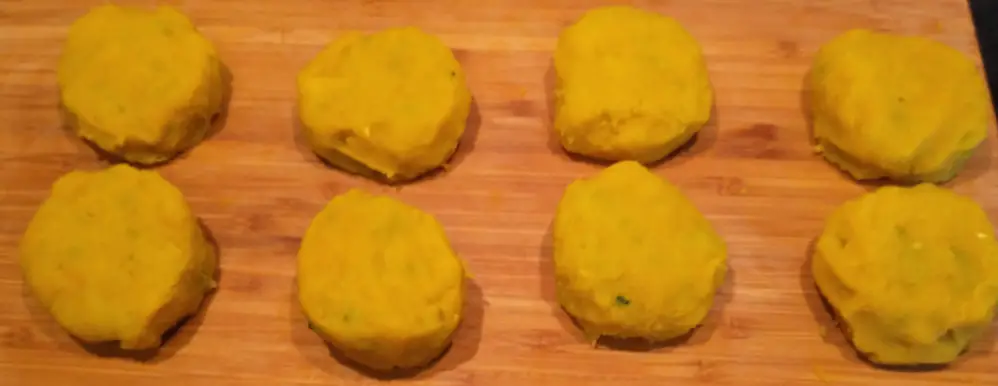
Panko are Japanese breadcrumbs. They are crispy and super dry, usually made from white bread. You can buy panko in most supermarkets these days but ordinary breadcrumbs will be fine if you can’t find them. Set out three bowls. One for flour, one for an egg, lightly beaten, and one for the panko.

Dip each patty in the flour, then the egg, then the panko. This process can get a little messy (especially if you are a clumsy cook). Do not attempt to take photos using your phone if you have sticky fingers.
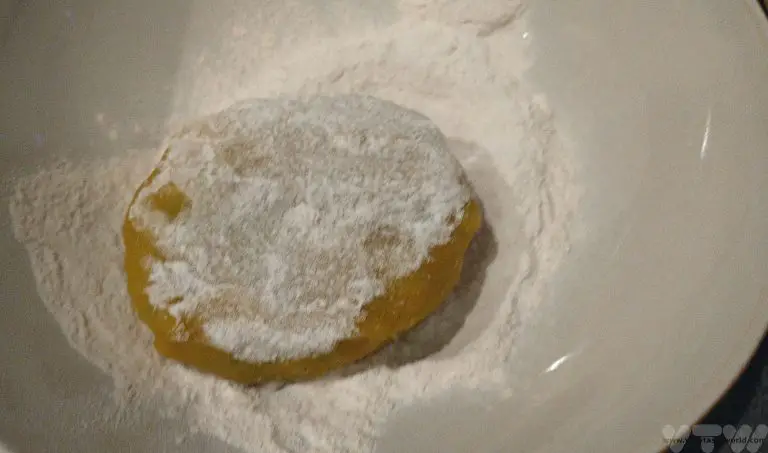
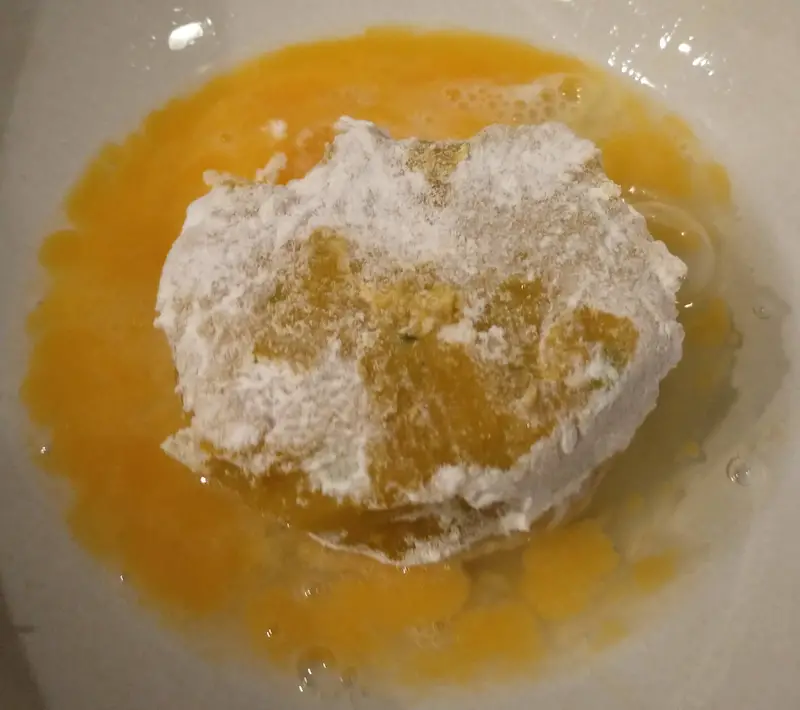
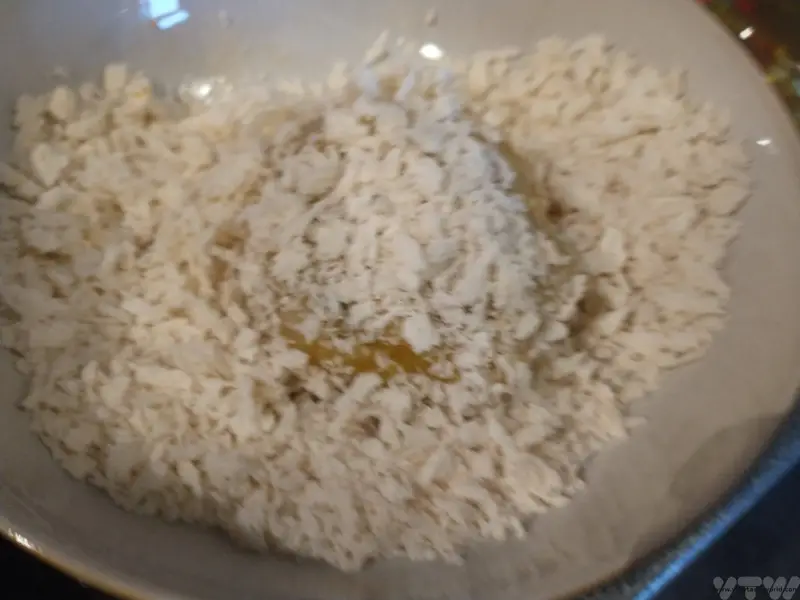
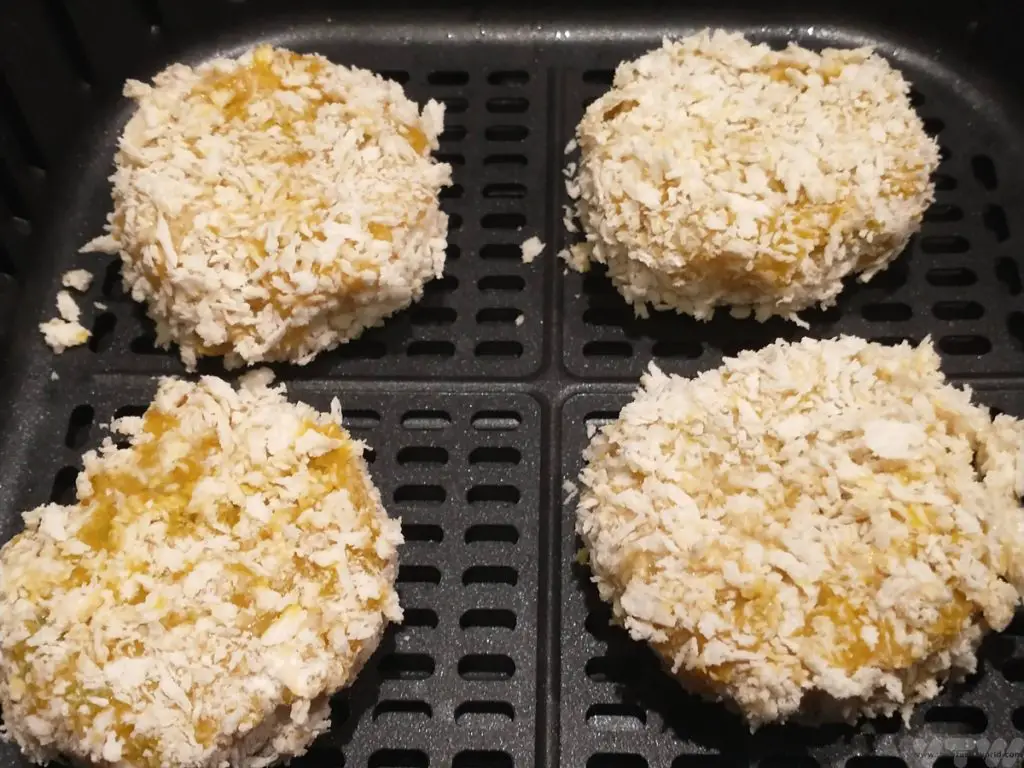
There are several options for cooking. Bear in mind that the pumpkin is already cooked so the korroke don’t need long. We’ve recently invested in an air fryer so thought we would use that. Just spray the patties with oil and cook at 190C for 4 minutes on each side. You can also bake them in the oven for about 8 minutes. Or you can fry them the old-fashioned way in vegetable oil for a couple of minutes on each side or until the panko are golden.
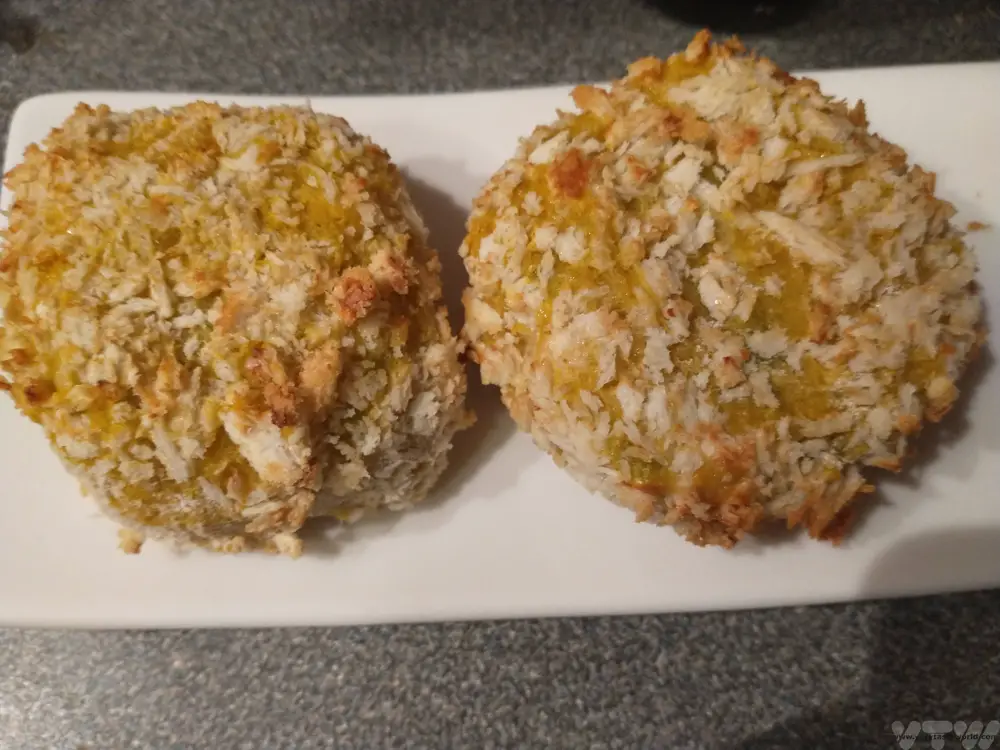
Then it’s time to scoff! Korroke are often served with tonkatsu sauce. This is a sweet and tangy sauce that perfectly complements the pumpkin. If you can’t find tonkatsu, brown sauce (the type you eat with a cooked breakfast) is a good substitution. Other accompaniments can include mayo or a soy based dipping sauce. Best served with a nice, cold beer. Or two.
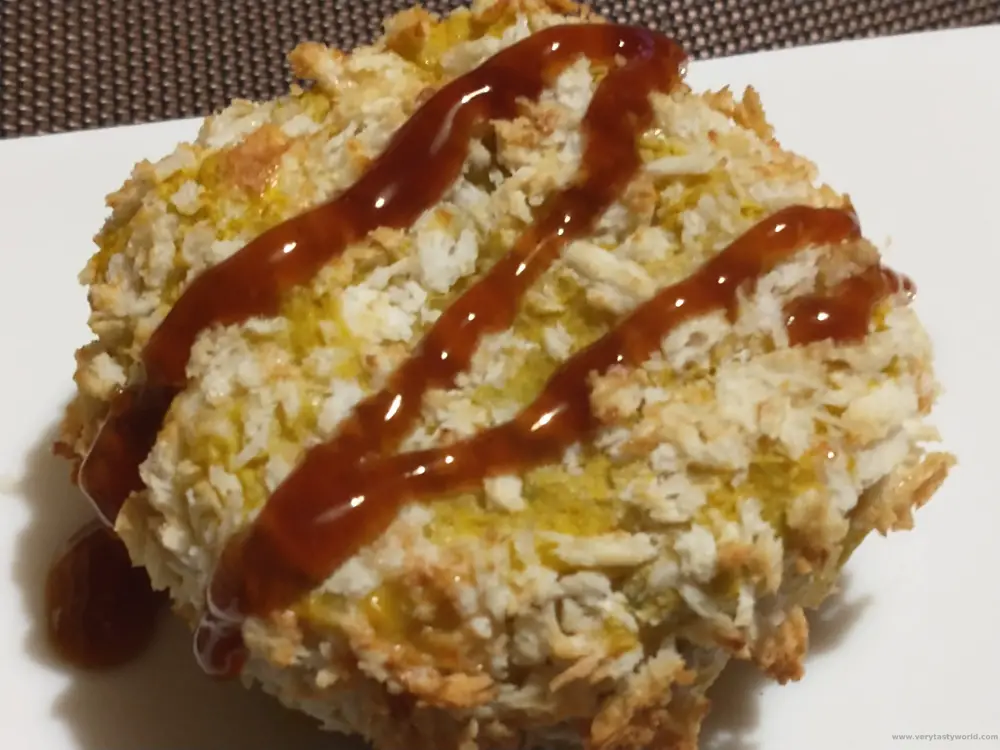

- RECIPE: How To Make Elderflower Champagne
- RECIPE Oyakodon Donburi
- Zero Waste Recipes Before Your Holiday
- RECIPE: Vegetable Biryani Tamil Nadu Style
- RECIPE: Vegan Wild Garlic Pesto
- Recipe: Venetian Pasta Sauce
- RECIPE: Biryani Raita Recipe
- RECIPE: How to Make Costa Rica’s Gallo Pinto
- Recipe: Japanese Simmered Pork Belly – Buta no Kakuni
Noodle Nirvana at the Yokohama Ramen (Raumen) Museum
Here at Very Tasty World we have a passion for pasta and, as our regular ramen reviews emphasise, there is a joy in the variety of internationally available variants of noodle niceness that you can enjoy at home with just a kettle, a bowl and a pair of chopsticks. Of course, ramen restaurants are also available, if you are lucky enough to be able to reach one, so you don’t even have to trouble yourself to turn on the kettle.
But what if you want more?: To learn more and to taste more? What if you want to understand the history of ramen, instant or traditional, and to try various examples with different flavours from around the country for which ramen is best known? There is only one place to go, a foodie theme park where you can learn the history and, importantly, taste many different types of ramen in all their broth infused glory. The Shinyokohama Raumen Museum (The English site is here – please be clear of the spelling with the additional ‘u’, which is correct in Japanese, otherwise you might have search engine issues) is that place, a multi-storey building dedicated to everything that is ramen. We naturally felt obliged to travel there and research our culinary favourites. We were not alone in this desire to get to know ramen because Brittany Murphy’s character Abby does exactly the same thing when she visits in the film The Ramen Girl.
Yokohama Ramen Museum
The Yokohama Ramen Museum is – unsurprisingly – located in Yokohama, the second largest city in Japan, which is easily accessible from Tokyo. If you have a Japan Rail Pass you can use the shinkansen (bullet train) to arrive at Shin Yokohama, which is the closest station, but there are plenty of other train services available too.
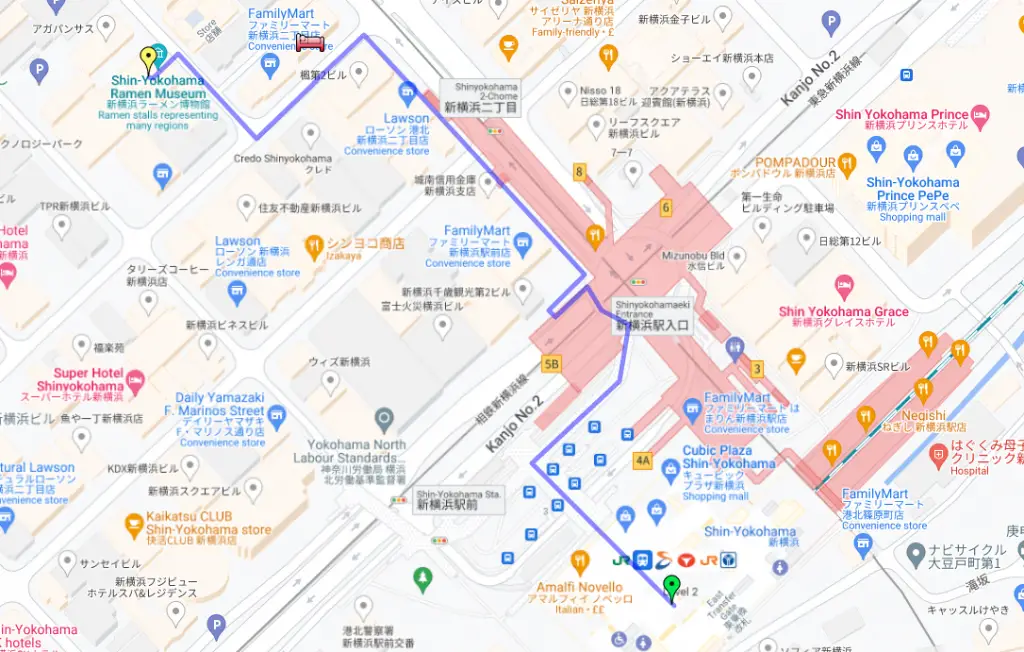
History of Ramen
The ground floor is the museum’s main area of knowledge, displaying a range of information about the history of ramen from traditional to instant. The displays include chronological timelines and also show the progression of instant noodle technology. So you can observe the pots, the packets and even a noodle unravelling.
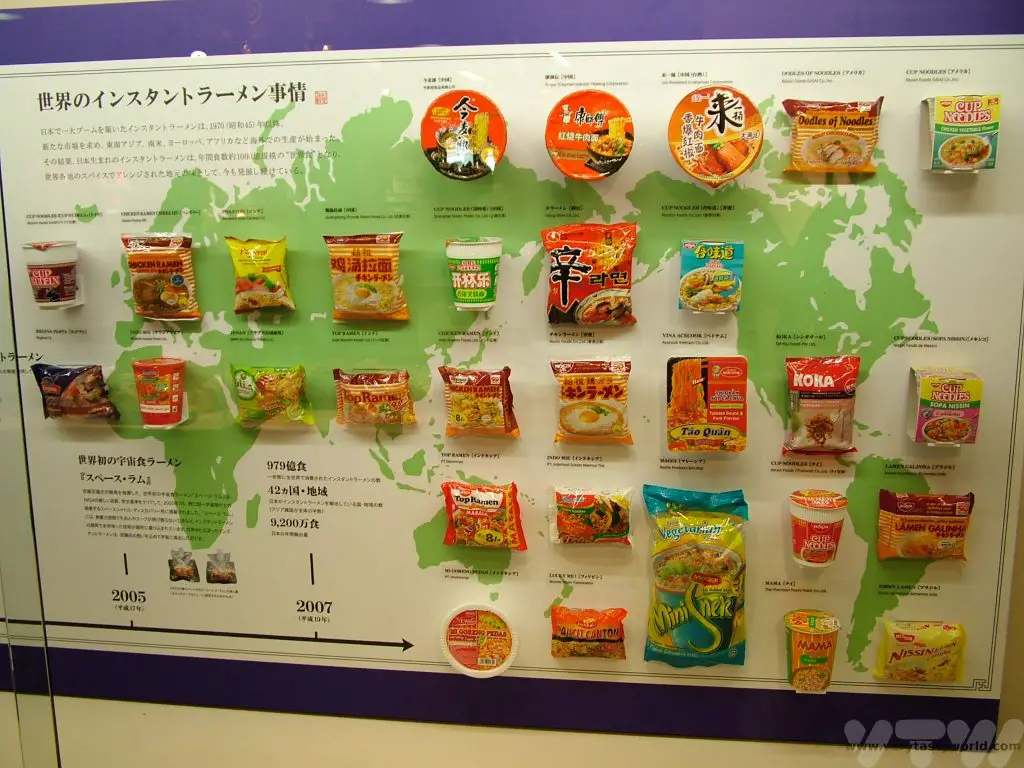
But the proof of the pasta is in the eating. So you need to head downstairs in order to fulfil your craving. Pro tip – if you are planning to visit, make sure you do so on an empty stomach – don’t have too much for breakfast in the morning..
Sunset Shopping Street
The eating area, Sunset Shopping Street, is a recreation of a town in 1958, the year that instant ramen was invented. The whole environment has a sundowner setting with cloudy dark blue sky and street lighting which all adds to the ambience.
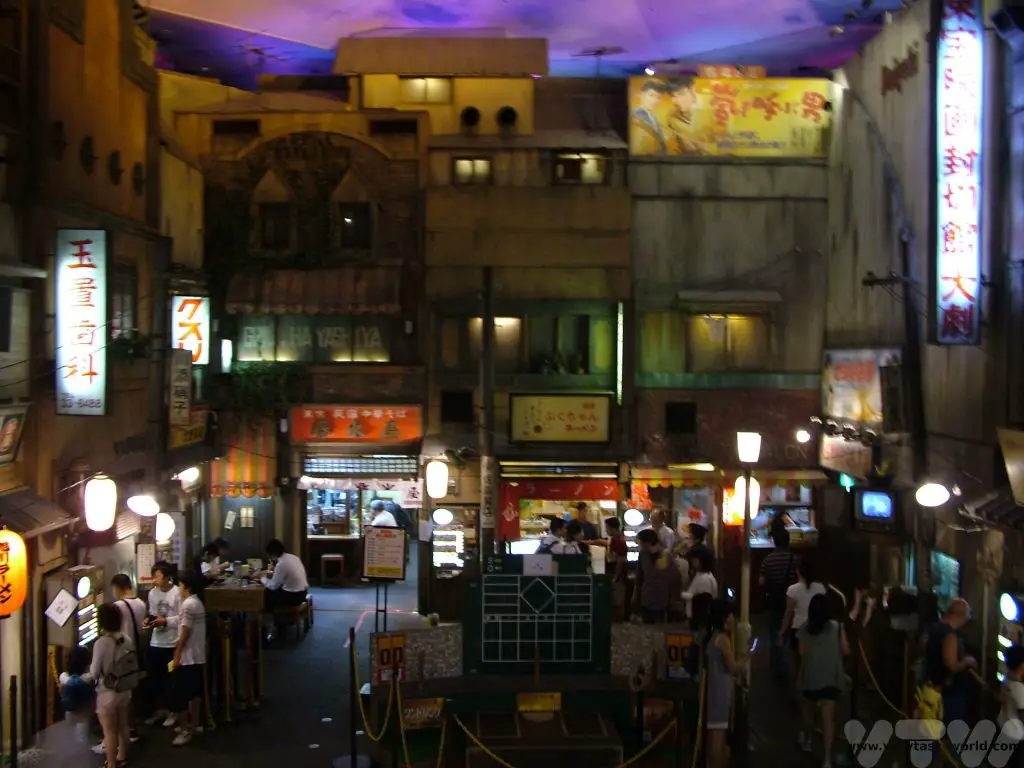
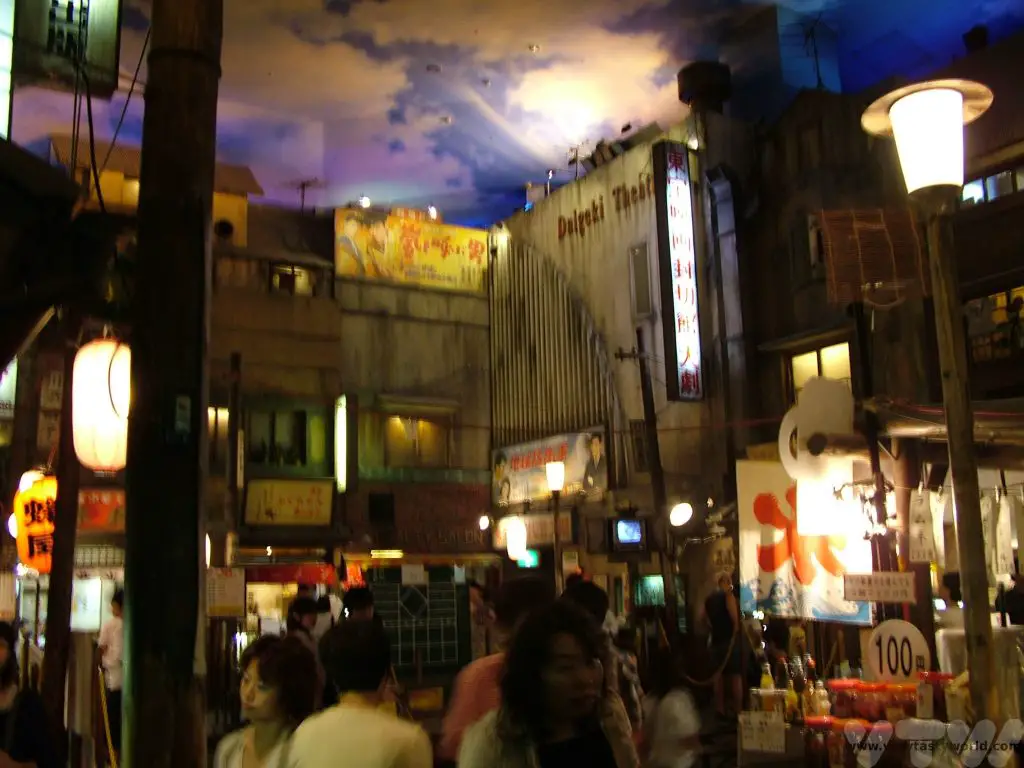
There are a number of restaurants where you can sample regional ramen, from miso ramen to salty soy sauce and rich, creamy tonkotsu where the broth is made by boiling pork bones for hours. The only problem is deciding which shop (or shops) to choose from, even though you know its ramen you want, the choices are far more complex than the expected ‘what flavour broth or meat/fish/vegetable combo,’ but the bigger ‘what region?’ question because each venue represents a different region of Japan’s quintessential local concoctions. Regional variations are prevalent in lots of Japanese foods such as udon (thick noodles) and okonomiyaki, so each ramen shop offering different options and all declaring their own as the very best, presents something of a conundrum to the casual noodle-slurper. We did see a number of visitors share a bowl of ramen before moving onto the next shop in order to taste as many different variations as possible. However, since our visit, the museum is clear that all adult visitors to each shop should purchase a bowl of ramen. This seems absolutely reasonable as it’s not fair to the restaurant owner to have table space taken up with multiple visitors sitting around a single bowl of noodles. Still, it’s a very pleasant choice to have to make. And these days you can order different sized portions, so if your appetite is big enough you may be able to sample many different types of smaller bowls. The street also has a traditional sweet shop, just in case you are still hungry!
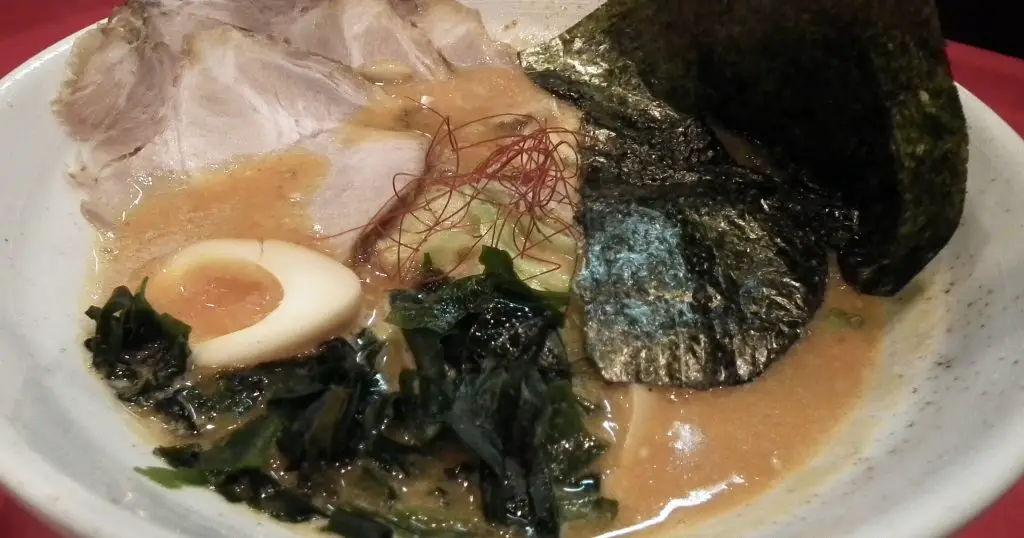
Oh, and there’s even a classic kaiju (monster) poster on one of the fake hoardings – what more could you want?
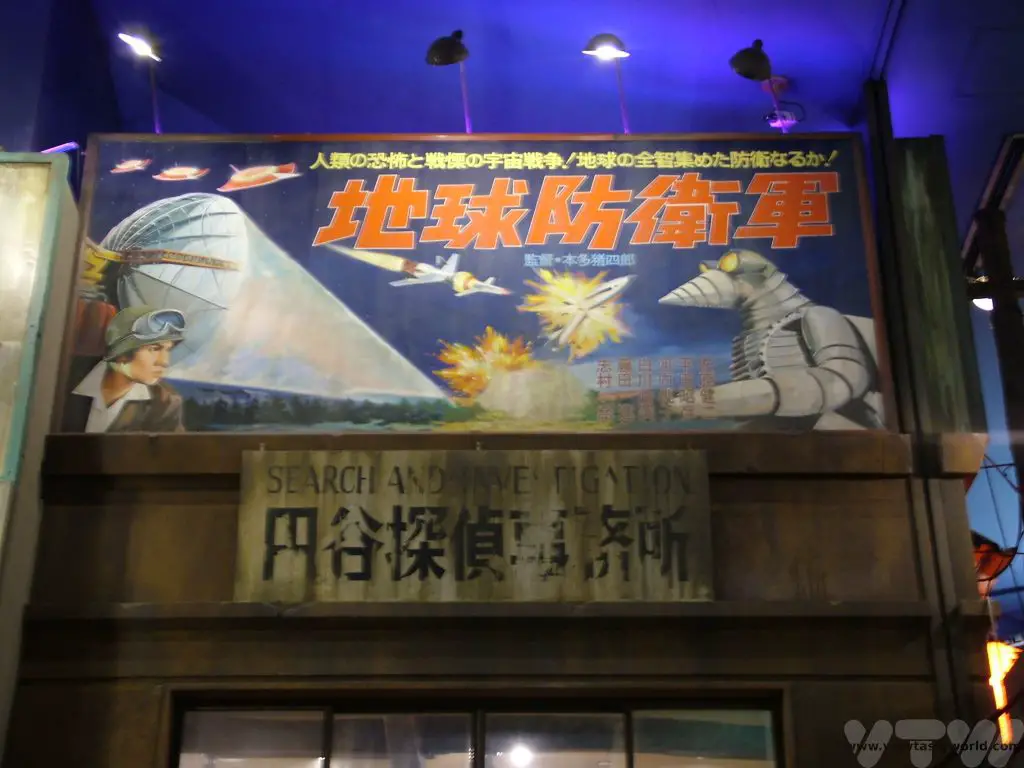
This really is an essential tourist trip for ravenous lovers of ramen. Great fun for foodies in terms of understanding history of the world’s most popular instant food and also getting to eat yummy ramen.

Sweet Treats in Candy Alley, Kawagoe, Japan
There are loads of cool and interesting districts to visit that are just a (relatively) short train journey from central Tokyo. Kawagoe is one such place for a day trip. It is just half an hour to one hour’s train ride away, depending on where in Tokyo you are staying, in Saitama prefecture. You can get there directly from Shinjuku on the Seibu line. It’s known as Little Edo because of its old warehouses and merchant homes, called Kurazukuri.
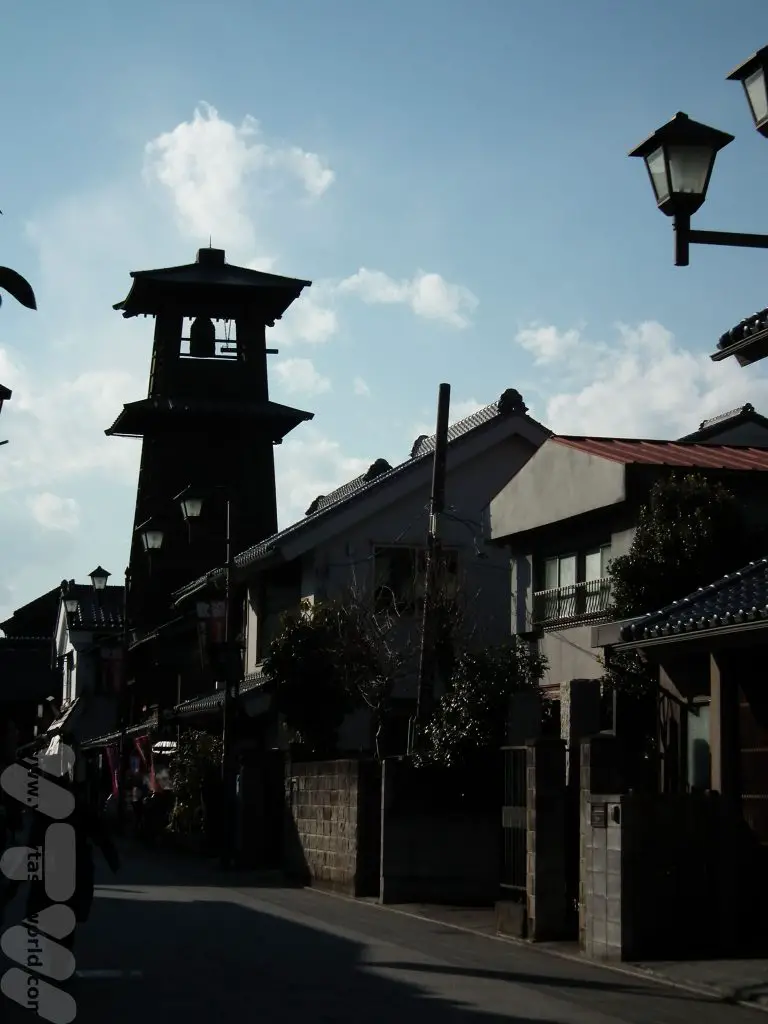
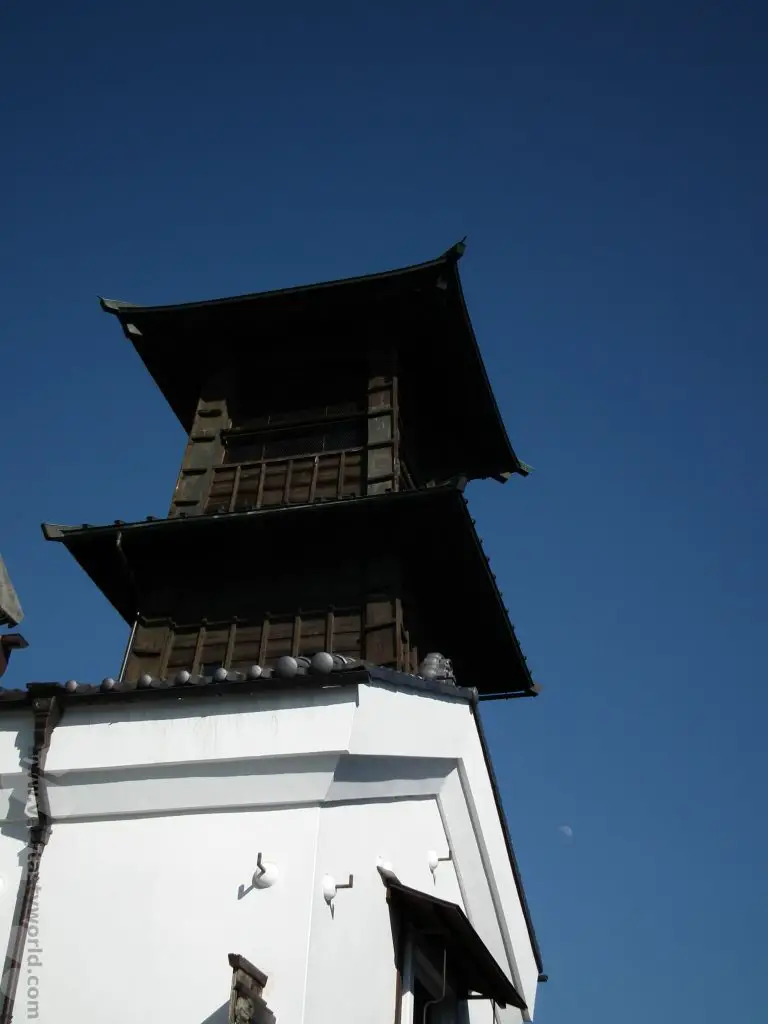
It has a charming old world feel, albeit with lots of shops for tourists, and there are loads of foodie attractions and restaurants to look out for; charcoal boiled eel in a sweet soy sauce is a speciality here, as are sweet potato dishes.
One of the attractions in Kawagoe is Kashiya Yokocho – Candy Alley – a street chock full of traditional Japanese shops offering sweet temptations.
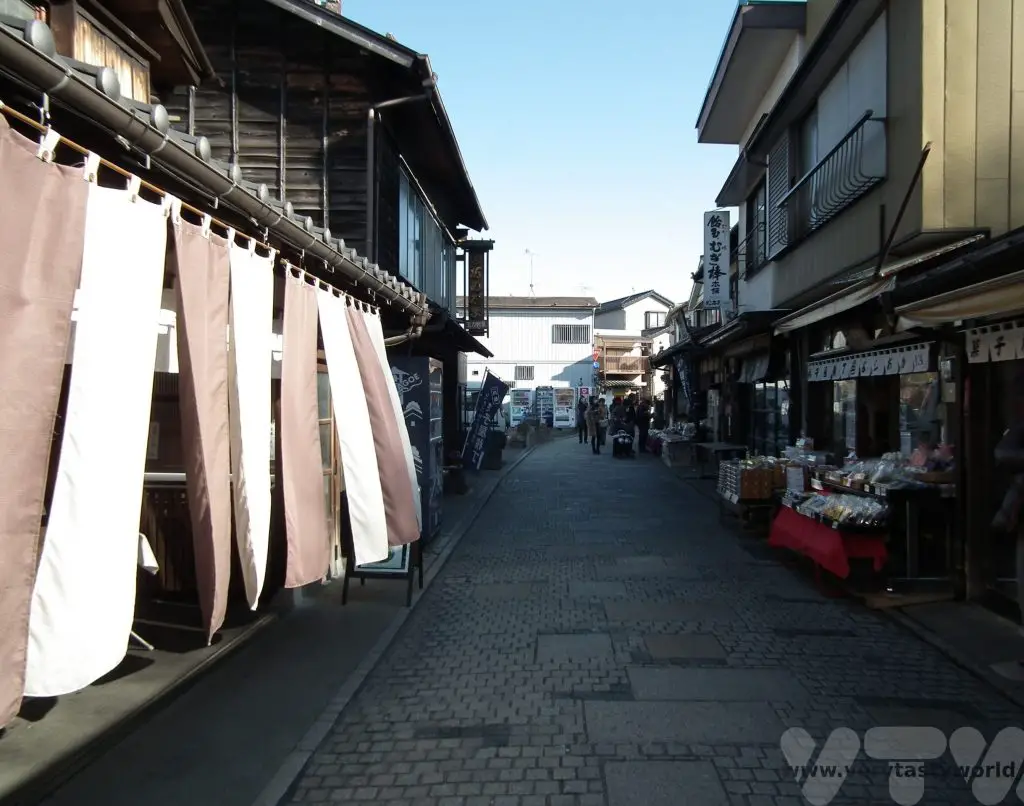
This emporium had a giant penguin minding the store.
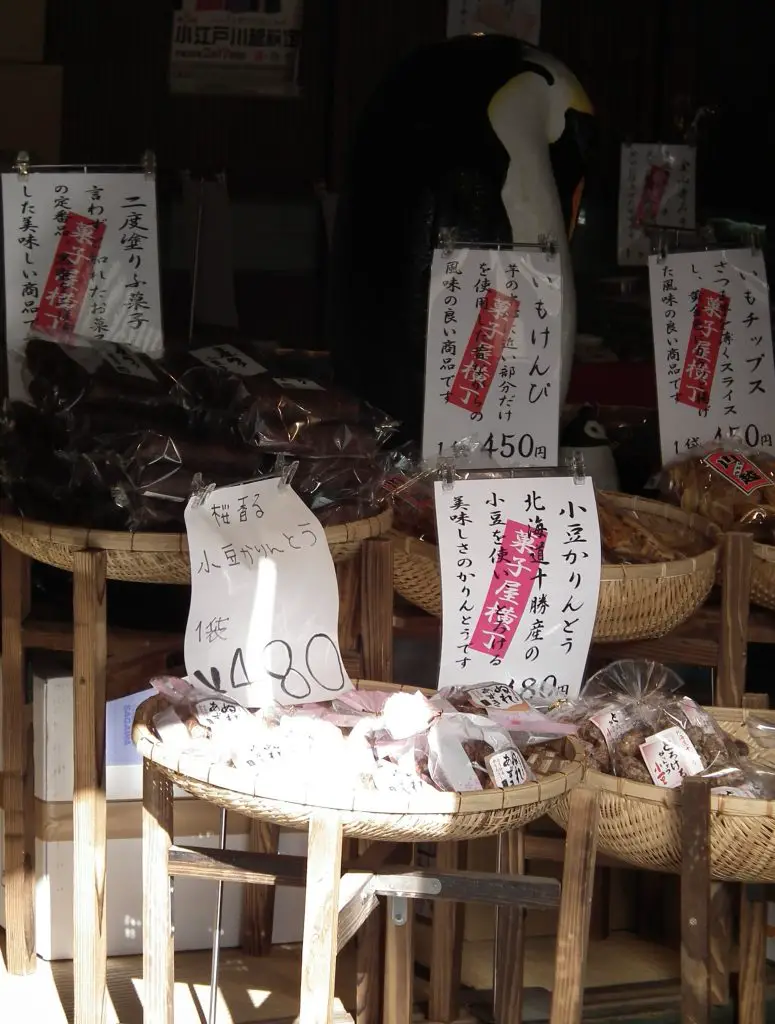
The Kawagoe tourism website has a brief history of the alley:
It is said that the beginning of this Kashiya Yokocho was in the early Meiji Period when Suzuki Tozaemon started to make candy in this prospering town in front of Yojuin Temple. In 1923, after Tokyo was damaged in the Great Kanto Earthquake, this area became the main producer and supplier of candy. There were more than 70 shops in the early Showa Period but due to the war and changes in lifestyle the number has decreased.
If you don’t have a sweet tooth, no problem. There are plenty of savoury snacks on offer as well. Takosen is takoyaki (deep fried octopus balls) sandwiched between prawn crackers.
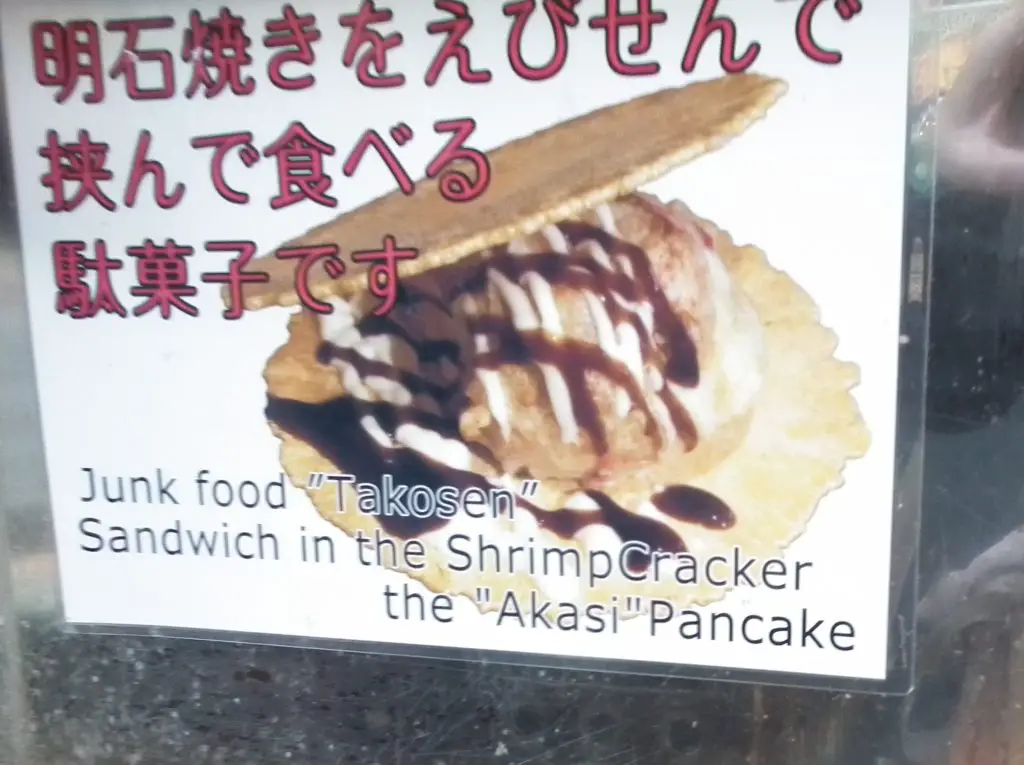
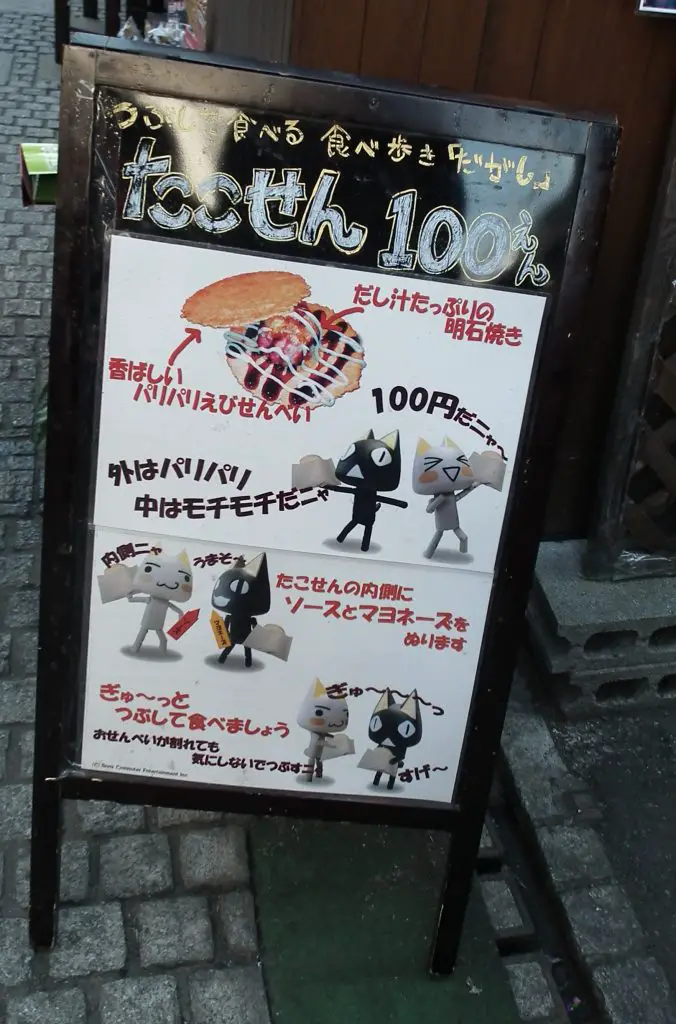
The name combines tako (octopus) with senbei (cracker) and advertises itself as junk food. It is seriously good.
Sweet potatoes are particularly popular, in fact Kawagoe is known colloquially as the city of sweet potatoes. Once considered a staple after the war, when food was scarce, the city still makes multiple products from these tasty tubers.

And if you’re given a photo opportunity to pose as a sweet potato you have to take it, don’t you?
Imo senbei snacks are thinly sliced, dried sweet potato crackers sprinkled sparsely and randomly with black sesame seeds.
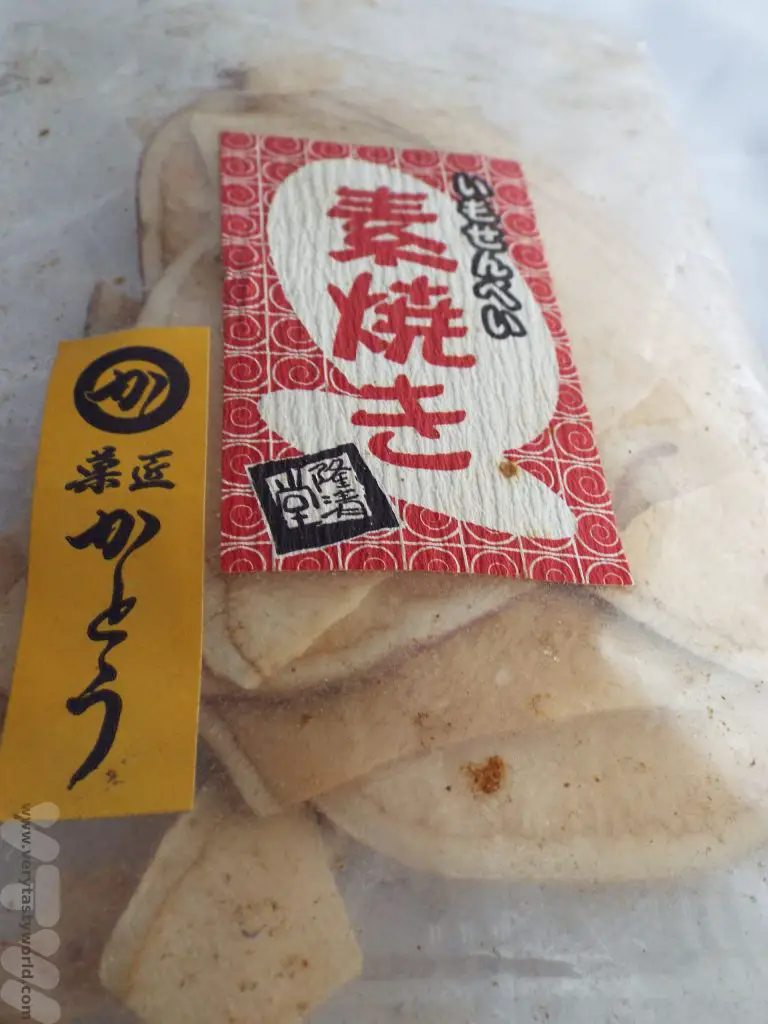
The curious thing about these is that you would expect them to be either sweet or slightly salty and they are neither. They are not bland, but rely on the natural sweetness of the sweet potato and have just a hint of sesame for additional flavour. They have a lovely crunchy texture and are great to eat as an accompaniment to a cool beer.
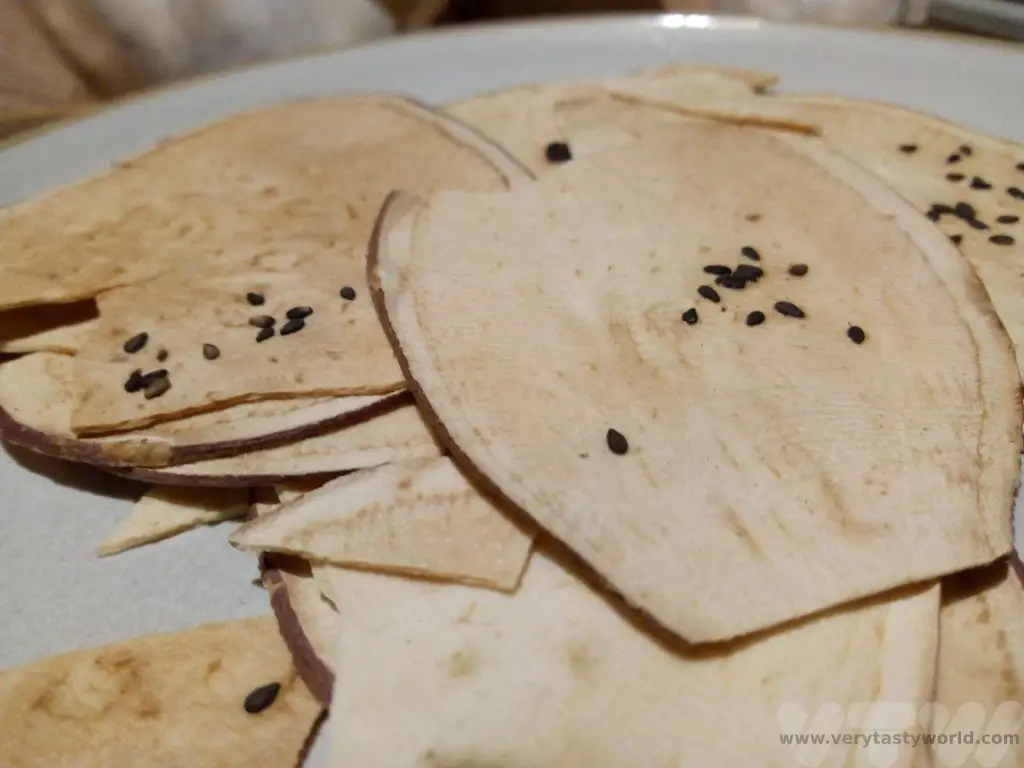
They are also very thin and lightweight – so they are ideal for slipping into your suitcase as an omiyage (a souvenir/gift) for your friends. Or you could just keep them and scoff them yourself when you get home!

- Kobe Beef in Kobe – Is It Worth It?

- World’s Best Breakfasts -Breakfast of Champions!

- Recipe: Simmered Shiitake Mushrooms

- How to Use Public Transport in Japan

- RECIPE Oyakodon Donburi

- Planning a Trip to Japan

- The Makanai: Cooking for the Maiko House

- Setsubun Food – Bean Throwing Day

- The Gassho Farmhouses of Rural Japan

Geezers at the Geysers, Atacama Desert, Chile
The El Tatio geysers in the Atacama Desert are the world’s highest geysers. That’s the world’s highest altitude (4300m) not the world’s most spurty geysers. It is possible to take a tour to see them.
Most trips are organised from San Pedro de Atacama. There are loads of companies in the town, which is fully geared up for tourism, and all of them will offer trips to the attractions in the area. Some excursions can be booked on the day; El Tatio needs to be booked in advance, if possible, as it’s a popular trip and involves an early start. Most companies will pick you up from your accommodation. This turned out to be quite handy, as we had to get up at 4am. It’s a 3 hour bumpy minibus ride to reach the site. You also need to be prepared with appropriate clothing: it was –9ºC on arrival but the temperature had gone above 30ºC by mid-morning. Wearing lots of layers and discarding them as necessary (whilst maintaining an appropriate level of decency) is the best approach.
It was absolutely worth the effort. We arrived at sunrise to see the geysers at golden hour. They were spectacular.
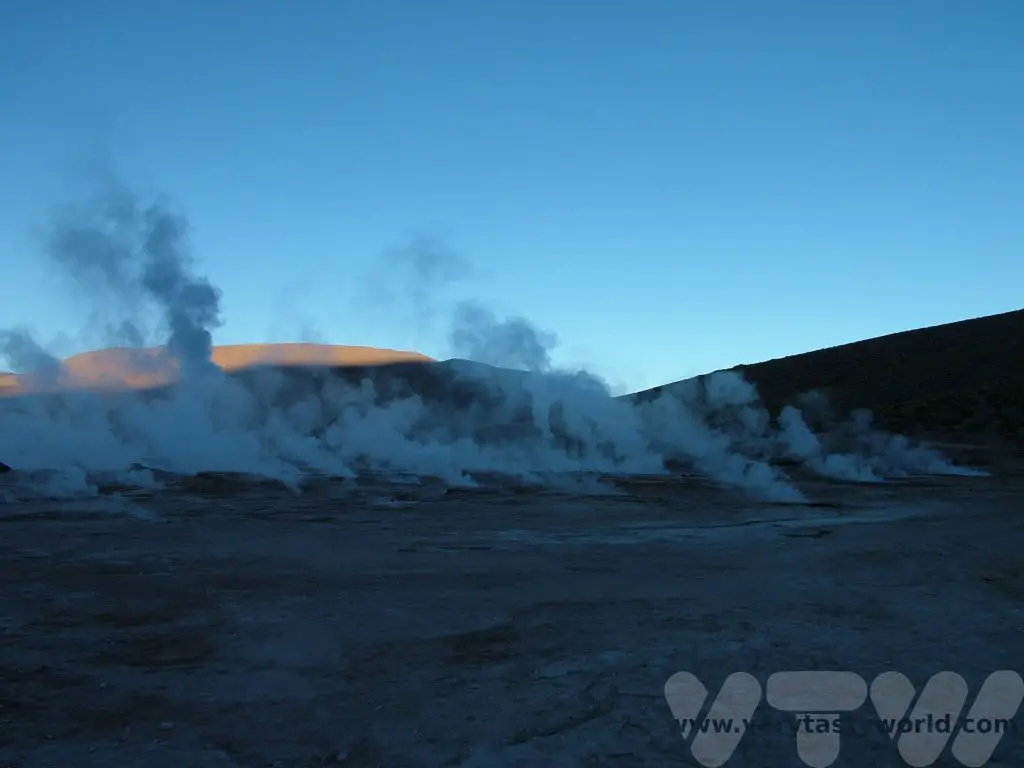
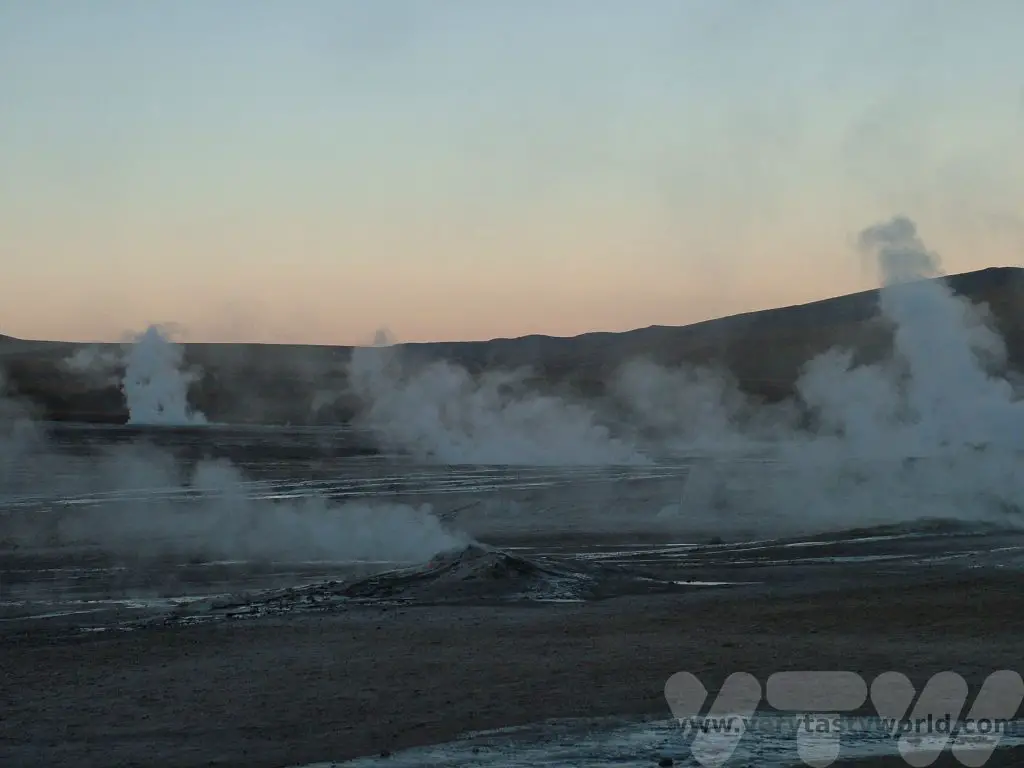
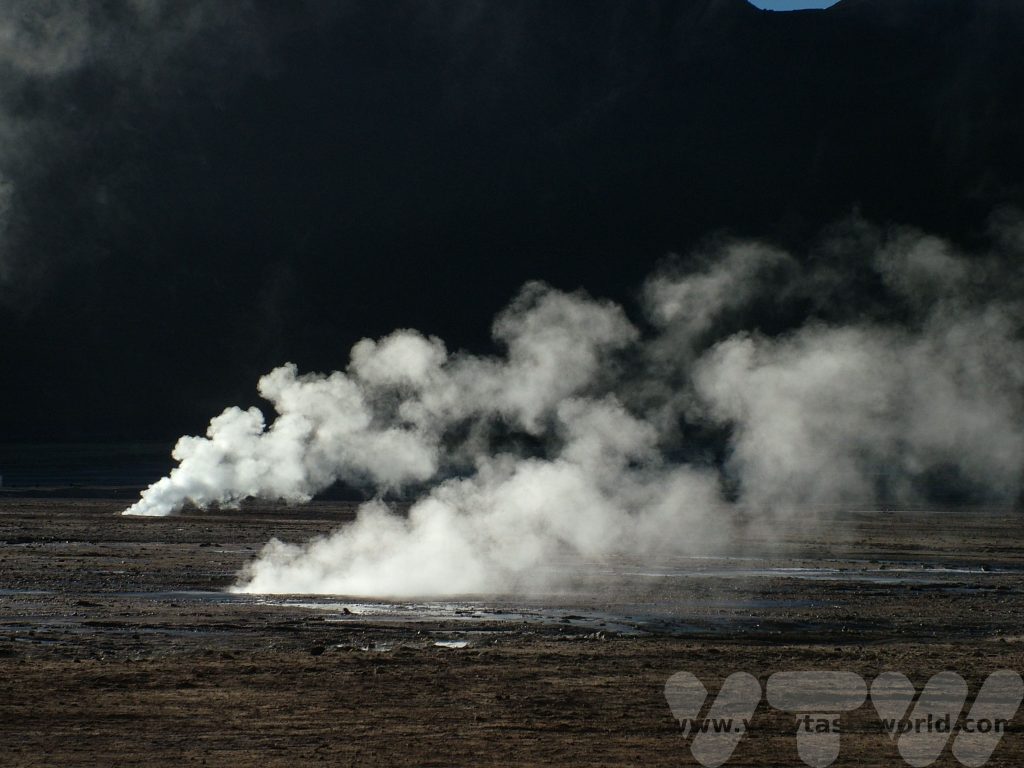
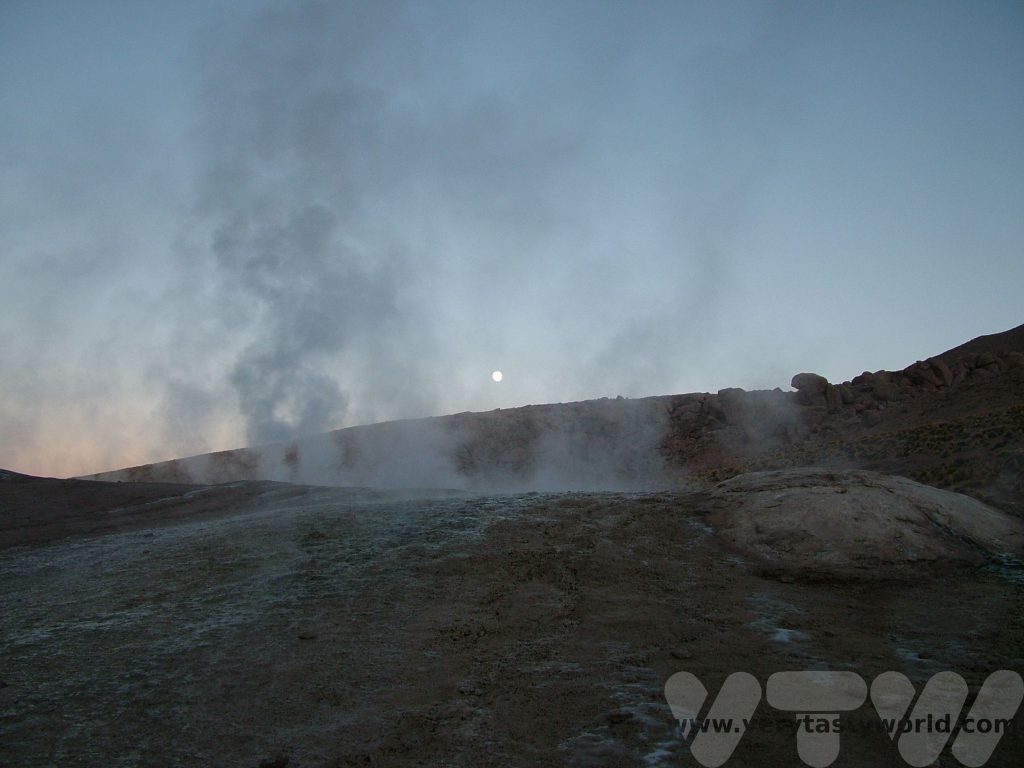
El Tatio is a geothermal field, the third largest in the world, and contains geysers, fumaroles, steam vents, mudpots and hot springs.
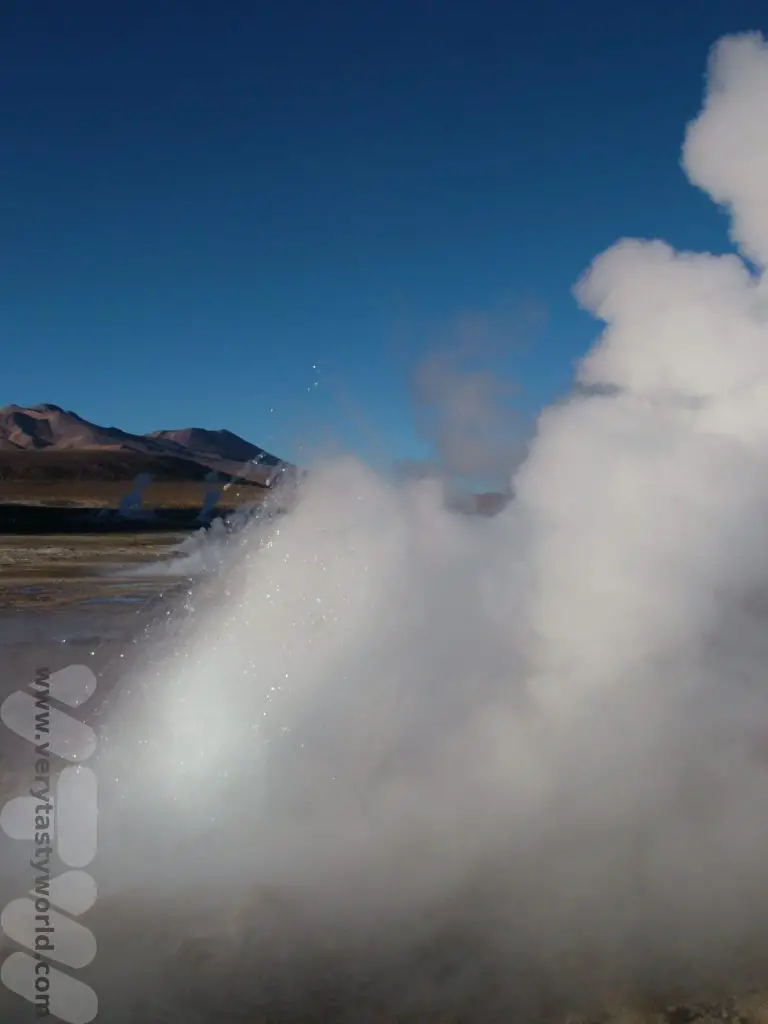
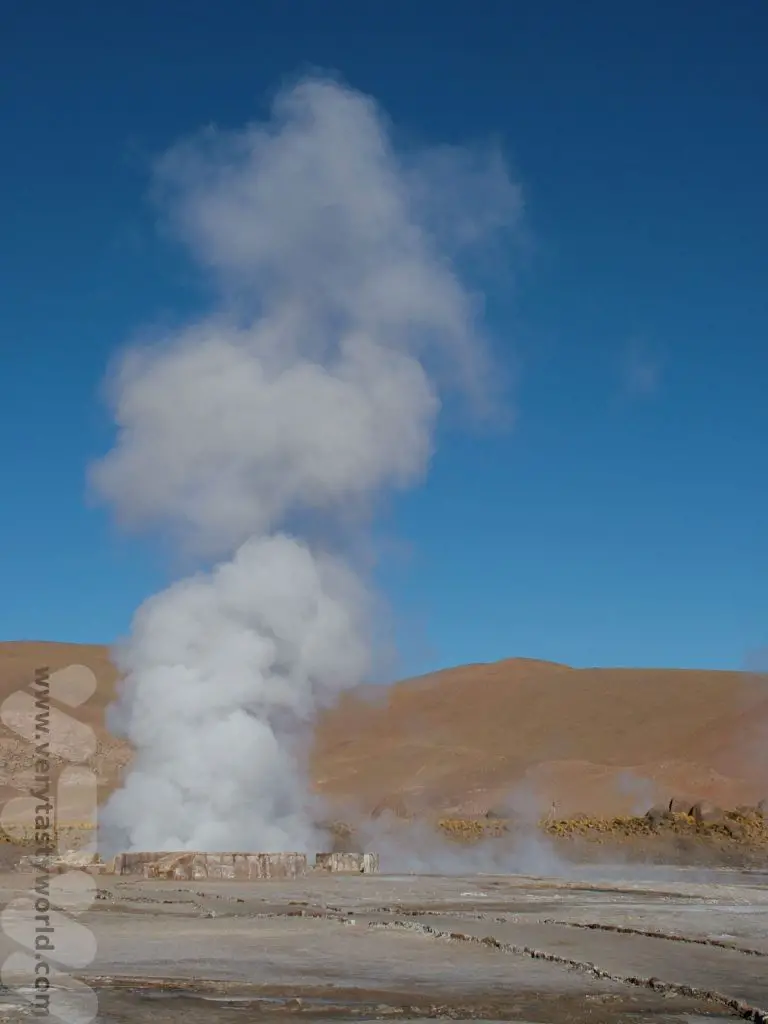
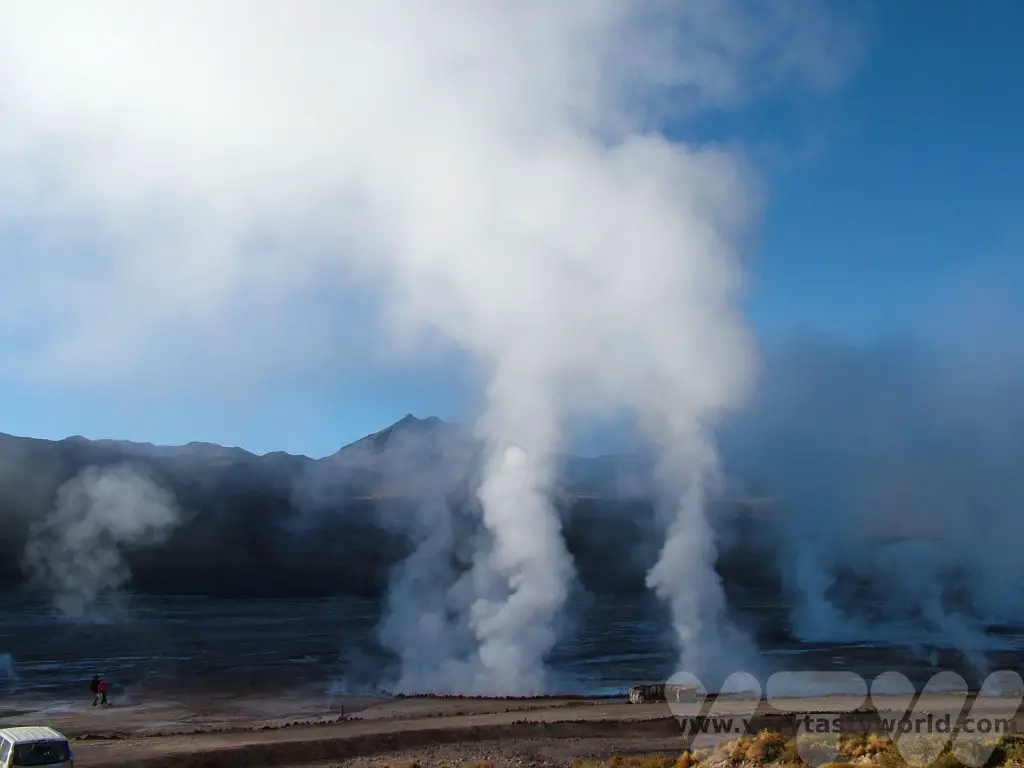
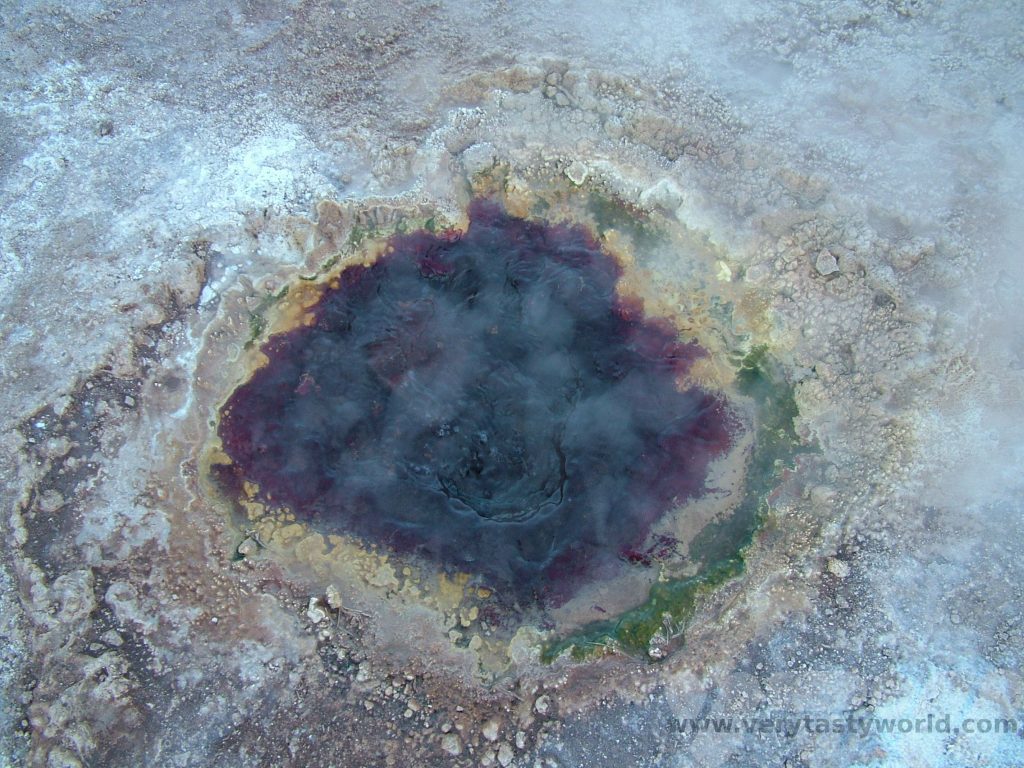
Because the area hasn’t yet been designated a national park (geothermal energy companies tried to harness the energy but didn’t really make a go of it and the area is still vaguely designated as “industrial” rather than a “tourist area”) there are no designated walkways and you can just wander through the geyser field. This means that you can actually stand in a geyser – great if your feet are feeling a little chilly! You have to be careful though – the earth’s crust is pretty thin up there and a number of people have been seriously injured falling through it and getting burned or frozen in a random extreme temperature accident.
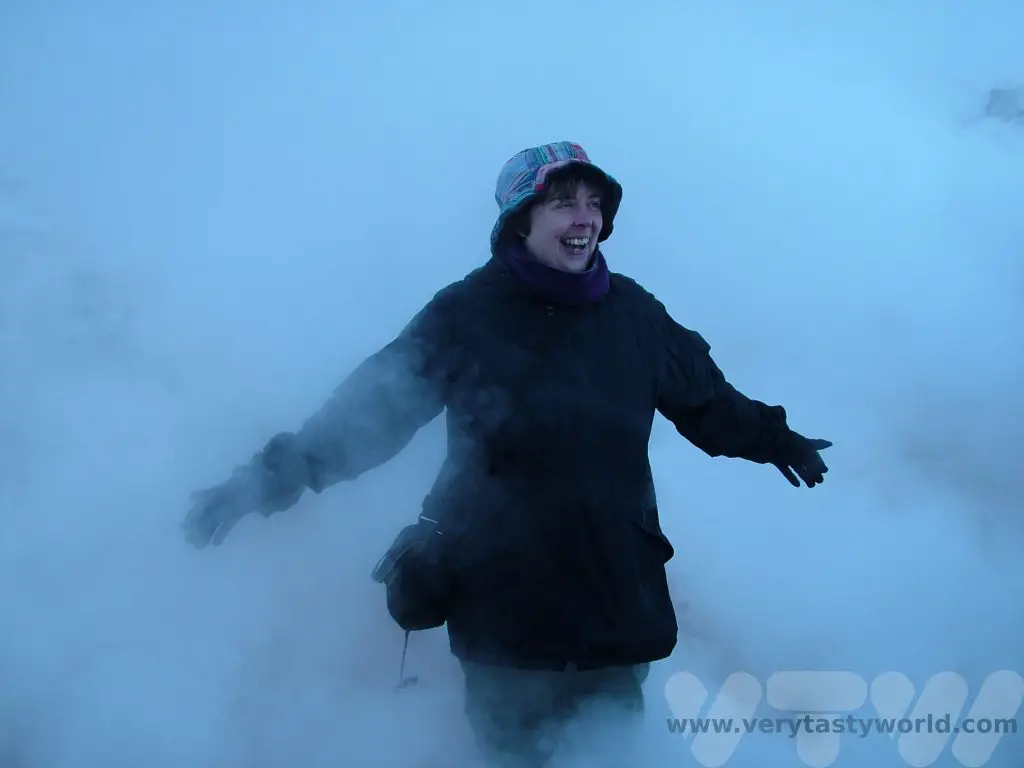
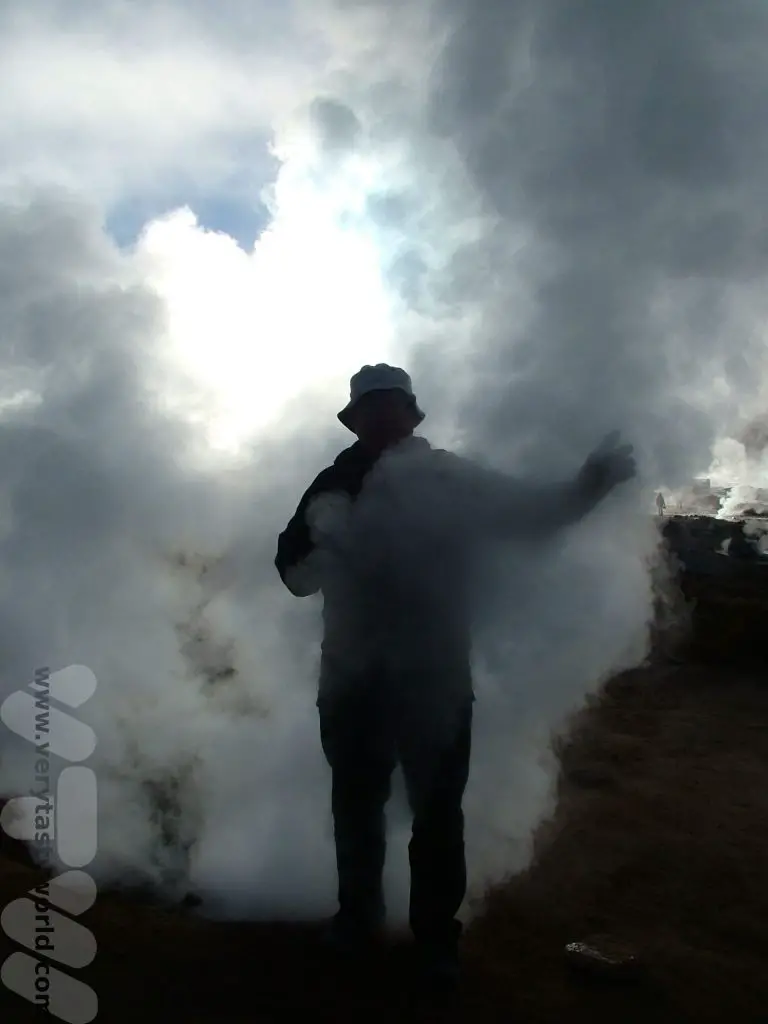
If you bring your bathing suit, and the tour allows time for it, you can go swimming in the geothermal hot springs.
The surrounding area is very beautiful as well. Most tours will offer a leisurely journey back, stopping off at various sites.
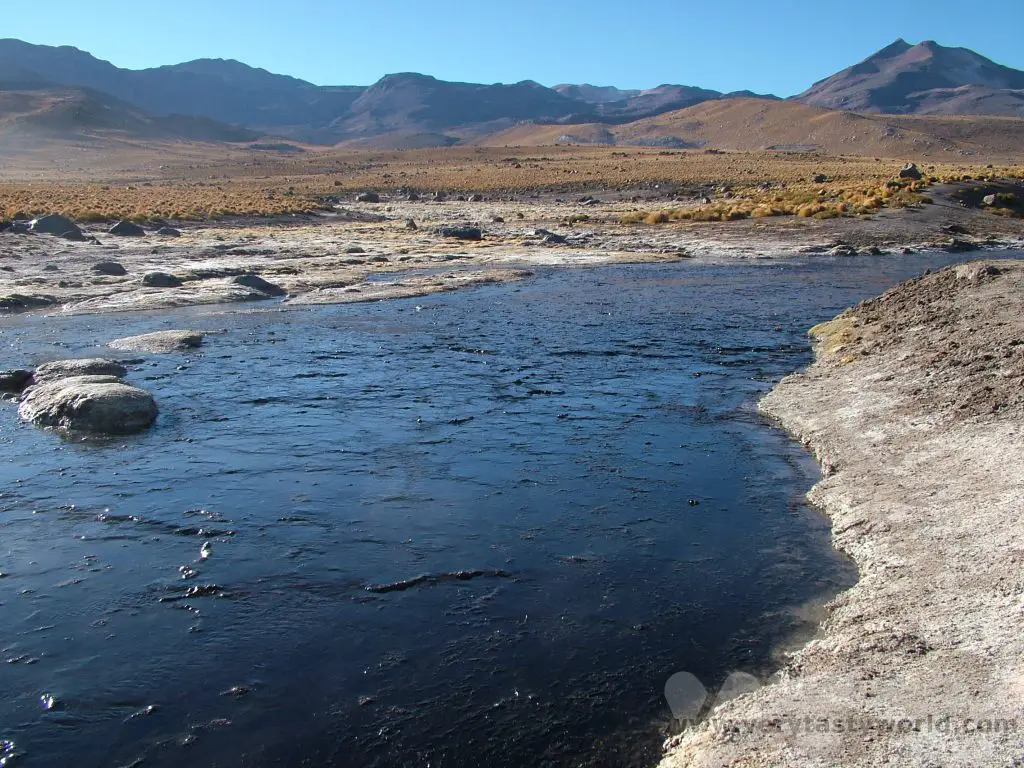
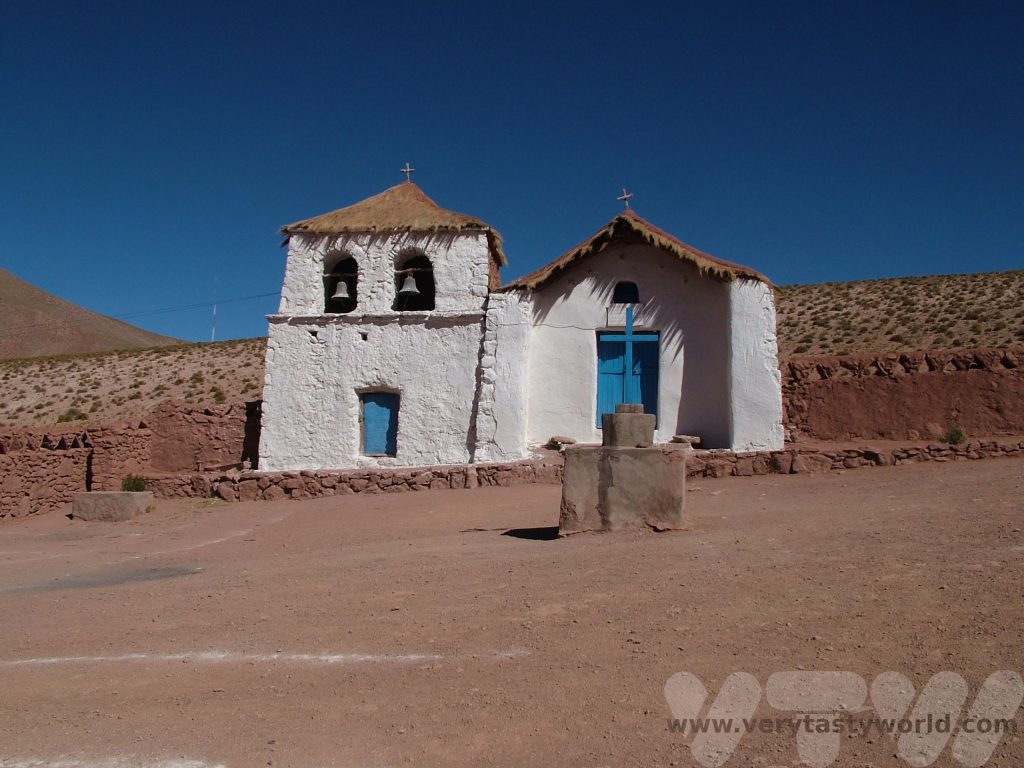
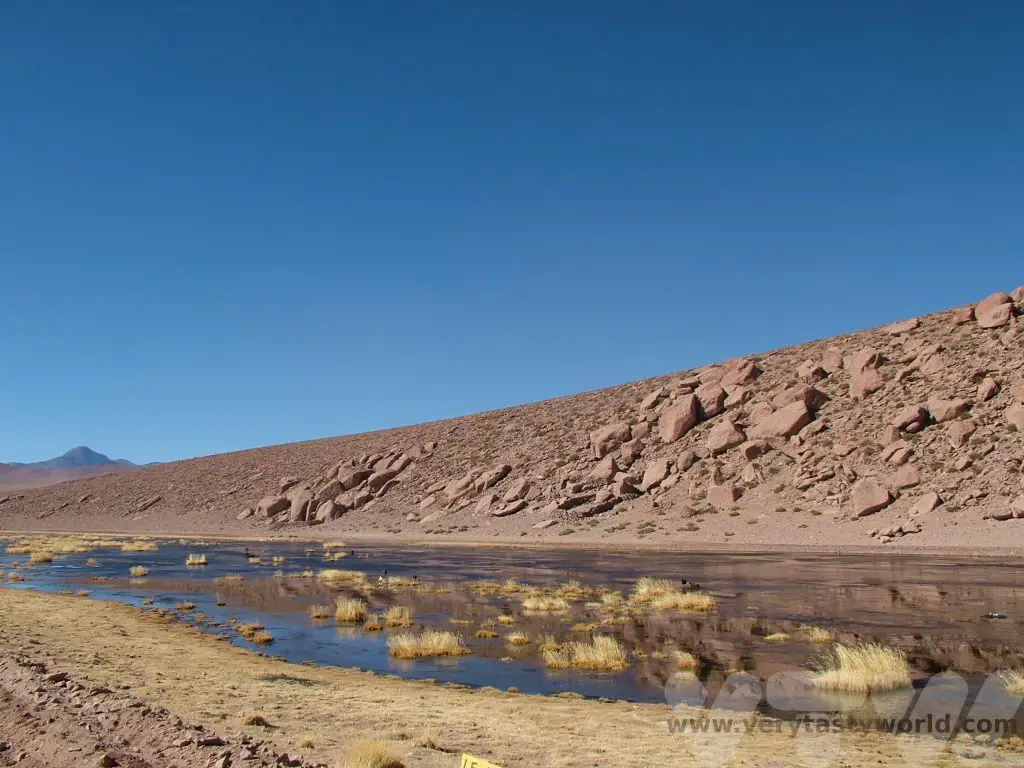
Llama kebab barbeques are available if you want a late breakfast.
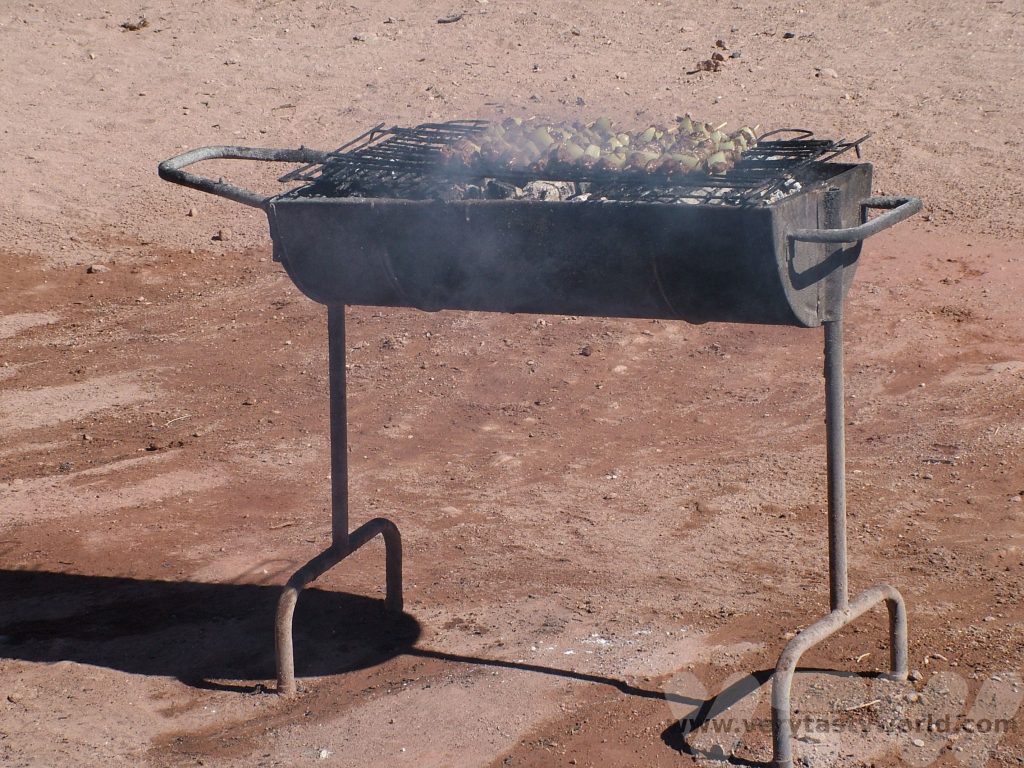
The cactus forest is also worth a visit.
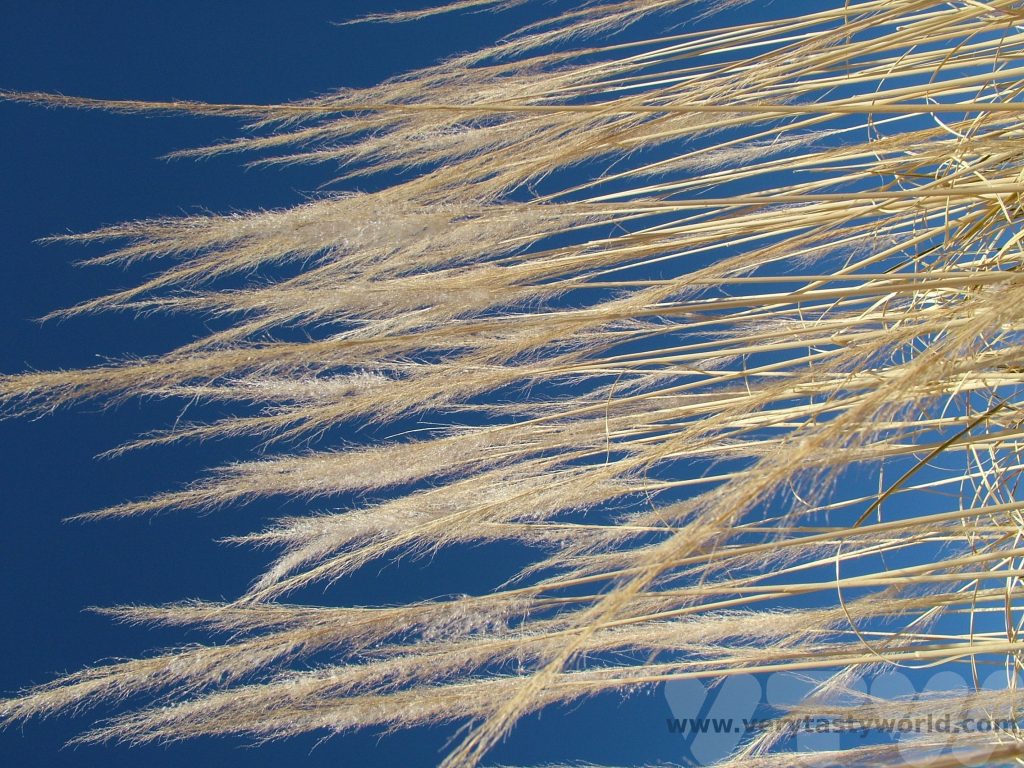
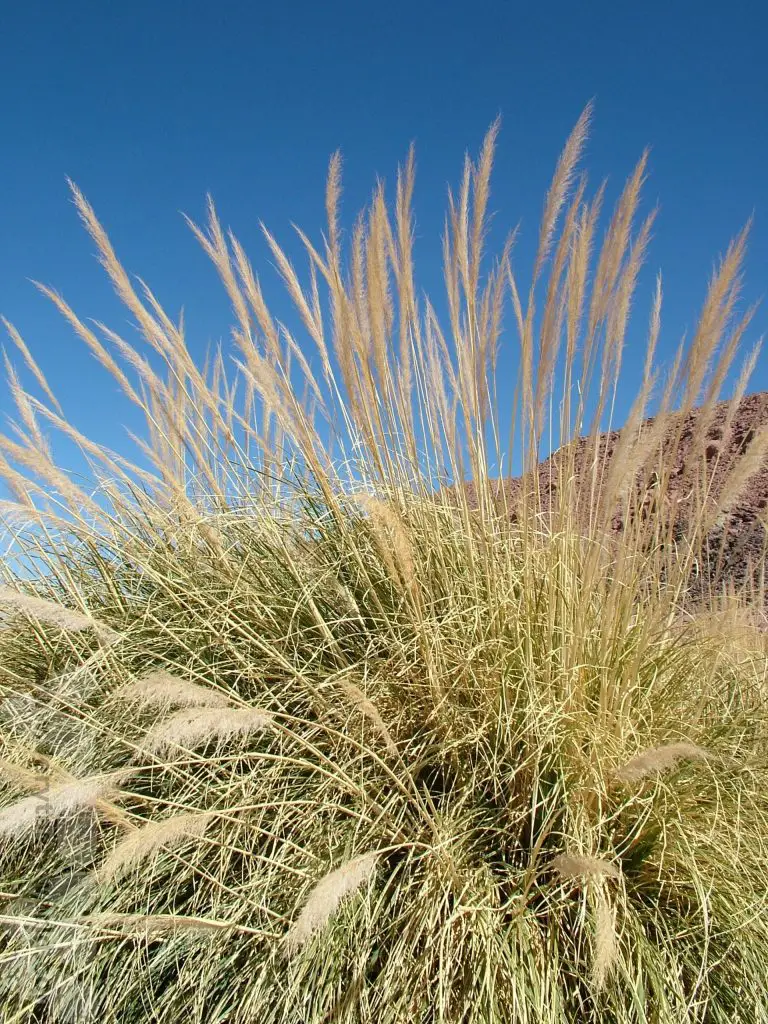
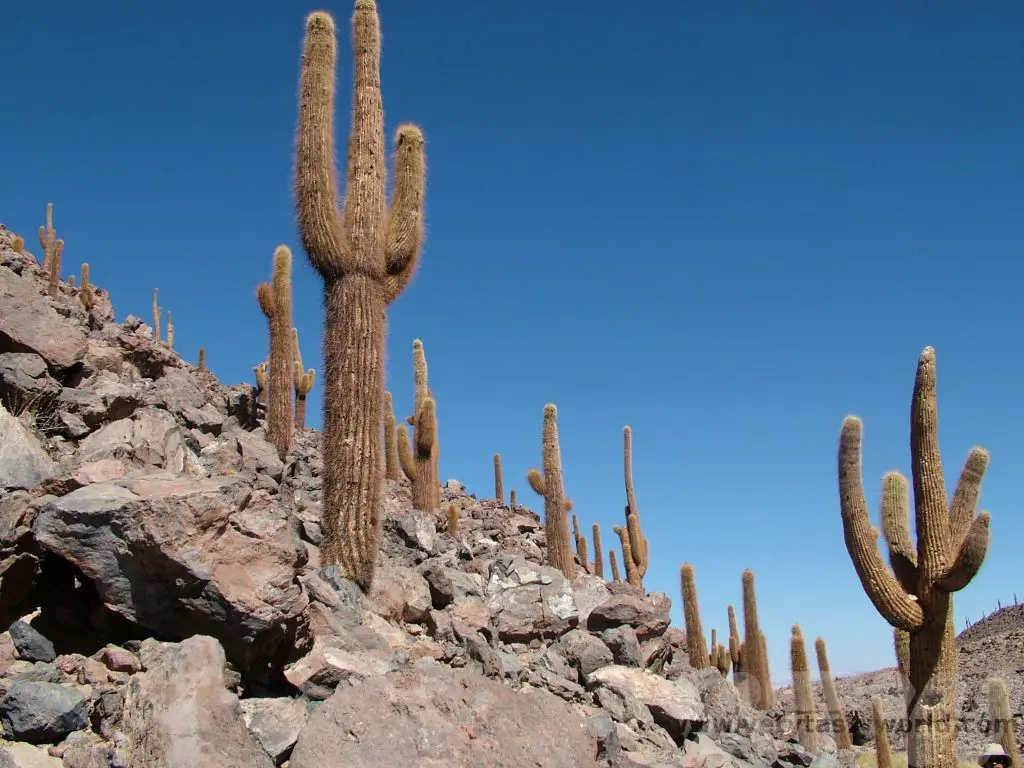
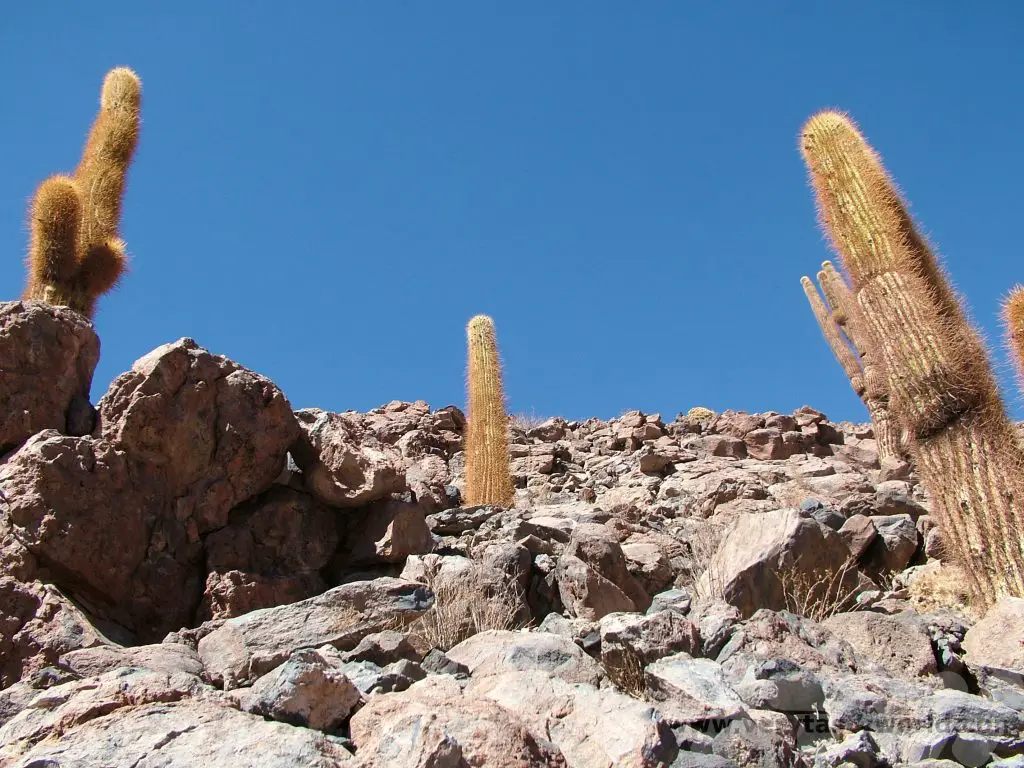

- Rivers and Rainforests – A Guyana Itinerary
- Best Time To Visit Machu Picchu 2024 Update
- A 2 Week Patagonia Itinerary
- Day of the Dead in Campeche
- A Galapagos Land Based Itinerary
- RECIPE: How to Make Costa Rica’s Gallo Pinto
- A Tasty Puebla Food Tour
- Costa Rica Wildlife Sanctuary – Caño Negro
- Visit Torres del Paine National Park in Patagonia

